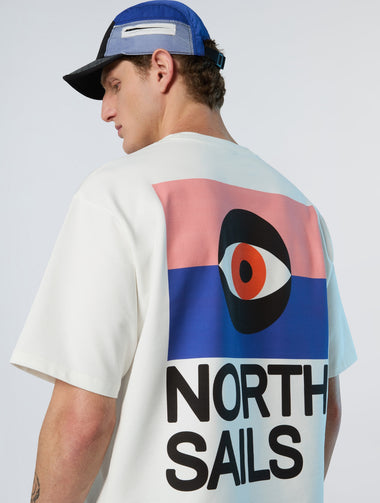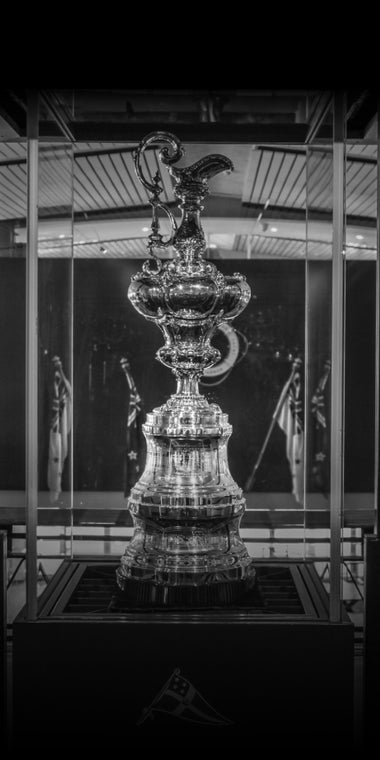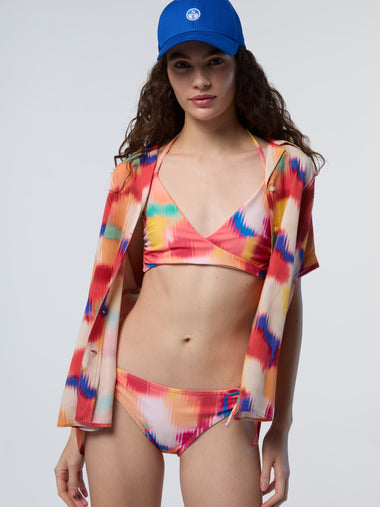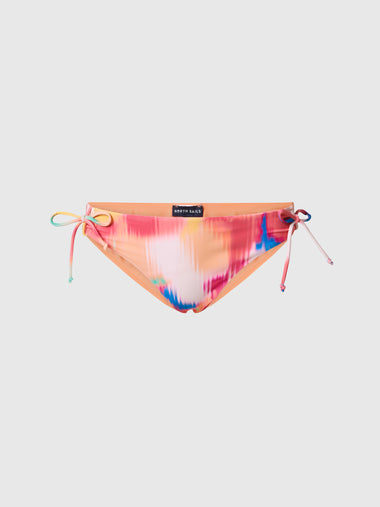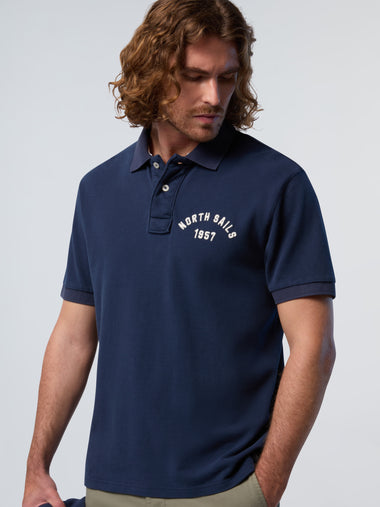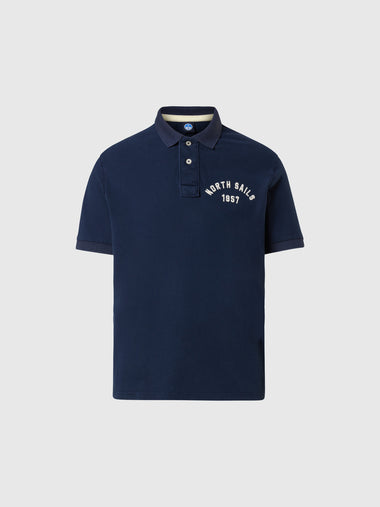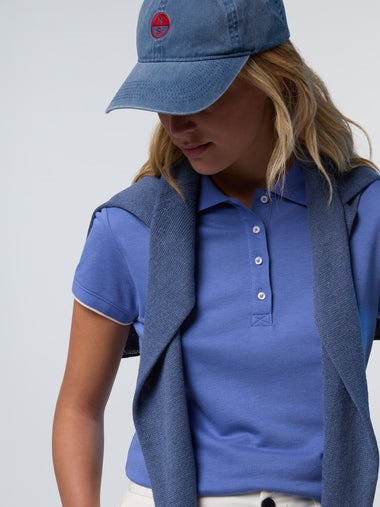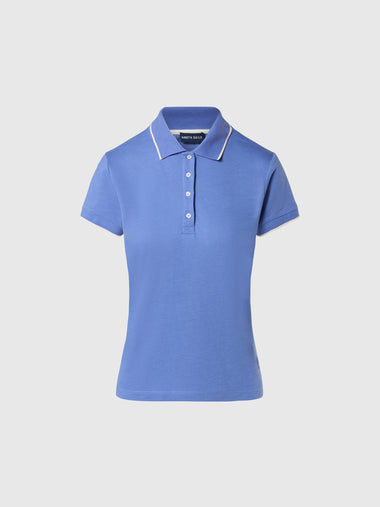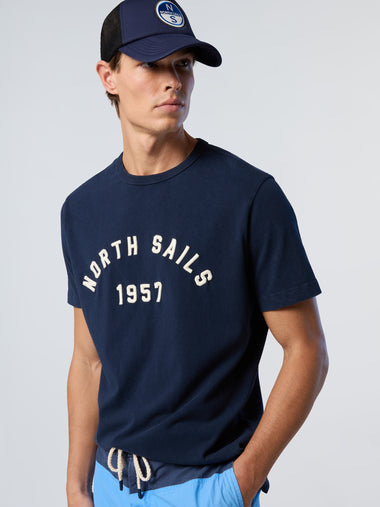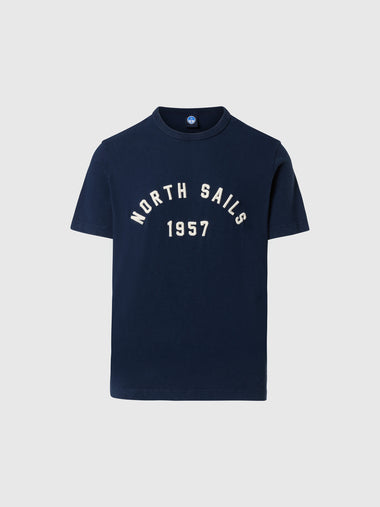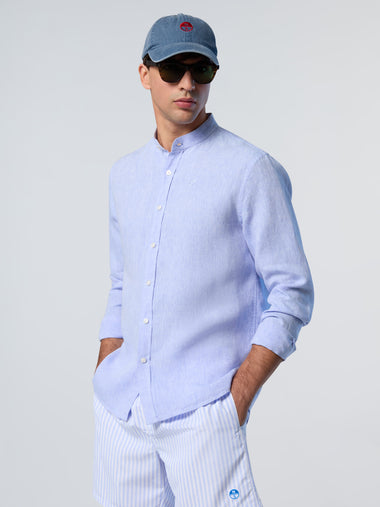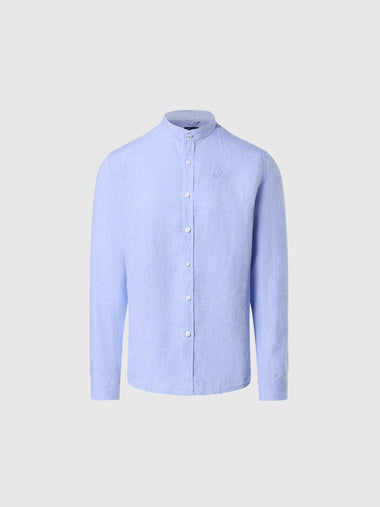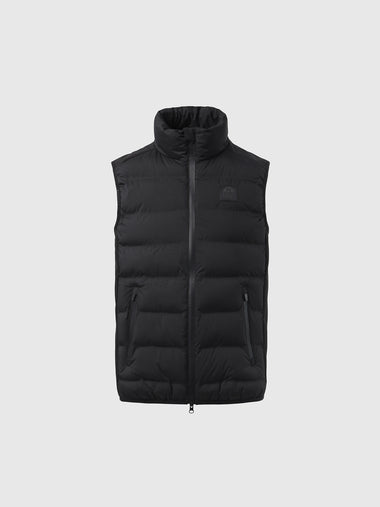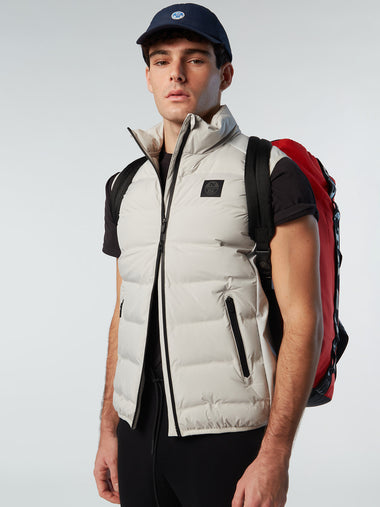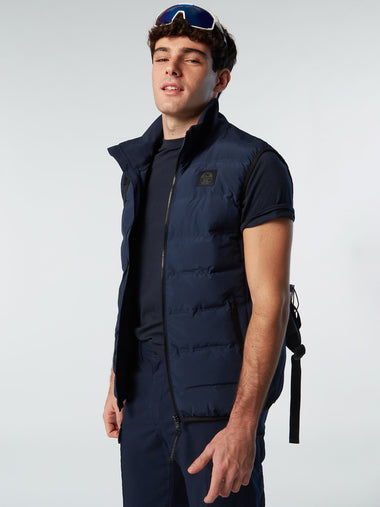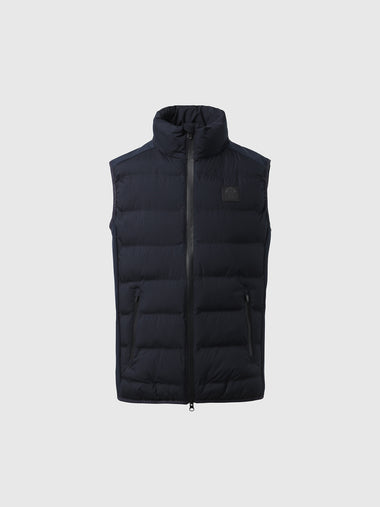NORTH SAILS BLOG
All
Events
Guides
News
People
Podcast
Sustainability
Tech & Innovation
Travel & Adventure
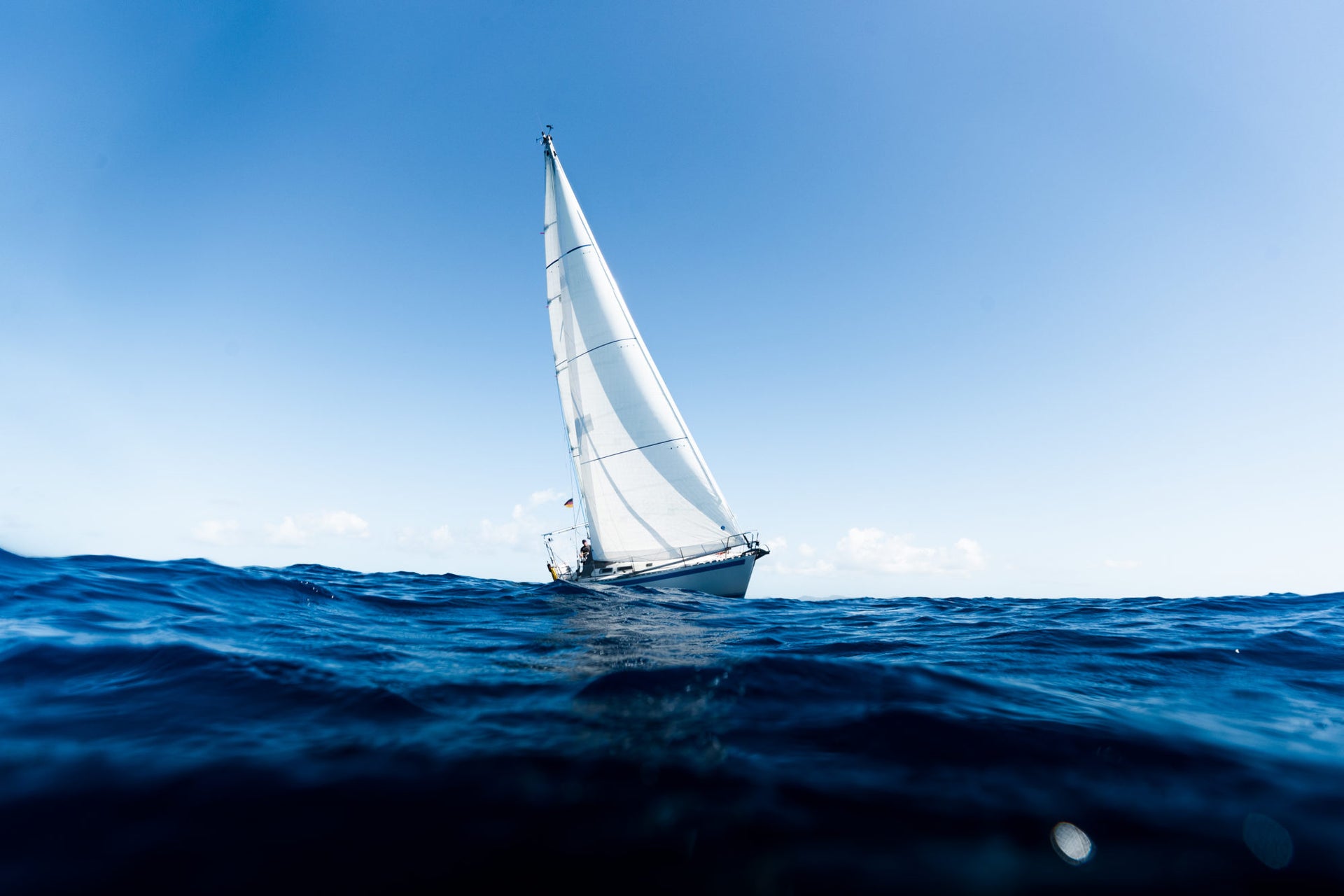
LES MEILLEURES VOILES DE CROISIÈRE
LES MEILLEURES VOILES DE CROISIÈRE
North Sails a une option pour tous les croisiéristes
Découvrez les différences entre les voiles de régate et les voiles de croisière, ainsi que les options qui s'offrent à vous pour trouver la voile qu'il vous faut.
Les voiles de régate et les voiles de croisière sont-elles identiques ? Non. Ici, nous allons considérer tous les matériaux des voiles de croisière North. Une fois que vous avez défini votre programme de navigation, les options seront plus faciles que vous ne le pensez. Gardez à l'esprit que vous n'avez pas à faire ces choix tout seul : nos experts North Sails sont prêts à vous aider dans votre sélection. Et pour prolonger la durée de vie de vos voiles, découvrez les meilleurs conseils d'entretien à ajouter dans votre routine d'utilisation.
NOUVEAU GENNAKER HELIX POUR CROISIÉRISTES : Manœuvres simplifiées, plaisir accru et performance accessible pour tous
En cette année 2021, North Sails lance un tout nouveau produit sur le marché de la croisière, le Gennaker Helix sur enrouleur, qui vient étoffer sa gamme de voiles Helix sans câble anti-torsion.
Exclusivement conçu pour les croiseurs et doté d’un guindant Helix structurel, ce Gennaker innovant met l’accent à la fois sur la simplicité d’utilisation et la fiabilité pour naviguer en toute liberté, sécurité et détente.
La nouvelle voile s’affranchit du poids excessif du câble de guindant traditionnel, diminuant ainsi les charges à l’enroulement et facilitant les manœuvres. Libérée de son câble anti-torsion, la voile se projette plus facilement au vent et génère une force propulsive plus importante pour pousser le bateau vers l’avant. Elle couvre également une large plage de conditions de vent aux allures portantes pour naviguer plus longtemps sans changer de voile et réduire le nombre de voiles embarquées à bord. Lire la suite
Quel matériau dois-je choisir ?
Pour les voiles à panneaux sur les bateaux de croisière, nous proposons les voiles NPC CROSS-CUT, NPC RADIAN, NPL SPORT et NPL TOUR. Dorénavant, nous avons également un nouveau type de voiles moulées 3Di ; notre ligne 3Di OCEAN se compose de trois types de matériaux 3Di, conçu pour des bateaux de tailles différentes : OCEAN 330, OCEAN 370, et OCEAN 700. Et n'oublions pas que la ligne 3Di ENDURANCE représente une zone ""polyvalente"" avec des voiles bien adaptées à la fois à la croisière et à la régate.
Et puis il y a les nylons tissés, les laminés, et les options 3Di Downwind à considérer quand on envisage le remplacement d'un spinnaker asymétrique ou symétrique.
Que vous soyez propriétaire d'un voilier de 22 pieds ou d'un yacht de 22 mètres, l'astuce consiste à travailler avec votre expert pour affiner rapidement les choix de tissu en fonction de vos besoins. Le processus consiste à décider exactement ce qui vous convient le mieux en termes de matériau, de LP, de la valeur du rond de chute, de configuration des lattes, de nombre de ris, de couleur, etc. Cela peut et doit être amusant.
Les éléments que vous devez prendre en compte pour réduire vos options :
Votre budget.
Vos attentes quant à la durée de vie d'une voile.
Vos attentes quant à la facilité et la manipulation d'une voile.
Votre désir de réduire le poids de la voile tout en respectant les critères ci-dessus.
Voiles à panneaux
Si l'on s'en tient pour l'instant aux matériaux des voiles de près et que l'on commence par les voiles à panneaux, le point de départ est le polyester tissé, souvent appelé "Dacron". Le fil de polyester est un bon matériau polyvalent pour les bateaux de petite et moyenne taille. Il résiste aux dommages causés par l'exposition aux UV. Il est solide. Et le prix d'une voile en Dacron se situe dans le bas de la fourchette. Résumons en quelques points :
NPC CROSS-CUT - Coupe Horizontale en Dacron
Budget : lorsque le prix doit être aussi bas que possible, une voile NPC Cross-Cut est le bon choix.
Durabilité : ces voiles résistent bien même après plusieurs saisons d'utilisation intensive.
Tenue de la forme de la voile : change beaucoup avec les heures d' utilisation.
Poids : Ces voiles ne sont pas légères. C'est un problème peu important sur les petits bateaux, mais très perceptible lorsque la taille augmente.
NPC RADIAN - Coupe Orientée en Dacron
NPC RADIAN est une version haut de gamme de la voile à panneaux en dacron. Les panneaux sont orientés, ce qui confère une bonne amélioration de la tenue de la forme de la voile.
Budget : le prix de la Radian est un peu plus élevé que celui de la NPC Cross Cut.
Durabilité : ces voiles restent en une seule pièce, même après plusieurs saisons d'utilisation intensive.
Tenue de la forme de la voile : assez bonne à l'état neuf, mais attendez-vous à un changement de forme avec l'âge.
Poids : plus léger qu'une voile NPC Cross-Cut. Non disponible pour les grands bateaux.
NPL - Coupe Orientée en tissu laminé
Si l'on s'en tient aux matériaux des voiles de près et des voiles à panneaux, le niveau suivant est le tissu laminé (en langage North, "NorLam"). Les laminés offrent la possibilité de réduire le poids de la voile, d'améliorer la tenue de la forme et d'incorporer des fibres à haut module (faible étirement) et à haute ténacité (résistance). Lorsqu'il est conçu et fabriqué correctement, il est très durable, tout en contribuant à maintenir le poids de la voile à un niveau raisonnable et en offrant de très bonnes performances en matière de forme de la voile.
NPL TOUR & TOUR ULTRA
"Les modèles Xi Cruise sont destinés aux bateaux de croisière de taille moyenne qui recherchent à la fois un prix modéré et des performances de navigation accrues. Les styles Xi Cruise présentent des couches extérieures tissées en polyester entourant un film de polyester et une fibre aramide (haut module) à l'intérieur. Les couches extérieures protègent le fil d'aramide, tandis que la teneur en aramide réduit le volume et l'étirement.
Budget : prix moyen.
Durabilité : moyenne à élevée.
Tenue de la forme des voiles : très bonne.
Poids : bon. Le gain de poids est très appréciable par rapport au dacron."
NPL TOUR ULTRA – NorLam Ultra X
Les voiles Ultra X sont disponibles pour les bateaux de croisière de taille moyenne à grande. La principale différence entre le Xi Cruise décrit ci-dessus et l'Ultra X est l'utilisation de la fibre UltraPE dans l'Ultra X. L'UltraPE offre des performances de fibre quasi idéales, avec un module et une ténacité très élevés, ainsi qu'une robustesse et une résistance à l'environnement remarquables. Dans le tissu laminé, nous tissons l'UltraPE et nous introduisons une grande quantité de cette fibre dans le tissu. Cette approche n'est pas très économique, mais elle permet d'améliorer les performances et de prolonger la durée de vie des voiles.
Budget : niveau de prix un peu plus élevé.
Durabilité : excellente.
Tenue de la forme de la voile : très bonne.
Poids : moyen.
NPL SPORT – NorLam Ultra XC
"Prenez tout ce qui a été dit plus haut sur le Norlam Ultra X, et ajoutez la fibre de carbone. Supposons que tout le monde connaît la fibre de carbone de nos jours, étant donné son omniprésence dans les voitures de course, les vélos qui semblent ne peser presque rien, les bateaux de 80 pieds ultra légers, et à peu près tous les produits à haute performance qui semblent ne peser presque rien. Depuis plus de vingt-cinq ans, North Sails utilise de l'UltraPE et de la fibre de carbone pour fabriquer des voiles de croisière destinées à de grands bateaux, et les résultats sont toujours aussi remarquables.
Budget : niveau de prix élevé.
Durabilité : excellente.
Tenue de la forme de la voile : très bonne, approchant l'excellence.
Poids : moyen (plus léger que l'Ultra X, mais il faut beaucoup de fibres pour le long terme).
Et maintenant… en 3D!
Nous avons récemment établi une ligne complète de produits 3Di fabriqués pour les bateaux de croisière sous le nom de OCEAN. Un élément clé de cette ligne a été l'introduction d'un nouveau type de ""matériau"" 3Di appelé 3Di OCEAN 370. Examinons un peu plus en détail ce qui fait que le 3Di OCEAN convient parfaitement à la croisière.
Tout d'abord, si vous ne comprenez pas bien les différences entre les voiles 3Di et les voiles en panneaux, jetez un coup d'œil à notre page sur les matériaux pour plus d'informations. Le 3Di représente un changement de technologie dans la fabrication des voiles. Il s'agit d'une méthode de production révolutionnaire et donc plus coûteuse.
Pour les croisiéristes, cette complexité présente des avantages évidents : une meilleure tenue des formes pour des voiles plus légères, tout en améliorant la durabilité. Tous les navigateurs de croisière doivent-ils pour autant oublier les voiles à panneaux, étant donné la supériorité technique du 3Di ? Non. Les voiles à panneaux restent un choix viable pour toutes les raisons mentionnées ci-dessus et, en fonction de vos priorités et de votre budget, restent une bonne option pour de nombreux navigateurs.
3Di OCEAN 330
"Conservez les avantages du NORDAC décrits ci-dessus et améliorez-les grâce à la technologie 3Di - c'est OCEAN 330. Appelé à l'origine 3Di NORDAC, OCEAN 330 tire le meilleur parti de la fibre polyester dans les voiles de près.
Budget : prix moyen selon les normes des voiles ""dacron"", bas selon les normes 3Di.
Durabilité : excellente.
Tenue de la forme de la voile : bonne (très bonne, sinon excellente, selon les normes des voiles en polyester tissé).
Poids : moyen.
3Di OCEAN 370
OCEAN 370 associe l'UltraPE au polyester, ce qui augmente considérablement la résistance tout en améliorant les performances à l'élongation. Lorsque les charges dans les voiles sont élevées ou si les voiles sont destinées à une utilisation intensive il n'y a pas d'autre alternative que l'Ocean 370. L'OCEAN 370 va là où l'OCEAN 330 n'est pas viable - elle le fait de manière rentable, tout en équilibrant performance de navigation et durée de vie prolongée.
Budget : moyen.
Durabilité : excellente.
Tenue de la forme de la voile : très bonne par rapport aux voiles de croisière directement concurrentes.
Poids : moyen.
3Di OCEAN 700
OCEAN 700 est une solution de croisière performante idéale pour les grands bateaux dotés de voiles très sollicitées. L'UltraPE est le principal type de filament/fibre, l'aramide étant judicieusement introduit dans les zones de charge maximale de la voile. Robuste, peu extensible et conçu pour offrir de nombreuses années de navigation, OCEAN 700 est la référence en matière de croisière pour les bateaux de taille moyenne et les superyachts.
Budget : moyen.
Durabilité : excellente.
Tenue de la forme des voiles : très bonne.
Poids : moyen.
Cela décrit notre gamme complète de voiles de croisière. Votre équipe North Sails ont l'expertise nécessaire pour vous guider vers la voile qui vous convient le mieux au sein de cette large gamme. Si vos plans incluent une part de course en plus de la croisière, les voiles de la série 3Di ENDURANCE se situent dans l'enveloppe de performance forme/poids de voile que les coureurs exigent. Restez à l'écoute pour une mise à jour sur les meilleurs choix de matériaux pour les voiles de vent arrière/de portée, que ce soit en croisière ou en course.
READ MORE
READ MORE
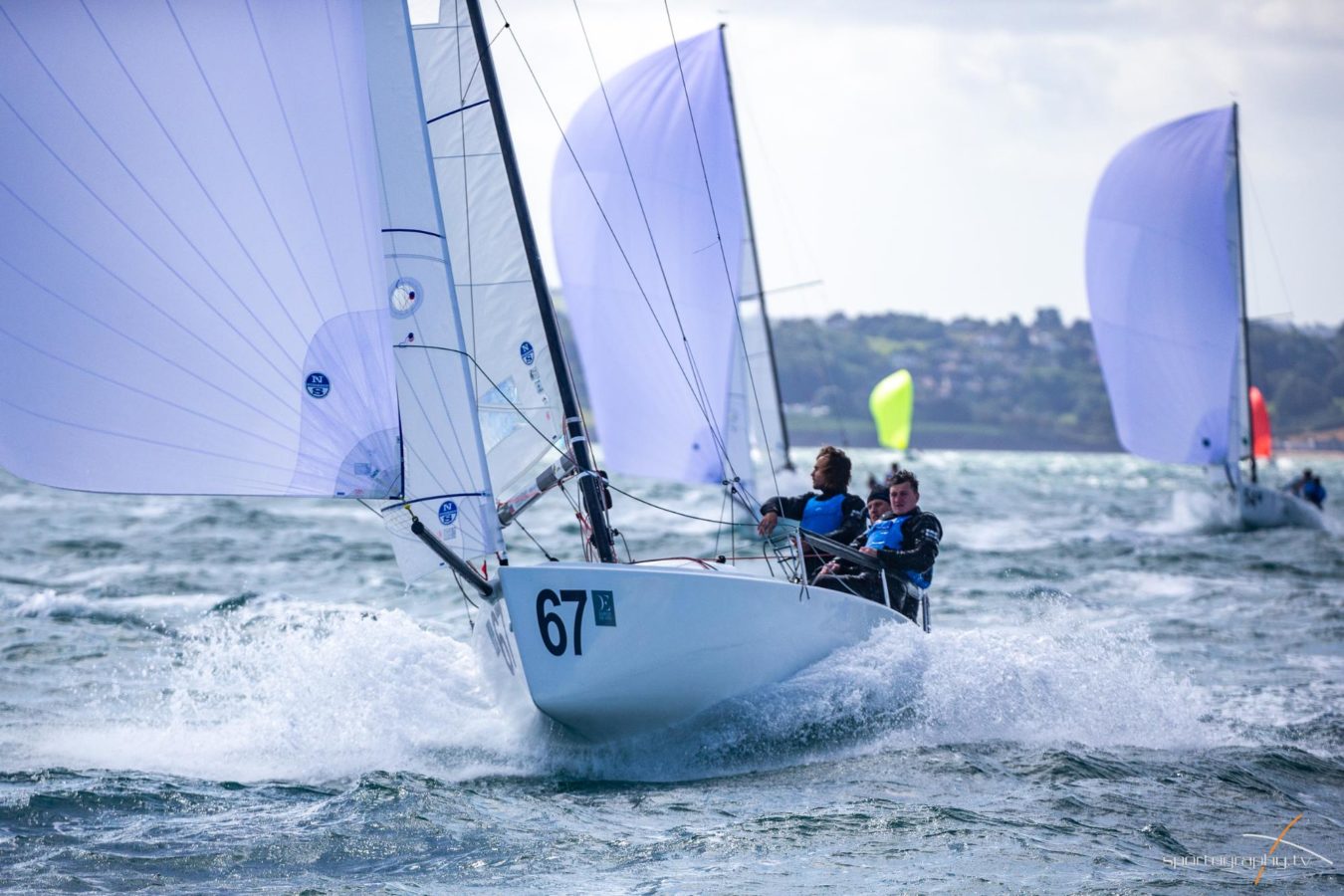
J/70 NORTH AMERICAN CHAMPIONSHIP TOOL KIT
Bring Your Best Game to the J/70 North American Championship
We are excited to get back out racing again, and we wanted to reshare some of our favorite articles and webinars before you head to Annapolis for the J/70 North American Championship. This Tool Kit covers all the bases, including tips on boat speed in light air, how to make the most of our on-the-water coaching, and our updated J/70 Tuning Guide.
On-the-Water Coaching for Everyone
North Sails J/70 Class Expert Eric Doyle will be available on the North coach boat from Tuesday-Thursday offering tips on fine-tuning your sails. Contact Eric in advance to let him know you would like your sails checked.
Contact Eric
Rewind and Rewatch
While we were unable to go sailing, the North Sails team switched their motto to “Let’s Get Faster” and produced a number of J/70-specific webinars that are filled with invaluable information from the top sailors in the class. Don’t leave the docks before watching them all!
Downwind Techniques Downwind Boat Handling
Mainsail Trim Lessons Learned in Miami
Have You Read our New Tuning Guide?
With the introduction of the new XCS-4 Mainsail and J-2+ Jib to our J/70 sail designs, our Class Experts have revised the North Sails Tuning Guide. Countless hours of sailing, testing, and competing in the J/70 fleet have gone into this revised editions which is a must-read before the North Americans.
Learn More
Bitesize Tips for Light Air
Read our easy-to-follow tips on rig tuning, sail trim, and boat trim to help you sail your J/70 faster when the breeze is light.
Learn More
Optimize Your Downwind Performance
Displacement mode, wing-on-wing, or full plane? Understanding the J/70’s different downwind modes will help you make the right move at the right time when racing.
Learn More
Why is Headstay Sag Fast Upwind in Light Air?
What is headstay sag and how can you use it to your advantage to maintain better speed in light-air conditions? One Design expert Tim Healy describes the risks and rewards.
Learn More
North Sails Certified Service Has You Covered
The North Sails Annapolis Certified Service Team is ready for you with overnight sail service and repairs during the regatta. Call Ridgely Mackenzie to arrange a sail pick up on 443-995-7188.
Contact Ridgley
READ MORE
READ MORE
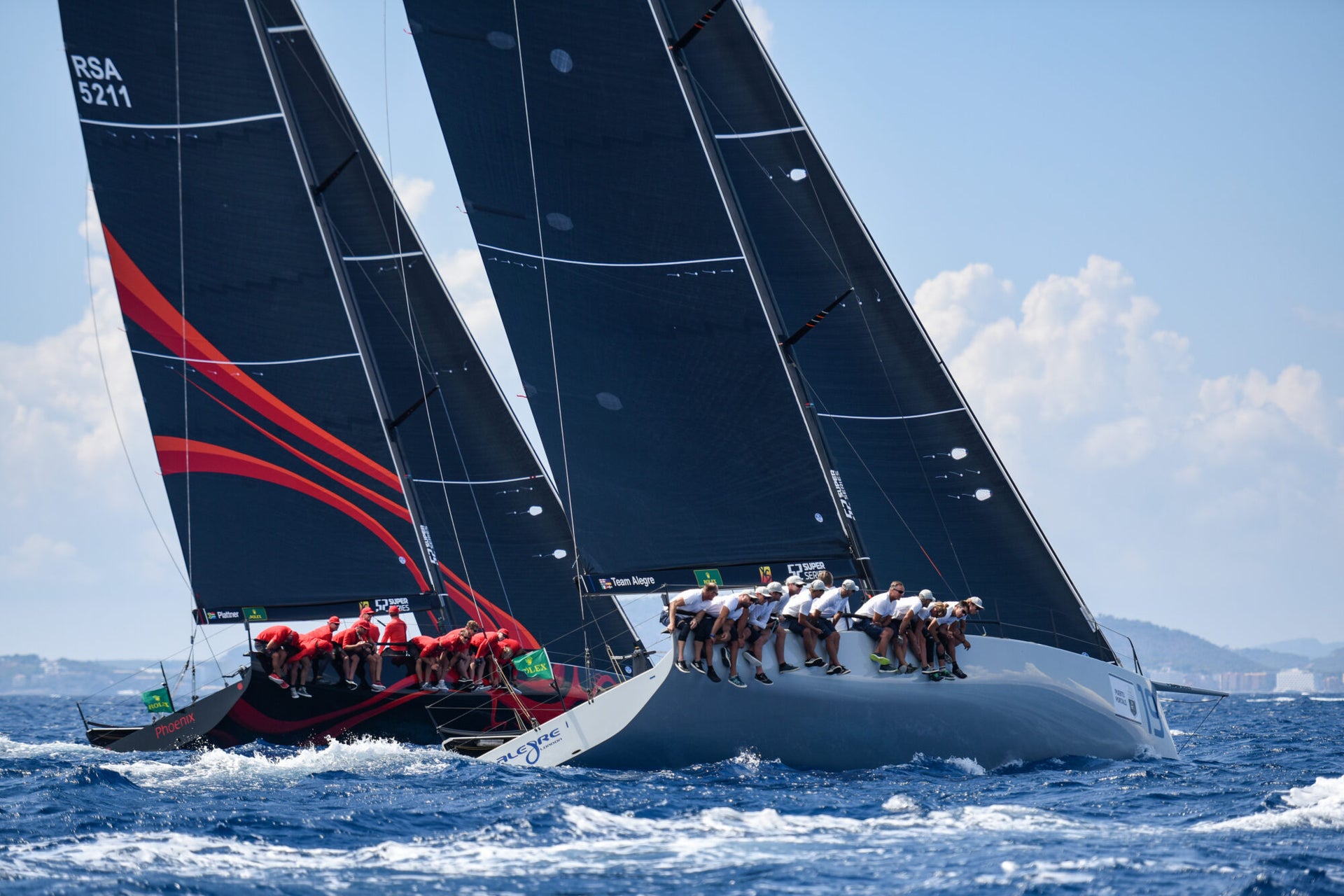
WHAT IS 3Di?
North 3Di has made some of the most prestigious wins in sailing possible. Why? Well, North 3Di is a sailmaking revolution that produces sails that are both high-performance and reliable.
READ MORE
READ MORE
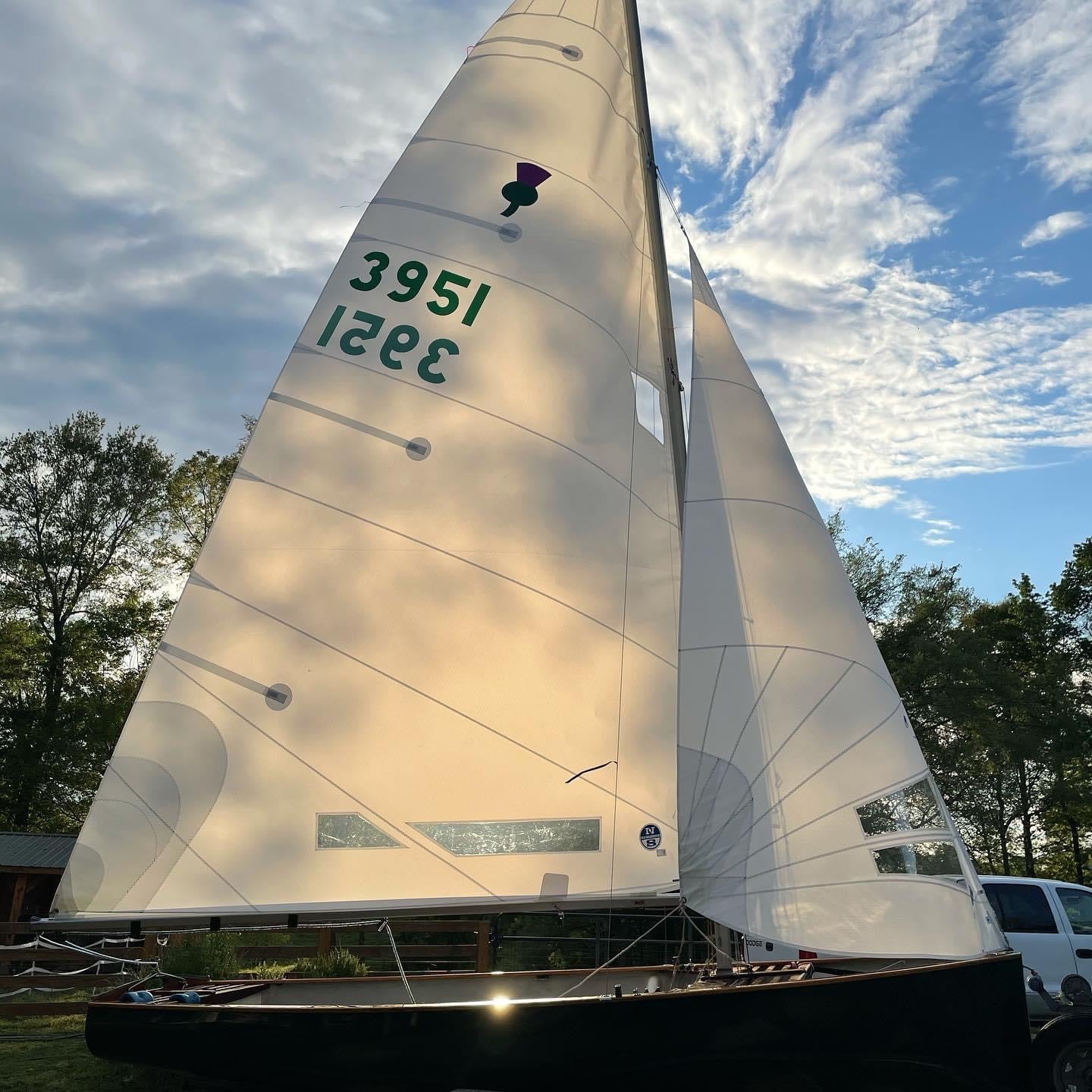
NORTH THISTLE DESIGNS FAST OUT OF THE BOX AT BOTTOMS-UP REGATTA
NORTH THISTLE DESIGNS FAST OUT OF THE BOX AT BOTTOMS-UP REGATTA
Congratulations Mark Gise & Craig Asher
Mark’s brand new set of North Sails, fast out of the box.
The 2021 Bottoms Up Regatta was held this past weekend at Jordan Lake in North Carolina near Raleigh/Chapel Hill. It was a one-day event and with the forecast calling for rain and cool temps, only a few decided to sail.
Ten of the total thirteen teams were powered by North Sails. Mark Gise took the honors using his brand new set of Norths. We caught up with Mark to learn about his victory:
After not sailing for over a year, how did you feel getting back in the Thistle?
The last time I skippered the Thistle was at the Old Salty in October 2019. I sent the boat to Alex Varnegas at Beacon Composites to have it repainted and the bright work refinished. I was excited to get the boat put back together and see what she would do. I had never sailed with my crew, Craig Asher, so we weren’t doing a good job with our tacks and jibes. I had to pick myself up out of the bottom of the boat more than once after a tack. I blame it on the rain and old sailing boots. I have a few bruises to show for it.
You became a first-time North Sails customer recently. What was the deciding factor that made you switch to North Sails?
I’ve had an opportunity to sail with Paul Abdullah and others who use North sails, so I have known what they can do. Honestly, it was the people that made me decide to switch to North. Paul, Scott Griffin, Brad Russell, and others have helped me over the years even though I didn’t use the same brand of sails. Brad was willing to go out on a motorboat and give me some pointers while using a competitor’s sails. Paul and Scott have let me crew with them and take the helm at times to check out the sails. They have always been there to answer questions or discuss rigging.
You showed great speed out of the box with your new Fisher mainsail and DSD jib. How easy was finding speed and pointing for your first time using the sails?
I used the tuning guide and set up the rigging in my front yard. I usually sail light, so I set the diamonds on the looser side. The mast is raked at 27′ 0″ and the forestay is at 24.5 on the loose pro gauge. I have a little more prebend than what the tuning guide calls for but it didn’t seem to hurt my speed. Probably because we were light. The conditions were on the light side but we had good speed and pointed well. Being that it was light and raining, it wasn’t the best conditions to test the new sails but I was very pleased with our speed and pointing.
What regattas will you be attending in the near future?
I will be going to the Dixie Regatta and will have to take a look at the schedule to see what events are coming up prior to the Nationals.
Add North power to your Thistle program. Contact our experts today.
SHOP THISTLE SAILS
READ MORE
READ MORE
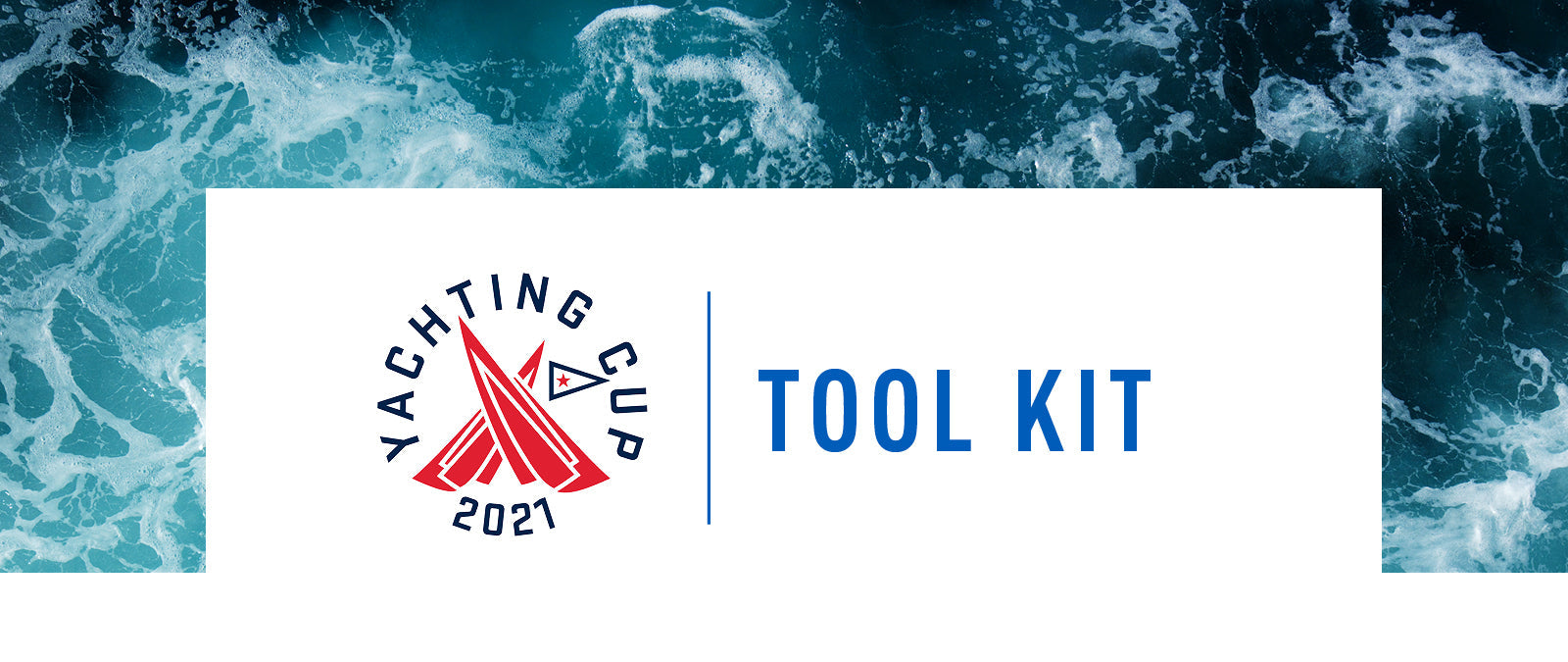
YACHTING CUP TOOL KIT
The Yachting Cup, San Diego's premier inshore regatta of the season kicks off this weekend with two great days of racing for one design and PHRF classes. Read our tips on steering off-wind, perfecting your symmetrical jibes, choosing the right kite, and more.
Don’t forget to join your local North Sails team for the Yachting Cup Webinar on April 29th for local knowledge tips, a quick weather outlook, performance and trim solutions, and a preview of what to expect this weekend.
Sail fast and have fun!
Coordinating Commands
Steering off the wind, on reaches and runs, requires a coordinated effort between helmsman, spinnaker trimmer, and tactician. Together you can coordinate efforts to take advantage of changes in conditions.
LEARN MORE
Tips for Jibing the Pole
No matter how big your boat and crew, the key to perfect jibes is a lot of practice. There are two basic symmetrical jibing techniques, but regardless of method, practice is a key ingredient to develop the coordinated effort that lies behind any smooth jibe.
LEARN MORE
When You Know, You Know...
No matter where you are in the world, you can prepare for your next event or be ready for when sailing season picks up again by knowing what to look for when it comes to a healthy spinnaker.
LEARN MORE
Tips for All Weekend Warriors
Sail experts Tom Castiglione and Jack Orr based in Milford, Connecticut hosted a PHRF Spring Refresher webinar that will help any weeknight racer/ weekend warrior up-their game for the next series. Here are some take aways from the webinar that apply to any club racer.
LEARN MORE
Asymmetric vs. Symmetric
When it comes to downwind sails, there are an array of choices for today’s sailor. So how do you decide what would be right for your boat and crew? The first step is to understand the difference. North Sails expert Brian Janney explains why choosing a spinnaker means first understanding your own sailing style.
LEARN MORE
North Sails Certified Service Sail Repair
Your local team is looking forward to seeing you at the event this weekend.
Each day we'll be onsite after racing to pick-up sails for overnight repair. Give us a call at 619-204-7772 and let us know you are coming. Our Certified Service experts will be ready to assist you.
CALL FOR REPAIR
READ MORE
READ MORE
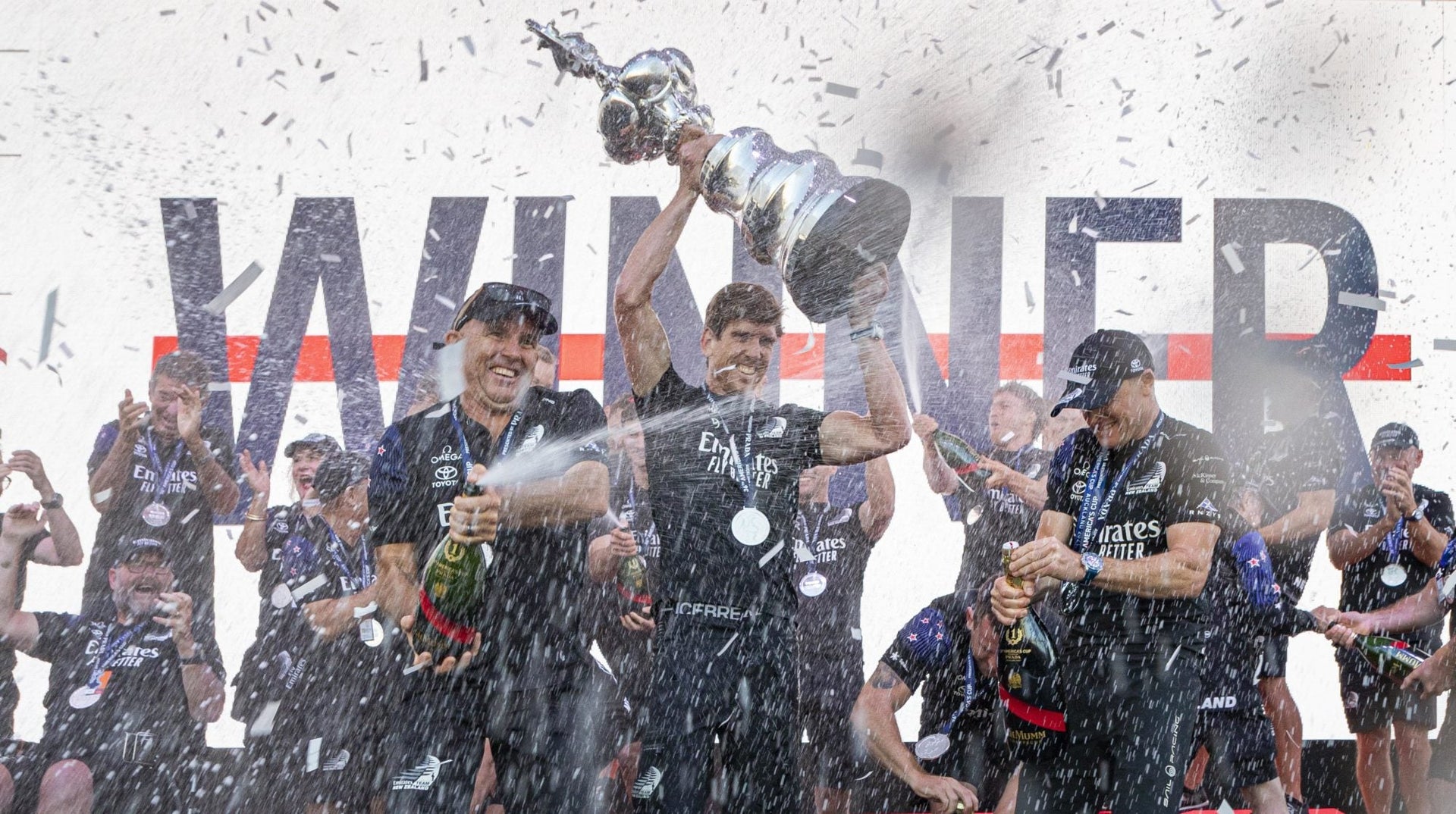
THE TEAM, THE TOOLS AND THE TECHNOLOGY
You can imagine the future or you can be a part of it. We choose to be a part of it– and lead it. When he started North Sails, Lowell North’s philosophy was simple…get the best people and commit yourself to to the best product.
READ MORE
READ MORE
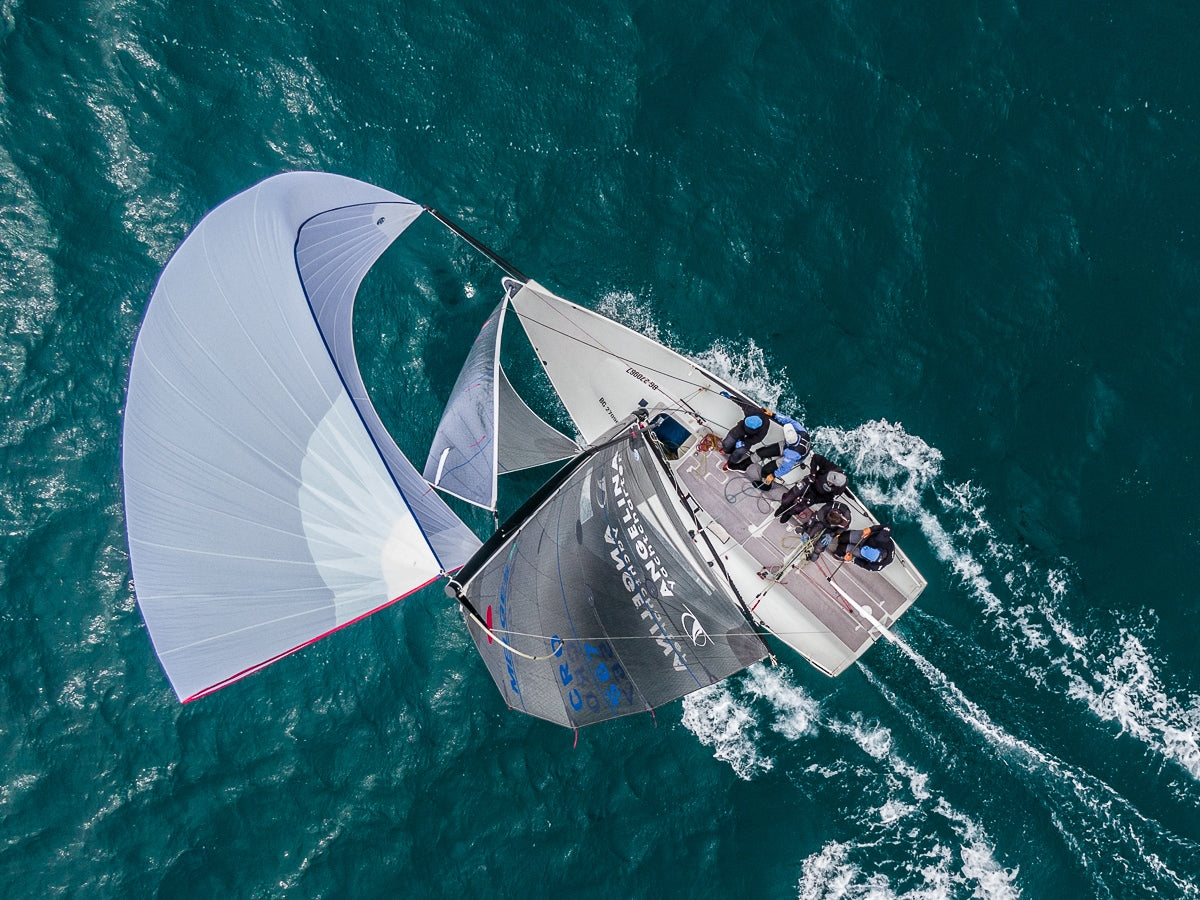
ZAPOČELA JE NOVA ERA JEDRENJA U HRVATSKOJ
Započela je nova era jedrenja u Hrvatskoj
Jedriličarski klub Briva u Biogradu je organizirao prvu regatu klase Melges 24 u Hrvatskoj, a ono što je najsjajniji dio ovog eventa je to što je točno 90% posada bilo pod Hrvatskom zastavom! S obzirom da su postotci relativna stvar treba precizirati da je konkretno riječ o 9 jedrilica u floti od njih 10.
Taj broj nije pravi pokazatelj stanja ove klase u Hrvatskoj, jer nekoliko jedrilica nije sudjelovalo, što zbog problema s Koronom, a što zbog nedovršenosti jedrila koje su još uvijek u fazi refita i pripreme za regatne izazove na Jadranu. S druge strane, pozitivna atmosfera oko ove regate, a i sam entuzijazam svih uključenih u rad klase, djeluju vrlo zarazno na ostale jedriličare, tako da je u najavi dolazak još nekoliko ovih atraktivnih jedrilica. Ako se ostvare sve najave iduće sezone bi mogli imati flotu od oko dvadesetak ovih malenih Melgesa.
S obzirom na stanje monotip jedrenja u Hrvatskoj ovo je izniman iskorak i stvarno je potrebno pružiti apsolutnu podršku svim uključenima u ovaj vrlo važan događaj u hrvatskom jedrenju.
Što se tiče same regate u Biogradu, slobodno se može reći da se nije moglo izabrati bolje mjesto za početak. Izvrsna logistička podrška Šangulin grupe i JK Briva-e, obavila je sve radnje na moru i po pitanju prihvata i pripreme jedrilica vrlo kvalitetno, brzo i efikasno. Jedino je šteta što se zbog epidemioloških mjera još uvijek ne mogu organizirati zajednička druženja nakon jedrenja, ali doći će i taj dan... Također, akvatorij ispred Biograda omogućio je vrlo lijepo jedrenje po relativno zahtjevnim uvjetima koji su uključivali kako praćenje refula i driceva, tako i poznavanje jedrenja po kurentu.
Jedriličari su se u Biogradu okupljali od petka. Dolazak na regatu dan ranije nužan je zbog toga što svaku jedrilicu dizalicom treba spustiti u more, treba se podignuti jarbol i pripremiti sve što je potrebno da bi se moglo kompetitivno jedriti, te naravno, možda i na nekom kraćem treningu isprobati da li je sve na svom mjestu.
S obzirom da je ovo bio prvi službeni susret svih uključenih u rad klase, vrijeme je iskorišteno i za usklađivanje jedrilica s pravilima klase, kompletiranja opreme itd.
Službeni program regate predvidio je šest jedrenja, po tri svakog dana, a uvjeti na moru su bili takvi da se jedrilo na istom mjestu i u subotu i u nedjelju. Jedina razlika bila je u snazi i stabilnosti vjetra.
U subotu je puhala bura između 10 i 20 čvorova. Ponašala se standardno nestabilno, tako da bi u jednoj orci bila bolja jedna strana, a u drugoj druga, pa je stvarno trebalo biti koncentriran u praćenju stanja, jednako kao i u izboru strane za prelazak kurenta koji je konstanta u kanalu ispred Biograda. Ovog puta kurenat je dolazio s juga, a kako se pokazalo, najčešće je zonu njegovog utjecaja (s obzirom na kombinaciju s vjetrom) trebalo prelaziti bliže Biogradu.
Kako je vjetar jačao već tijekom prvog plova, RO je produljio regatno polje i donio odluku da se drugi i treći plov jedre s tri kruga. To je značilo 50% više posla za posade u pogledu broja podizanja i spuštanja genakera, ali srećom riječ je o ipak manjim kvadraturama nego kod krstaša kakve smo naučili viđati na našim regatama.
S obzirom na snagu vjetra ovog puta je bilo značajno da je masa posade maksimalna dopuštena. Naravno i uigranost je bila vrlo važna, a to se najbolje moglo vidjeti prilikom izvršavanja manovri posada koje su provele više vremena na treningu. Po tom pitanju definitivno je u značajnoj prednosti bila vrlo iskusna Ukrajinska posada koja je na kraju završila na drugom mjestu.
Suprotno je bilo u nedjelju. Lagana burica koja je puhala na startu 4. plova puhala je uglavnom do desetak čvorova, da bi na kraju, posljednji plov morao biti skraćen prilikom drugog prilaska oznaci offseta.
Ono što također treba istaknuti je da na regati nije bilo nikakvih ozbiljnijih šteta ni ozljeda. Sve posade bile su sastavljene od vrlo iskusnih pojedinaca kojima jedino nedostaje zajedničkih treninga da bi sve aktivnosti optimizirali i još bolje upoznali svoje jedrilice. Jedini problem koji je u stvari bio razlogom jedina dva DNF-a na regati je pucanje podigača na Palmini. Ali to je nakon povratka s mora riješeno i u nedjelju je i ova posada mogla nastaviti s normalnim jedrenjem.
Na kraju regate zlatne medalje i naslov najboljih odnijela je domaća posada iz Biograda, ujedno i organizatori ove regate, na jedrilici simpatičnog imena - Panjić:
Početkom ove godine kad smo slagali jedriličarske planove i kalendar za 2021. sa X-CITE-om i našim novim brodom LUCKY (ClubSwan 36), kojeg još nismo ni zavezli kako treba, nismo puno ni znali o projektu Melges 24 u Hrvatskoj, ali zahvaljujući Filipu Jurišiću Gaši koji nas je "zarazija" i Matiji Longinu koji nas je još malo "potaka" na kupnju istog, uplovili smo potpuno iznenada u projekt Melges 24.
Zahvaljujući Thomasu Becku kupili smo jako dobar, brz i očuvan brod i projekt je počeo. Trebalo mu je ime... PAN(j)IC. Panic jer je svima koji jedre oko nas panika ? i Panjić jer je barem jedan na našem brodu uvijek PANJ?.
Gro posade je posada i prijatelji s X-CITE-a i LUCKY-a, a da na Panjić-u budemo što manje "panji" brine se naš trener i taktičar Tomislav Bašić koji nam se pridružio u ovom projektu koliko mu to obveze dopuštaju. Uz Tomu na ovoj regati su jedrili Tonko Rameša, Duje Fržop i moj Noa, koji nam se sa svojom kilažom idealno uklopio. Ovaj put je nastupila ova ekipa a već sljedeću regatu možda i neki drugi član sa X-cite-a zamjeni nekog zbog poslovnih obveza.
Trenirali smo u ovih mjesec dana što smo više mogli i koliko su nam obveze dopuštale, vježbali sami sa sobom s obzirom da drugog broda u blizini nije bilo. Pred regatu nismo imali nikakva očekivanja, osim idemo se boriti i vidjeti gdje smo sa drugima koji već puno duže jedre u ovakvom brodu.
Regata koja je prošla izvrsno, puno bolje od očekivanog, ali nećemo se zanijeti uspjehom, pred nama je još mnogo rada i prostora za poboljšanje.
Hvala glavnom panju Šimi Markiću na pomoći oko pripreme broda, postaje pravi boat captain, ali i na svim obvezama vezano za regatu i logistiku. Hvala mom klubu JK Briva Biograd i svim volonterima na pomoći u organizaciji ove regate: Petar & Lucijan Jakovljev, Perica Zalović, Marko Peričić, Luka & Donat Jakovčev, Marin Golem, Marin Kustić, Franjo Jurić, Bili...
Posebno hvala Angelini @angelinayachtcharter te Marini Šangulin @sangulingroup na sponzorstvu i domaćinstvu, te Jakovu Šokoti na "ustupanju".
Luka Šangulin, Panjić - JK Briva
Uz posadu Panjića, s nagradama su iz Biograda doma otišli i Ukrajinci kao srebrena posada, te posada jedrilice Strilica kao trećeplasirani. Kompletne rezultate regate možete pronaći na ovom linku, dok u nastavku članka možete pronaći playbackove svih jedrenja.
P L A Y B A C K - 1. PLOV
P L A Y B A C K - 2. PLOV
P L A Y B A C K - 3. PLOV
P L A Y B A C K - 4. PLOV
P L A Y B A C K - 5. PLOV
P L A Y B A C K - 6. PLOV
Dva video uratka snimljena na ovoj regati možete pronaći u video galeriji, a uskoro će biti objavljene i fotogalerije. Iduća regata iz Melges 24 Croatian Sailing Series u kalendaru je rezervirala vikend od 7. do 9. svibnja. Domaćini će biti članovi YC Croatia:
READ MORE
READ MORE

THE KEY TO UPWIND PERFORMANCE
THE KEY TO UPWIND PERFORMANCE
Dynamic Tuning with North Expert Charlie Cumbley & Cyclops Marine
With the help of smarttune load sensors from Cyclops Marine, North Sails One Design Expert, and J/70 World Champion Charlie Cumbley explains how the dynamic balance of upwind performance hinges on forestay load.
Click here to learn more about how smarttune can boost your performance, or inquire at info@cyclopsmarine.com.
Find your local North Sails expert for any sail-related inquiries or questions.
FIND YOUR LOCAL EXPERT
READ MORE
READ MORE
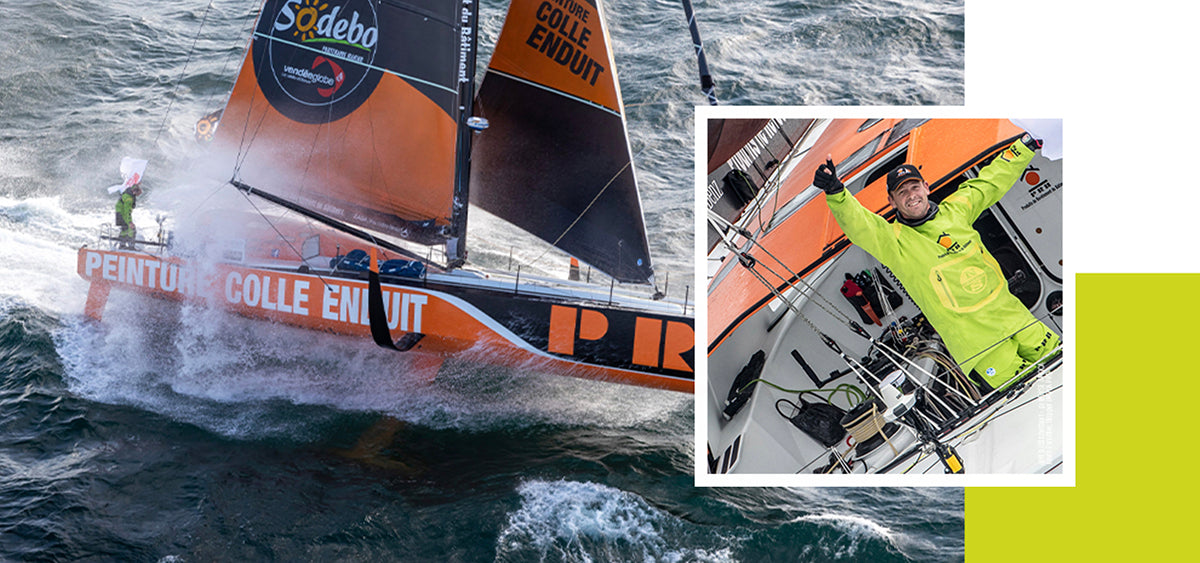
NY LANSERAR NORTH SAILS EN HELT NY PRODUKTLINJE
NY LANSERAR NORTH SAILS EN HELT NY PRODUKTLINJE
Men den här gången handlar det om sjökläder
Den här nyheten kännetecknas som vanligt av innovativ design, unika specialutvecklade material, och den är resultatet av en lång forskningsbaserad utvecklingsprocess.
Att vara rätt klädd ombord handlar inte bara om bekvämlighet eller välmående i största allmänhet. Om du är blöt, för kall eller för varm, eller har kläder som begränsar din rörlighet så går det även ut över prestandan. Och att höja prestandan och öka seglingsglädjen är ju en helt central punkt i vår verksamhet. Därför känns det faktiskt som ett naturligt steg att ta fram en helt ny serie sjökläder.
När North Sails för drygt två år sedan bestämde sig för att utveckla egna sjökläder var det självklart att göra det "The North Sails Way". Det vill säga grundligt och metodiskt och med den vetenskapliga approach som präglat företaget ända sedan Lowell Norths tid.
Nigel Musto, kappseglare med mästerskapsmeriter på internationell nivå och en av världens mest erfarna designers av sjökläder, utsågs till att leda projektet. Gore-Tex kom in i bilden redan från dag ett. Det var en förutsättning för att att projektet ens skulle bli av.
Nästa steg var att börja samla in synpunkter på dagens seglarkläder och idéer på vad som borde förbättras. Bara inom North Sails finns hundratals extremt erfarna seglare som tillsammans torde ha testat allt som finns på marknaden. Men frågan gick även ut till professionella seglare som ju använder seglarkläder dagligdags. Gensvaret var översvallande, och det svåra var faktiskt att sovra i materialet och välja ut de områden med störst utvecklingspotential.
Den fortsatta processen var i princip identisk med hur vi utvecklar nya segel: Research, innovation och design, testning och utvärdering av prototyper. Om och om igen.
Testning i skarpt läge har pågått länge. North Sails segeldesigner Dick Parker hade exempelvis ett testställ på sig när han var med om att vinna Sydney Hobart Race 2019. Och den franske Volvo Ocean Race-vinnaren och numera IMOCA-seglaren Kévin Escoffier var utrustad med ett annat både inför och under senaste Vendée Globe. Själva racet gick som kanske bekant inte som han tänkts sig – båten bröts sönder och sjönk under hans fötter och han fick tillbringa nästan tolv timmar i sin livflotte innan han räddades av medtävlaren Jean Le Cam. Man kan väl säga att sjökläderna fick utstå ett ännu hårdare test än vad någon hade kunnat föreställa sig.
Och nu är det äntligen dags för lansering av ett komplett sortiment av sjökläder. Utvecklade av seglare för seglare. Lättare, smidigare och bekvämare. Det bästa som kan köpas för pengar, punkt slut. Annars hade vi inte satt vårt namn på dem.
North Sails sjökläder säljs av utvalda återförsäljare, som Happy Yachting och Captains.
READ MORE
READ MORE
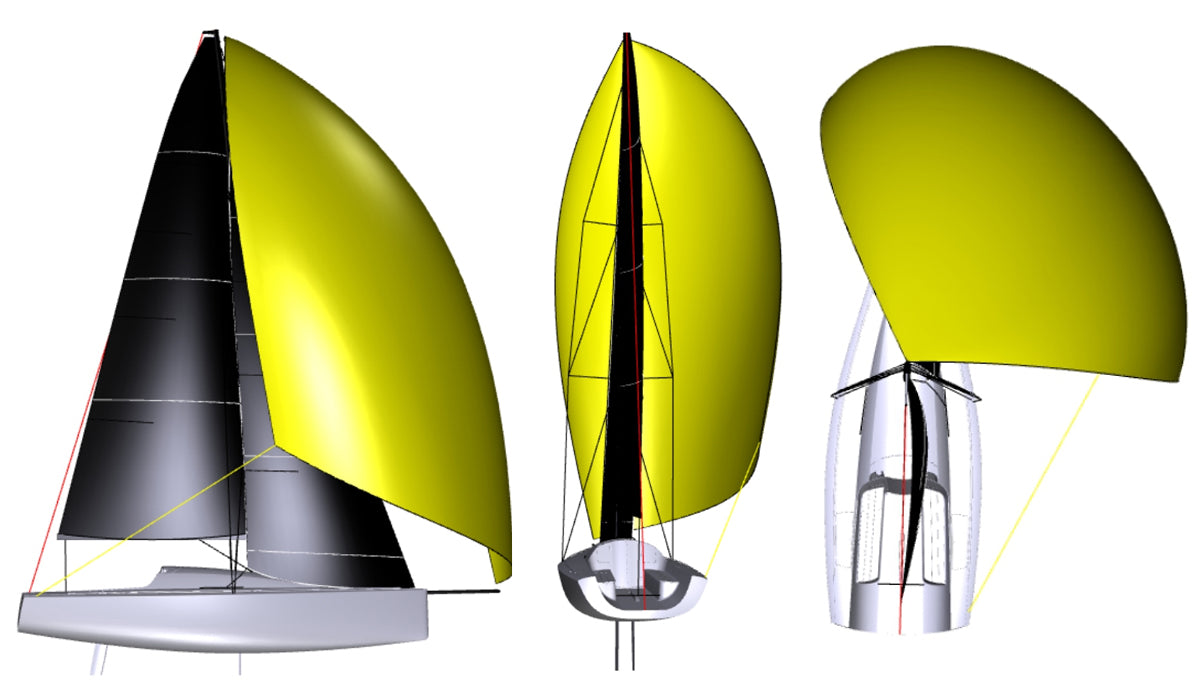
SNART ÄR NYA Z30+ FÄRDIG
SNART ÄR NYA Z30+ FÄRDIG!
Det byggs ovanligt många spännande båtar i Sverige just nu.
En av dem är Z30+ som lär bli något utöver det vanliga. North Sails har varit delaktiga i projektet i över ett år och bidragit med mer än bara nya segel.
På Vaxholm Komposit håller man just nu på att färdigställa det första exemplaret av Z30+. Initiativtagare till projektet är stockholmsseglaren och industridesignern Johan Larsvall, och tekniskt ansvarig för utvecklingen av båten är Jimmy Hellberg, välkänd kappseglare, innovativ tekniker och numera även båtkonstruktör.
Utvecklingsprocessen har varit minst sagt grundlig. Förutom Johan och Jimmy har en rad personer med expertkunskap inom olika områden varit djupt involverade i princip sedan idéstadiet. Anders och Tore Lewander på North Sails Lidingö är några av dem.
Ett unikt koncept
Projektet har en ganska lång förhistoria. Det började på 90-talet med att Johan ritade och lät bygga en innovativ one-off-båt som han döpte till Puh. Det var ett vackert bygge i kallbakad fanér, mest uppseendeväckande var nog det jolleliknande skrovet, fällkölen, de dubbla rodren och storseglet med dess enorma akterrunda. "Fast", säger Johan med ett uns av vemod i rösten, "det folk minns mest verkar vara att den hade en styrspak och att sittbrunnsdurken även fungerade som jolle."
I början av 00-talet utvecklade Johan med hjälp av Danish Marine Design en liknande båt avsedd för serieproduktion. Den hette Z31 och fick ett gott mottagande men kom ändå bara att byggas i en handfull exemplar. Den var kanske lite väl långt före sin tid.
Så nu är det tredje gången gillt för Johan. Nya z30+ byggs delvis i Z31:ans gamla formar. Skrovet är dock grundligt modifierat och allt annat på båten är helt nyutvecklat. Konceptmässigt måste Z30+ betraktas som en helt ny konstruktion. Den har dessutom en del egenskaper som gör den tämligen unik på marknaden, även i ett internationellt perspektiv.
Z30+ lär få hårresande prestanda. En förutsättning för detta är just att man har utgått från befintliga formar. På så sätt har man nämligen kunnat kapa utvecklingskostnaderna med någon miljon och pengarna har istället lagts på – kolfiber.
I princip allt på Z30+ är byggt i kolfiber. Det sparar massor av vikt och allt har lagts i bulben, nästan två meter under vattenlinjen. Resultatet är ett helt enastående rätande moment. Som jämförelse kan nämnas att Z30+ har nästan exakt samma segelyta och rätande moment som J-boats "shorthand-speedster" J/99. Skillnaden är att Z30+ är nästan ett ton lättare.
Det här ger Z30+ väldigt speciella egenskaper: Båten är så lätt att den planar och samtidigt så styv att den kan seglas effektivt även av en liten besättning. Det gör den perfekt för shorthand-kappsegling – och lika perfekt för ren nöjessegling.
Båten är dessutom så rymlig att den faktiskt kan funka även för semestersegling. "Cruisingbåtar som man kan kappsegla finns det hur många som helst av", säger Johan. "Men det vi bygger nu är en ren racer som går att använda även för cruising".
Och trots att det alltså är en kolfiberbåt är tanken att den ska kunna säljas till ett pris som matchar liknande båtar byggda i glasfiber.
Ett kvalificerat grupparbete
Idén till båten och det övergripande konceptet kommer helt och hållet från Johan och Jimmy.
Men modern båtkonstruktion är en komplex uppgift som kräver bred kompetens. Redan för ett drygt år sedan bildades därför en utvecklingsgrupp som förutom Johan och Jimmy bestod av Anders Axelsson och Per Wretlind från Seldén, Martin Gradman från Happy Yachting, Ulf Brännström och Stefan Törnblom från Vaxholm Komposit och Anders och Tore Lewander från North Sails Lidingö. Även båt- och flygplanskonstruktören Kåre Ljung har varit delaktig, med ansvar för undervattensprofilerna.
Alla inblandade hade förstås sina egna givna ansvarsområden, men ett viktigt syfte var också att vända på alla tänkbara stenar och få igång en övergripande dialog kring hur konceptet som sådant kunde utvecklas och förfinas.
Det som låg på bordet när gruppen samlades var i princip skrov, kölblad och segelplanets placering. Om vi börjar med skrovet så kan man förenklat säga att Z31:an har kapats ett par decimeter i fören och förlängts en knapp halvmeter i aktern. Båten blir därmed lite fylligare i förskeppet och får längre linjer i aktern. Samtidigt ökar överhänget bak, och för att få ner det i vattnet och maximera vattenlinjelängden har Jimmy flyttat kölen akterut, vilket innebär att även segelplanet kunnat flyttas bakåt.
Resten var en ganska öppen fråga som gruppen tog sig an med liv och lust. De träffades inledningsvis på Johans kontor och sedermera på digitala plattformar (detta var ju när coronan tagit fart). Ordet var fritt, det var högt i tak och det färdiga konceptet växte fram stegvis i en sökande process. När diskussionen kring konceptet, båtens användningsområden, dess tänkta målgrupper och mycket annat fördjupades började ett nyckelord skönjas: Enkelhet!
Z30+, kom man fram till, skulle vara optimalt enkelt utrustad. Det sparar både pengar (som kan läggas på kolfiber) och vikt (som kan läggas i bulben). Båten skulle också vara maximalt enkel att äga och segla.
Det här kom att genomsyra hela processen. Varje liten tänkbar detalj ombord har ifrågasatts: Gör det verkligen seglingen enklare och roligare? Kan det finnas något enklare, lättare eller billigare alternativ?
Det här innebar att en hel del, i och för sig intressanta detaljer och lösningar, försvann under resans gång. I ett tidigt skede tag var exempelvis dubbla roder och fathead-storsegel på tapeten, men de ritningarna hamnade nu i papperskorgen. Inte för att det generellt sett är dåligt. Men dubbla roder är en kostsam och komplex konstruktion. Jimmy, som själv har en båt med dubbla roder, påpekar att de dessutom är svåra att ställa in: "Rodervinklarna behöver justeras om så fort farten, avdriften eller krängningsvinkeln förändras, annars sjunker prestandan märkbart." Och fathead-storsegel kräver oftast backstag eller dubbla akterstag, vilket krånglar till det för en liten besättning.
Faktum är att båten inte ens har någon traditionell inredning. En sådan skulle väga åtminstone ett par hundra kilo, och den vikten gör ju större nytta i bulben. Däremot finns det en innerline som skapar strukturell styrka och en bas för fem ordentliga kojplatser
För den som tycker det låter trist att semestersegla i en helt tom båt kan man addera speciellt utvecklade inredningsmoduler som kan tas ur med några enkla handgrepp. En smart lösning signerad industridesignern Johan Larsvall.
Inga kompromisser
Enklare båt än Z30+ finns knappt. Men det som finns har förfinats så långt modern teknologi medger och allt byggs i absolut bästa tänkbara material. Här har det inte funnits utrymme för några som helst kompromisser.
Ta en titt på rodret. Det är djupt och smalt och sitter så långt fram att det inte lär ventileras i första taget. Både roder och kölblad är byggda i kolfiber och levereras färdigoptimerade för racing, med profiler utvecklats av Kåre Ljung, Sveriges kanske ledande auktoritet på området.
Anders Axelsson och Per Wretlind på Seldén har lagt ner ett enormt ambitiöst arbete på att skapa en så lätt mast som möjligt. Några standardrör från Seldéns lagerhylla var det aldrig tal om. De har istället tagit fram en unik laminatplan och har på så sätt lyckats få ner mastvikten till 34 kilo. Den byggs för övrigt med CNC-styrd produktionsteknik för hundra procents repeterbarhet. Det garanterar att alla master till Z30+ kommer bli identiska.
Martin Gadman på Happy Yachting, som har haft ansvar för däckslayout och löpande rigg, har räknat på dimensioneringen av fall och däcksbeslag, vilket sparat ytterligare kilon. Ulf Brännström och Stefan Törnblom på Waxholm Komposit har bidragit med sin expertis kring det strukturella och sett till att ingenting väger mer – men heller inte mindre – än nödvändigt.
Och så har vi då seglen, som Anders och Tore Lewander varit ansvariga för. Maximal enkelhet och en kompromisslös inställning kring design och material gällde förstås även här.
En enkel men effektiv segelgarderob
Segelgarderoben är utvecklad med sikte på shorthand-segling och består faktiskt bara av fyra segel: storsegel, fock och två gennakers. Storseglet är egentligen inte mycket att säga om – det är ett traditionellt pinheadsegel med två rev. Focken är designad med en rund framkant som gör det enkelt att styra och en rak, platt bakdel som möjliggör extremt smala skotvinklar (ner mot ca 6,5 grader). Det här genererar mycket höga skotkrafter, vilket tillsammans med det rätande momentet ställer oerhörda krav på seglens formstabilitet.
3Di är förstås det enda tänkbara, både storsegel och fock byggs i det vi kallar 3Di RAW 360. Focken har softhanks och är utrustat med ett rev. Den kan också användas som stagsegel under platta undanvindsseglet. För att förbättra flödet i spalten tar man då in ett rev i focken.
Två undanvindssegel ingår i garderoben. Det ena är en stor A2-gennaker som hissas från masttoppen. Designen är länsbetonad, men för att vidga seglets register och minska behovet av segelbyten är det utrustat med en revhals som gör det möjligt att dra ihop förliket ungefär en halvmeter. Det möjliggör högre fallspänning, vilket rundar till förliket och öppnar upp akterliket. Fallhorn och halshorn har zippers för enklare hissning.
För brantare vinklar finns en Code 70 som hissas på ett fractional-fall, en meter ovan förstagsinfästningen. Det är en typ av segel som används frekvent på bland annat engelska IRC-racers och som utvecklats mycket på senare år. Teknisk är det uppbyggt i tre olika typer av polyester, i Helix-design, med Future Fiber-kabel för top-down-furling som ger seglet ett bredare register. Resultatet är ett starkt segel som kan pressas hårt och som är effektivt upp till cirka 60 graders sann vindvinkel.
Någon kanske undrar om det inte kliar i fingrarna att komplettera med fler segel. Svaret är… nja. Visst kan det finnas lägen då det skulle sitta fint, men Z30+ är extremt lättdriven och vi tror att den kommer vara konkurrenskraftig i de flesta förhållanden även med denna lilla garderob.
Snart seglar hon
Om tidsplanen håller är båten sjösatt och klar till sommaren. Tanken är att North Sails ska trimma in den färdiga båten och segla den på några av säsongens shorthand-kappseglingar.
Anders Lewander har redan paxat en plats ombord. "Det har varit väldigt kul att få vara med och bidra till utvecklingen", säger han, "och jag ser fram emot att få segla den. Det är ju verkligen en speciell båt."
READ MORE
READ MORE
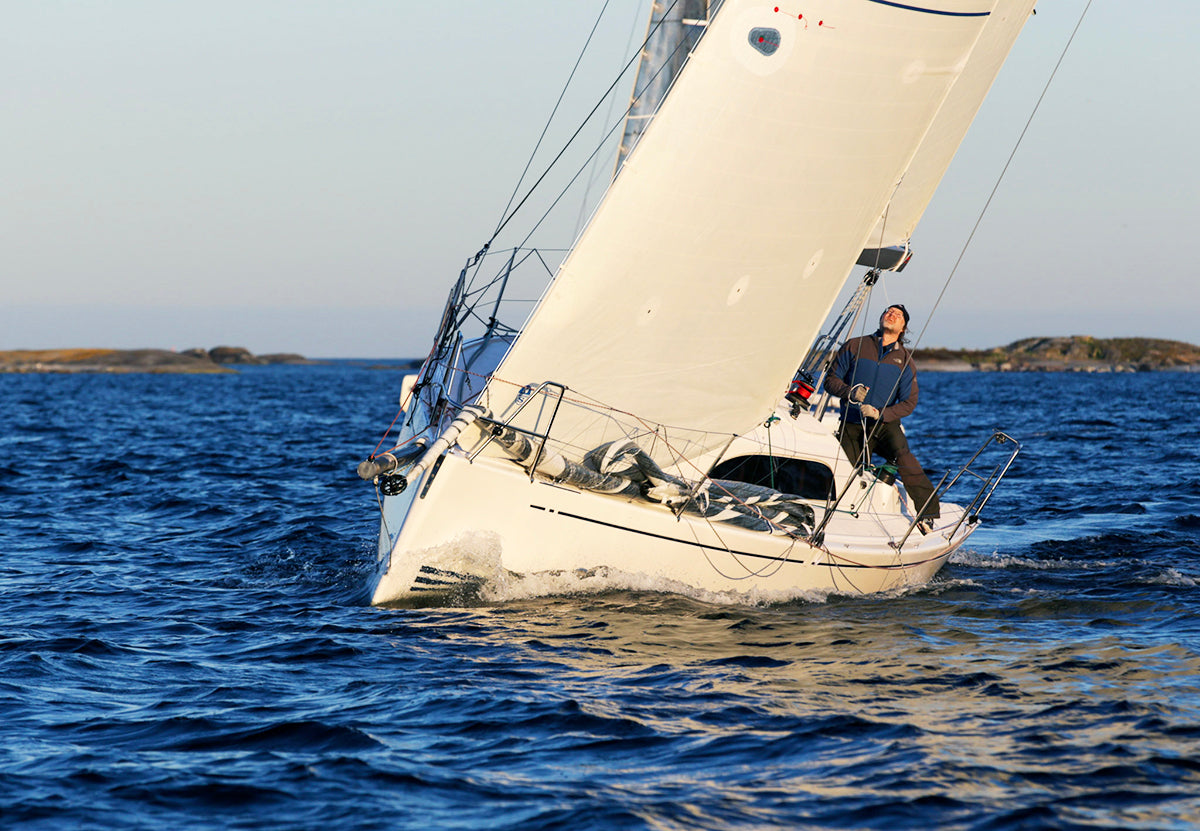
AMBITIÖS KAPPSEGLING KRÄVER BRA SEGEL
AMBITIÖS KAPPSEGLING KRÄVER BRA SEGEL
Men hur hittar man rätt bland alla tänkbara alternativ?
📸 Jonas Dolk
En modern prestandabåt kräver formstabila segel för att komma till sin rätt, och ska man kappsegla skruvas kraven upp ytterligare. Vill man dessutom ha slitstyrka och livslängd är 3Di-segel det självklara valet. Men vilken typ passar egentligen bäst? Det var frågan Johan Söderström ställde när han behövde nya segel till sin XP33:a. Svaret blev inte riktigt vad han förväntat sig.
Johan har seglat sedan barnsben och har bred erfarenhet av sporten; i unga år jobbade han på segelmakeri och under studietiden på KTH extraknäckte han som charterskeppare på en Swan 65:a.
För drygt tio år sedan återupptog han seglingen och skaffade sig en Dynamic 3000, den skulle med tiden bli ganska omtalad. Med Dynamicen fick han upp ögonen för shorthand-kappsegling.
Båten var snabb och kul men också vek och känslig, därtill utrustad med en tunn rigg med raka spridare, backstag och checkstag. Kanske inte helt optimalt för shorthanded-segling. Men Johan har alltid varit intresserad av teknik, design och utveckling, och tog chansen att skapa något efter eget huvud. För att göra en lång historia kort slutade det med att båten i samråd med North Sails fick ett helt nytt segelplan. Röstjärnen flyttades ut i relingen och en ny mast med dubbla svepta spridare lyftes på plats. Johan hade nu en fockbåt med gennaker på peke som enda undanvindssegel.
Båten var fortfarande vek och ett tag hade Johan allvarliga funderingar på att byta även kölen. Men han besinnade sig och började istället se sig om efter en annan båt. Hösten 2018 fick han nys om en fin XP33:a och slog till direkt. Det visade sig vara just den båt som North Sails Martin Angsell och Anna Drougge hade kört shorthanded med några år tidigare. Den var därför väl utrustad för ändamålet, men seglen var slitna.
Så inför säsongen 202o var det dags för ett nytt besök på Lidingöloftet och ett möte med Martin Angsell, som ju kunde ett och annat om shorthand-segling i XP33.
📸 Jonas Dolk
Vilka 3Di-segel passar bäst?
Johan förberedde sig ordentligt inför mötet. Han var "väl påläst" och hade nog en ganska klar bild av ungefär vad han skulle ha. Men han har ett öppet sinne och var nyfiken på hur resonemanget skulle gå.
Johan skulle ju kappsegla, så kravet på hög formstabilitet fick bli utgångspunkten. Seglen måste klara de hårda skotkrafter som kappseglare utsätter sina segel för. De måste stå pall i en by. Och de får inte tappa formen efter bara några säsonger.
3Di-segel kom tidigt på tal. De kan byggas i en rad olika material, och alla har både sina fördelar och sina nackdelar. Ett 3Di RAW-segel i kolfiber skulle exempelvis ge Johan marknadens lättaste och stummaste segel. Men det skulle gå ut över hållbarheten och dra iväg prismässigt.
Dessutom, resonerade Martin, är de krafter som en så liten båt genererar ganska små och kan hanteras även med mindre avancerade lösningar. Så det Martin föreslog var det vi kallar 3Di 330 OCEAN.
Va? Det var inte vad Johan hade förväntat sig. 3Di 330? Vita segel? Tillverkade i polyester, utan ett uns kolfiber eller ens kevlar? Han skulle ju kappsegla, och här sitter Martin och föreslår segel utvecklade för cruising. Borde han inte ha racingsegel?
En intressant och givande diskussion följde. "Ser du mig som en cruisingseglare?", frågade han Martin.
Nej, det gjorde inte Martin. Men han visste att när North Sails i officiella sammanhang pratar om racing så är det kappsegling på absolut högsta internationella nivå som avses. Och där var inte Johan. Inte så värst många andra svenska seglare heller om man ska vara krass.
Men framför allt visste Martin hur mycket prestanda de där seglen faktiskt levererar. Han visste att formstabiliteten är på ungefär samma nivå som ett bra membransegel, utvecklat för racing, från vilken som helst av våra branschkolleger.
Dessutom är polyesterfibern snudd på outtröttlig, vilket ger en slitstyrka och en mekanisk livslängd som är helt oslagbar, särskilt jämfört med andra typer av prestandasegel. Man får gå till dacron för att hitta något liknande.
Och sådant är ju viktigt även för en ambitiös kappseglare, allra helst om man seglar shorthanded.
En unik tillverkningsmetod
Det finns en bild av att seglen man kappseglar med ska vara svarta eller möjligen grå, inte gräddvita. Många förknippar nog också polyester med dacron, och det är kanske det som gör att tanken på prestandasegel i detta material inledningsvis kan kännas ovan även för en så tekniskt initierad person som Johan.
Men att jämföra 3Di 330 med dacron blir bara löjligt. Skillnaden i formstabilitet är oerhört stor. Jämförelsen med membransegel är betydligt mer relevant.
Det är möjligt att vän av ordning nu frågar sig hur det kan vara möjligt att ett segel i polyester – ett low-tech-material – kan matcha ett membransegel i high-tech-material som aramid eller kolfiber. Det låter ju som en retoriskt fråga, och vill man svara med samma mynt kan man säga att det beror på att ett membransegel är en low-tech-produkt, baserad på en snart 30 år gammal teknologi – medan ett 3Di 330-segel är en high-tech-produkt, tillverkat med hjälp av en banbrytande teknologi som bara vi på North Sails har tillgång till. Väl beprövad, för övrigt, efter tio år på marknaden, och i ständig utveckling ända sedan starten.
Ett 3Di-segel är en kompositkonstruktion, och det byggs på i princip samma sätt som en kolfibermast eller ett båtskrov: Riktad fiber mättad med harts läggs upp på en tredimensionell gjutform. Det härdar under tryck och värme och när det härdat färdigt har de två komponenterna gjutits samman till ett enda homogent material.
Resultatet är ett segel med nästan dubbelt så mycket kraftupptagande fiber som ett membransegel med samma vikt. Eftersom det inte innehåller någon mylar kan det inte delaminera och det har en helt överlägsen motståndskraft mot slitage. Det gör att både prestandalivslängden och den totala livslängden ökar dramatiskt.
3Di 330-segel är ett utmärkt val för en kappseglare som Johan – och många med honom. Inte alla, måste sägas. Ska du göra en seriös satsning mot ORCi-VM har vi andra produkter som är bättre lämpade. Men 3Di 330 är perfekt för clubracing, shorthand-kappsegling och havskappseglingar som Gotland Runt.
Sedan är det klart att det även storleksmässigt finns en gräns där segel i polyester inte längre räcker till. För kappsegling ligger den kring 40 fot. Men det är egentligen det rätande momentet som avgör, så ingenting är hugget i sten.
Enkelt, okomplicerat och snabbt
Det hela slutade med att Johan gick på Martins linje och beställde ett storsegel och en fock i 3Di 330-specifikation. Till detta hade Johan sedan tidigare en Jib 0 och två gennakers. En enkel garderob, med andra ord. Enkelhet – i betydelsen "okomplicerat" – är för övrigt ett genomgående tema.
Focken har exempelvis softhanks i förliket och är alltså inte rullbar. Det innebär en sak mindre som kan krångla och möjliggör horisontella lattor. Resultatet blir ett rakare och mer öppet akterliket och att livslängden förlängs ytterligare. Focken har även ett inbyggt rev, och fungerar därmed även i höga vindstyrkor.
Förra årets säsong blev ju lite rumphuggen, med många inställda kappseglingar. Men det har inte hindrat Johan från att segla. Båten har använts snart sagt varje vecka under hela säsongen. Helger som vardagskvällar. Ibland för att ta sig ut till något fint badställe. Ofta bara för att njuta av lite skön segling en fin kväll. Och de nya 3Di-seglen används i alla sammanhang. De är de enda han har.
Och lite kappsegling blev det i alla fall under 2020. På Kolfiberrodret seglade Johan i par med Alexander Ekberg och placerade sig på en god sjuttondeplats av 143 startande i kölbåtsklassen. Farten var det inget fel på, och Johan känner nu att han har det som krävs för att få ut max av båten på kappsegling.
Vilket i och för sig har sina sidor. För, som han säger: "Om det inte går som jag hoppas kan jag i alla fall inte skylla på seglen."
📸 Jonas Dolk
READ MORE
READ MORE
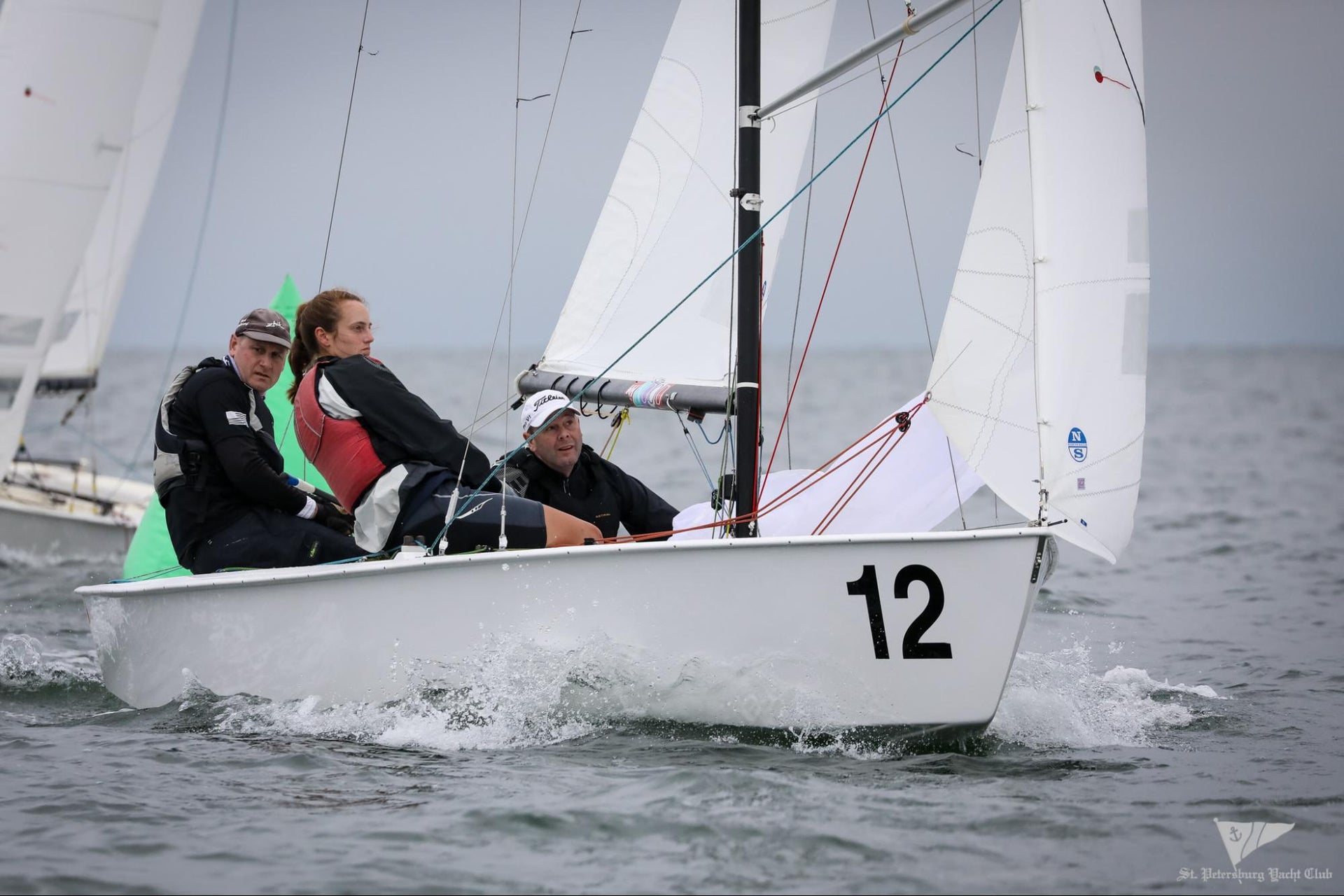
LIGHTNING DESIGNS CONTINUE TO DOMINATE THE CIRCUIT
LIGHTNING DESIGNS CONTINUE TO DOMINATE THE CIRCUIT
Amazing Consistency at Winter Championship, Deep South and Southern Circuit Overall
David Starck, Jenna Probst, Tom Starck, winners of the 2021 Winter Championship, Deep South and Southern Circuit Overall 📸 Courtesy St. Pete Yacht Club / Corey Hall
For over 40 years the North Sails Lightning team has supported the Lightning Class and Lightning sailors by not only delivering designs that have dominated circuits all over the world but with a commitment to education, class volunteerism and client service that is second to none.
After a year without much Lightning sailing, we saw great enthusiasm and excitement as the teams started showing up for the Winter Championship in St. Pete and Savannah Deep South. North experts Brian Hayes, Ched Proctor and Nick Turney were in attendance supporting the event and clients.
The North Sails fast designs have, again, prevailed in both events and here are the numbers:
Winter Championship
David Starck showed amazing consistency in very tricky Tampa Bay conditions to win the 2021 Lightning Winter championship. Racking up consistent top-four finishes, and without winning a race, team Starck bested current Youth World Champion Jeff Hayden and his team by nine points.
Nine races were completed over 4 days with 6 different teams winning a race. Team Hayden won 3 and teams using North won 8 of the 9 races. 22 of the 24 teams were powered by North. North-powered teams finished 1, 2, 4, 5, 6, 7, 8, 9, 10, 11, 12.
Jeff Hayden, Mateo Rodriguez and Hannah Sellers, second place at the Winter Championship 📸 Courtesy St. Pete Yacht Club / Corey Hall
Savannah Deep South Regatta
After the great warm-up in St. Pete, David Starck and his team did it again, finishing consistently in the top 5 in all of the 4 races in Savannah. Teams powered by North again dominated the event finishing 1, 3, 4, 5, 6, 7, 8, 9, 10. David, Jenna and Tom were crowned the 2021 Lightning Southern Circuit winners.
Bill Faude, Ched Proctor (checking the shape of the mainsail) and Amy Simonsen 📸 Courtesy St. Pete Yacht Club / Corey Hall
Tito Gonzalez, Diego Natho and Alberto Gonzalez Jr. sailed a great event in St Pete with two bullets 📸 Courtesy St. Pete Yacht Club / Corey Hall
North Sails Nick Turney and Antonio Rojas concentrated on the race course. 📸 Courtesy St. Pete Yacht Club / Corey Hall
Tanner Probst, Debbie Probst and Dominique Wright, 5th place in St. Pete. 📸 Courtesy St. Pete Yacht Club / Corey Hall
READ MORE
READ MORE
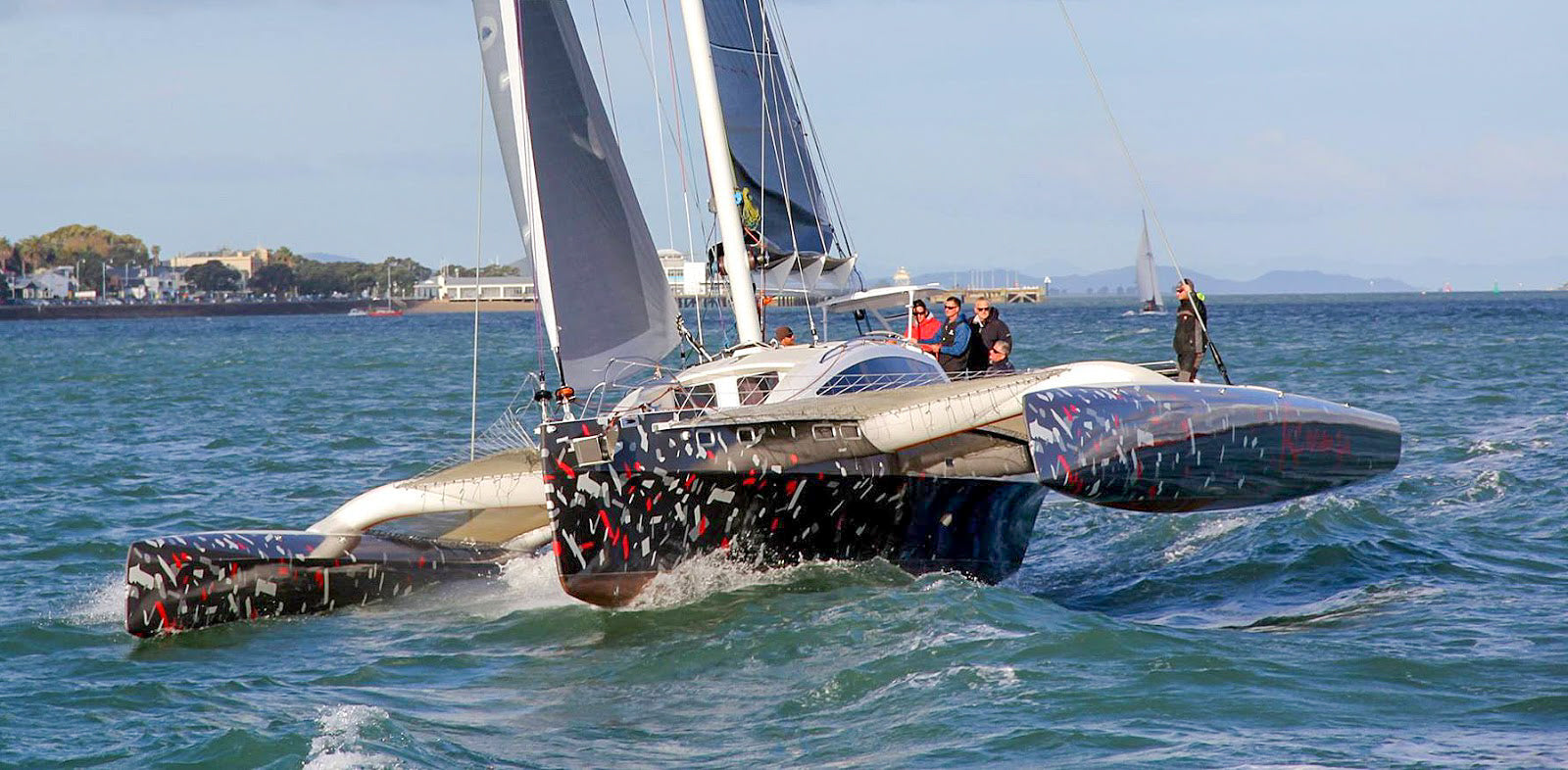
THE ULTIMATE RACER-CRUISER
THE ULTIMATE RACER-CRUISER
Clients on Romanza are turning heads on the racetrack when they’re not cruising at high speed.
📸 SSANZ / Deb Williams
Clients Dougall and Jaz Love are co-owners of the Rapido 60 Trimaran, Romanza, but their sailing backgrounds couldn’t be more different. While Dougall is more of a racer, Jaz is experienced in motor yachts and new to the sailing scene. Fortunately, Romanza provides both high-speed racing excitement and comfortable, easy cruising. And ever since their first trip around North Island in New Zealand, about 1,400nm, they are both completely hooked.
The Engine above Deck
Romanza is equipped with a full suite of North Sails 3Di upwind, two asymmetrical spinnakers, and a Code Zero. The entire downwind wardrobe runs on furlers for easy handling. Adding an A2 and recutting a smaller A2 into an A3 has significantly helped performance. Dougall explains that the upwind headsail is self-tacking, and maneuvers are more effortless with electric winches, halyard locks, and KZ furlers. “It’s a great setup—straightforward and also robust.”
Romanza has a Southern Spars rotating wing mast, ECsix carbon rigging, and a full suit of 3Di upwind. Dougall especially loves the shape of their 3Di ENDURANCE mainsail and jib. “You can ‘trim and forget’ compared to traditional sails, and the shape is consistent. Sail shape is something North Sails does well, and I am constantly amazed at the loads they can handle, particularly upwind. Our righting moment is around 60 tonnes/meter, and the sails can be fully loaded but do not stretch or strain.”
3Di’s longevity is also quite important to them, Dougall continues. “We’ve customized our sails by adding batten retainers and UV protection, and I am amazed we’ve had no issues, as we have put our upwind wardrobe to the test.”
Their ‘go to’ sail for both racing and cruising is the Code Zero. “Although it’s relatively large, it is also versatile. We can sheet it in like a genoa if we’re sailing upwind in the lighter conditions, we can sheet it halfway for closer reaching angles, and we can ease it out on a broad reach if we don’t feel like putting up an A-Sail.”
The Code Zero is also ideal for building apparent wind, which the Rapido Tri’s are designed for. “Some of our trans-Tasman crossings, we’ve had 24-hour averages approaching 300 miles – not bad for a cruising boat.”
Romanza has been using that speed on the local racecourse, too. “Andrew Wills and Ben Costello at North Sails Auckland have been accommodating and easy to work with,” says Dougall. “Having sails you can rely on, and expertise you can trust is a major ‘comfort zone’ factor for us.”
Over time, the couple has learned to push the boat to higher speeds without sacrificing safety. Even cruising, they have been surprised by the high daily averages they can maintain and pleased by their ability to dodge bad weather when needed. “The speed comes from a great design and simple but sophisticated setup,” says Dougall. “She doesn’t take much to go fast, although our concept of ‘fast’ has changed significantly since our pre-Rapido days!”
The Right Collaboration
Triac Composites have been building Rapido 60s since 2015. Co-founder Richard Eyre says they looked to the North Technology Group (NTG) to provide a premium package for each model; Phil Johns, the company’s General Manager, agrees. “We want the best, and we knew that NTG would be the best fit for Rapido clients worldwide.”
Richard explains why choosing North Sails as a partner was an easy decision: “You can guarantee nothing but the best. NTG supplies the very best racing and cruising sails with North Sails and a state-of-the-art rig with Southern Spars and Future Fibers rigging– it’s the obvious choice for our line of trimarans.”
Phil adds that North Sails would be the standard premium option for all their clients in an ideal world. “No other sailmaker out there is as advanced technologically. The analysis of North Design Suite (the most powerful and diverse sail designing tool in the industry) for sailmaking is far ahead of the competition. It’s a known fact.”
📸 Rapido Trimarans
Why choose a Rapido Trimaran?
First on the couple’s list was to cruise the world on a boat that wasn’t constantly ‘leaning.’ Second was to be competitive when they felt like racing. So the boat had to be stable, but also fast.
It also had enough space and amenities to live aboard comfortably, including adequate storage for both crew gear and boat equipment. “The space below the deck is perfect for us, plus two guests,” Jaz says. “Excellent for hosting, and all with a great view. We also love the galley.” She has already gained a lot of trust in their equipment—especially after living through gusts to 62 knots during their seven-week doublehanded Christmas cruise around North Island. “I feel our safety and comfort level has taken a stride since that experience. Nothing failed– and that included our confidence. The entire experience has been an eye-opener for me. With that, we are excited to reach into our well-stocked sail wardrobe closet and light Romanza up with the Code Zero.”
The Rapido 60 is designed for shorthanded sailing, which was also one of the reasons they chose it. The helm station is covered and offers protection from weather which is great for overnight passages or wet conditions. “Reefing the main is simple,” says Dougall, “and the boat will still make way with haste.” All adjustments can be made from the comfort of the cockpit. One thing Dougall appreciates is the autopilot. “You tell it where you want to steer to, and it takes care of the rest. The displays are easy to read, so anyone on watch can make coffee and not worry about managing changes. It can’t get easier than that.”
Racing Highlights
So how is the Rapido performance on the race track? Romanza recently claimed victory in New Zealand’s 230nm Yates Cup. Dougall commented, “We were 30 miles from the finish line, challenging the record set by the 60′ Orma, Vodafone in 2014. Unfortunately, the wind died, so no record, but we still finished in just over 24 hours and celebrated a well-deserved win with Kiwi lamb shanks prepared by Jaz in the galley during the race.”
Another major victory to highlight is when Romanza took line honours and overall corrected time in the 130nm Auckland Tauranga Centennial Race just last month, finishing in 10 hours, 42 minutes, and 46 seconds in PHRF. Their top competitor was a Volvo 65 (NZOR), which finished nearly six minutes behind them. “We put 15 minutes on the VO65 in 16-22 knots on the first 35-mile leg; it was amazing!”
This video below is from the 2020 PIC Coastal Classic, where Romanza won the multihull division on corrected time and finished 5th line honours.
Why the name Romanza?
Take the boat tour with Dougall and Jaz to find out.
Read more about Romanza’s racing successes here.
READ MORE
READ MORE
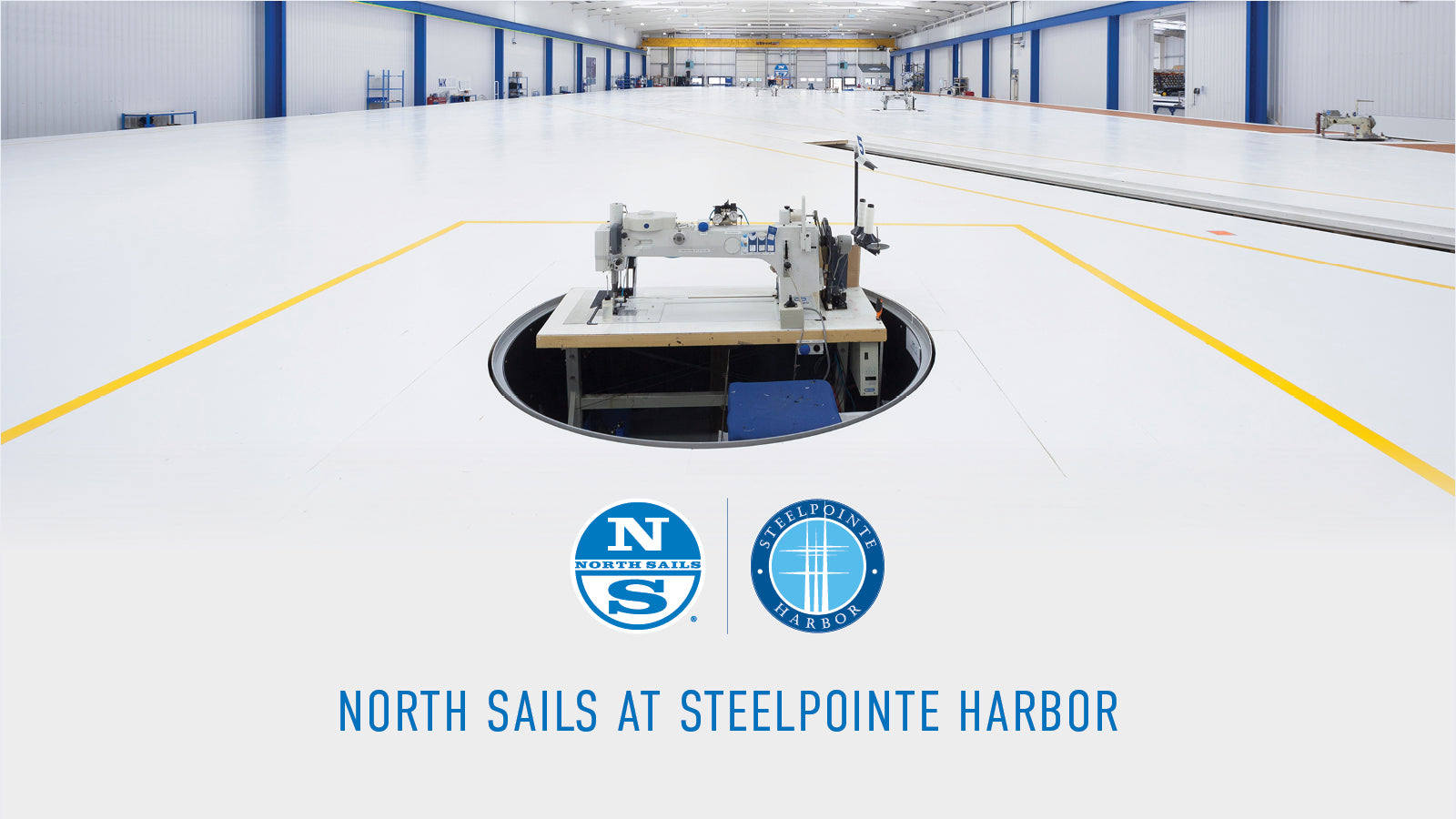
NORTH SAILS EXPANDS EAST COAST WATERFRONT PRESENCE
The World's Leading Sailmaker Finds a New Home at Steelpointe Harbor
North Sails is excited to announce that their Milford, Connecticut manufacturing, sales, and service loft is moving to Steelpointe Harbor in Bridgeport, Connecticut. The new loft brings several global departments under one roof and serving as the global headquarters for North Technology Group. This location puts North Sails at the heart of an exciting nautical destination that features the Bridgeport Harbor Marina, a 220-slip deepwater marina, waterside retail, and dining—all in a pedestrian-friendly neighborhood. The new loft at Steelpointe Harbor is one of seven North Sails-owned manufacturing lofts worldwide and is 35,000 square feet of purpose-built space. The North team has everything they need to construct and service a wide range of sails, from small dinghies to superyachts and coastal cruisers to Grand Prix racing machines. Ideally positioned on Long Island Sound, Local sailors will enjoy the easy access and customer-friendly sail pick-up and drop-off, as well as an extensive list of services; sail storage, washing, evaluations, measurement, new sail quotes, and more. The loft will also be an East Coast distribution hub for North Actionsports, the kiteboard and windsurf division of North Technology Group. "Our entire North Sails team is looking forward to opening our loft doors in Bridgeport," said North Technology Group Executive Chairman Tom Whidden. "We're excited to be a part of a growing waterfront community that has a strong marine industry heritage. Local and out-of-town cruisers and racers will benefit from having a new waterfront service loft on the East Coast. This is a great move for North Sails." Steelpointe Harbor developer Bob Christoph Jr. stated, “North Sails is the worldwide leader in sailmaking. I am thrilled to have them come to Steelpointe Harbor. This move will help the waterfront continue to grow as a destination for marine, retail, and dining activity.” Congressman Jim Himes added, “Steelpointe Harbor has been an area of exciting development in the city, and North Sails' decision to bring their operation here will only add to that momentum.” Bridgeport Mayor Joe Ganim shares, “I’m pleased to welcome North Sails to their new home in Bridgeport and bring their sail-making expertise to the marine industry that is being revitalized on our city harbor. North Sails will add to the city’s growing economy while providing visible activity on land, in the air, and in waters of our East Side – it’s exciting.” Local State Senator Dennis Bradley share, "North Sails coming to our city is great news for Bridgeport and the state as we begin our economic recovery." Since signing the lease, operations and sales teams have been working to optimize the new space for an enhanced customer experience. With unparalleled expertise, fresh working spaces, and convenience to the Bridgeport-Port Jefferson Ferry, this flagship loft builds on decades of experience to ensure our clients will have the best service and results possible. As longtime members of the Connecticut and Long Island sailing communities, the North Sails team is excited to welcome clients, both new and existing, to the space at Bridgeport Harbor Marina.
READ MORE
READ MORE
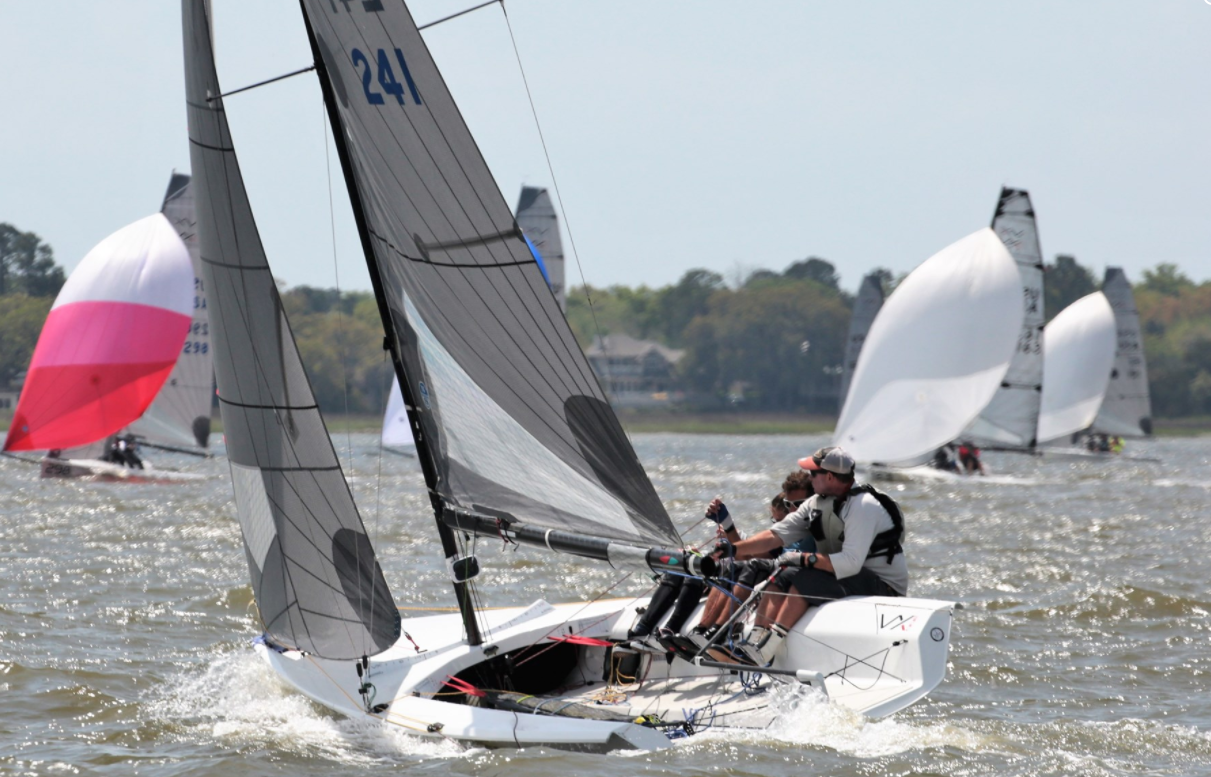
VX ONE: ONE OF THE MOST COMPETITIVE FLEETS AT CHARLESTON RACE WEEK
VX ONE: ONE OF THE MOST COMPETITIVE FLEETS AT CHARLESTON RACE WEEK
Doug Clark’s Angry Baboon Wins Charleston Race Week in a Tiebreak
After waiting two years since the last edition of Charleston Race Week, the VX One fleet was ready to leave it all on the water in the 2021 edition. Twenty-five teams from around the country arrived in Charleston for one of the most highly-anticipated events of the year. A 10-race series paired with great weather allowed for one of the tightest events the class has seen. Before the event got underway, North Sails’ Austin Powers, Mike Marshall, and Madeline Gill held a virtual happy hour for the fleet to review the winter series with tuning and sail trim takeaways, as well as preview CRW with a local knowledge briefing from John Bowden. The team previewed an update to the tuning guide which can be found below with the new adjusted turns found in red. A replay of the webinar can be found here.
Day one was dominated by Tudo Bem with Reed Baldrige, Austin Powers, and Michelle Warner. Jack Jorgenson’s SDR and Doug Clark’s Angry Baboon followed 8 and 9 points behind, respectively. The moderate and shifty breeze paired with substantial current convergence between the Ashley and Cooper Rivers rewarded the teams who found the best balance of current relief and wind velocity. Other highlights of the day included team Send It with a bullet right out of the gates.
Traditionally, day two is “moving day” at CRW and that is exactly what Chris Alexander’s team on Counterproductive did. With James Roe and Madeline Gill aboard, they were able to jump from outside the top five all of the way to a 6 point lead. Smart tactics amidst the tight racing in addition to superior boatspeed allowed them to find their way to top 3 finish positions in every race. Magic Bus came away with a race win in race 7, and Stan Stanton’s Zoo Crew took a bullet in race 8.
Going into the final day of the event, Counterproductive held a 6 point lead with three teams looking for some magic on the final day. With more west in the wind than the previous two days, the right side of the course was king to stay in phase with the current. After a race one victory by Tudo Bem followed closely by the Angry Baboon and USA 275, it was all to play for going into the final race of the regatta with four teams within two points of each other for the regatta win. The final start was won by Angry Baboon and they never looked back. Getting to the right early and staying between the competition and the mark, they were able to take the race and the regatta in a tiebreaker with Counterproductive. Not only did they win the regatta, but due to the competitiveness of the fleet, they were also awarded boat of the week.
Congratulations to Doug Clark, Rod Favela, and Emmi Triplett on the win; Chris Alexander, Madeline Gill, and James Roe in second; Michelle Warner, Reed Baldrige, and Austin Powers in third; and to all of the North Sails clients who competed. North Sails clients’ finished 1,2,3,5,6,7,8,9,and 10.
Rod Favela receives “Boat of Week” trophy for Angry Baboon. Right: Second place, team Counterproductive
Team Counterproductive
READ MORE
READ MORE
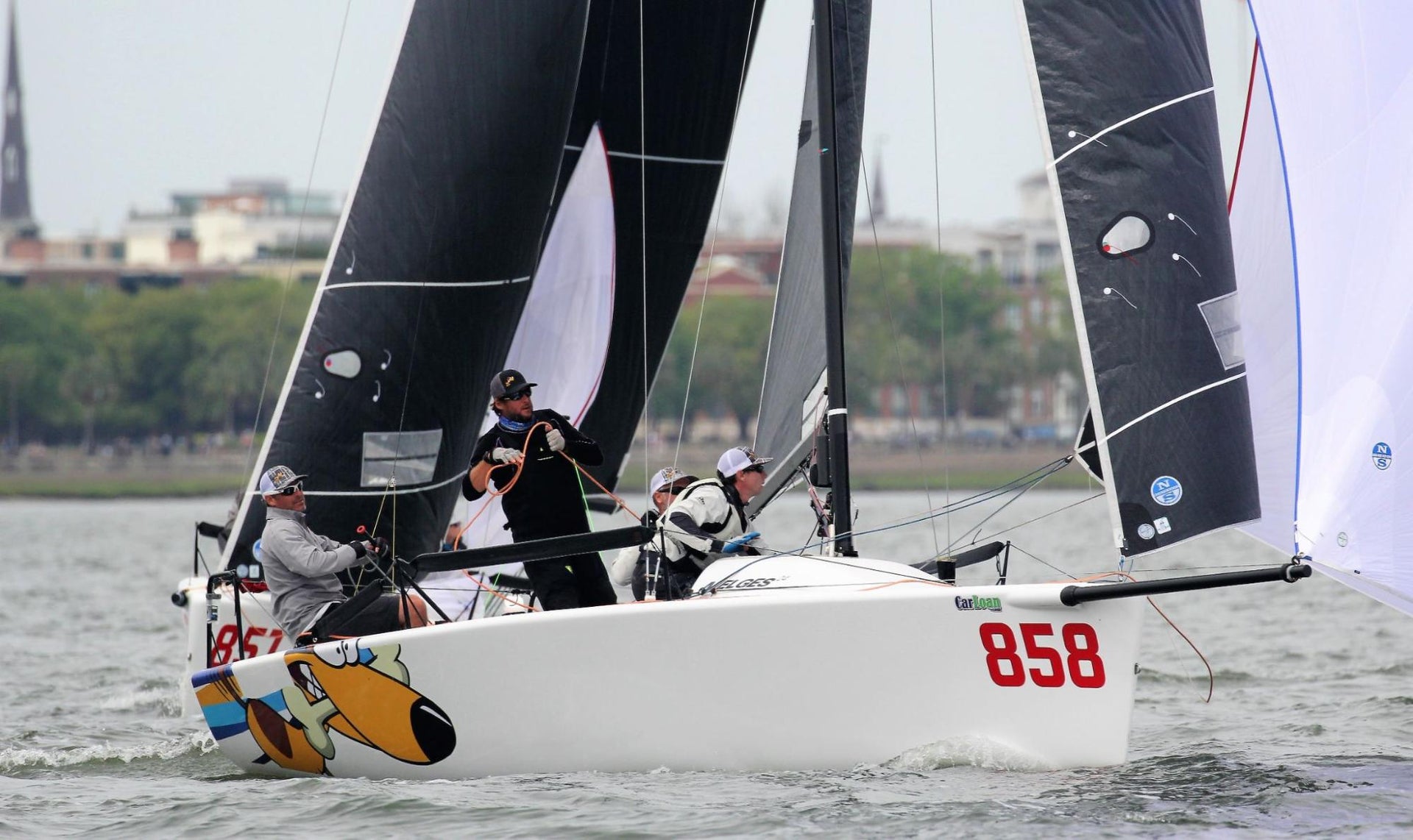
NORTH CLIENTS SHINE AT CHARLESTON RACE WEEK
NORTH CLIENTS SHINE AT CHARLESTON RACE WEEK
Fast Designs Excel In Six Divisions and Boat of the Week
Travis Weisleder’s Lucky Dog dominates the Melges 24 fleet. 📸 Pricilla Parker
The 2021 edition of the Charleston Race Week was a great success for North Sails clients in one design and ORC. The overall vibe from sailors was excellent, and everyone was thrilled to be back on the water sailing after a year missed. Charleston didn’t disappoint, providing exciting and challenging racing conditions on the infamous Cooper River. Solid teamwork and talent could be seen across all courses, proving that this year is off to a positive start with a solid kick-off event to welcome the Spring sailing season in North America.
In the Melges 24 class, Team Lucky Dog won the event with three bullets followed by Laura Grodin’s Dark Energy in second place. Melges 24s powered by North finished 1,2,4*,5,7,8,9,10.
Laura Grodin’s Dark Energy, 2nd Place in the Melges 24 Fleet. 📸 Will Keyworth
Doug Clark’s Angry Baboon, VX One Winner and Boat of the Week.
After the postponement of the 2020 edition, the VX One fleet was ready to leave it all on the water. Twenty-five teams from around the country arrived in Charleston for one of the most highly-anticipated events of the year. A 10 race series paired with great weather allowed for one of the tightest events the class has seen.
Congratulations to Doug Clark, Rod Favela, and Emmi Triplett on the win; Chris Alexander, Madeline Gill, and James Roe in second; Michelle Warner, Reed Baldrige, and Austin Powers in third; and to all of the North Sails clients who competed. North Sails clients finished 1,2,3,5,6,7,8,9,and 10 in the VX One Class.
Team Stampede, winners in the J70 class.
The competition in the J/70 class was no different. Twenty-seven teams arrived in Charleston ready to battle for the title, the largest J70 regatta since the beginning of the pandemic. Congratulations to Bruno Pasquinelli and team Stampede for sailing a brilliant 9-race series powered by North’s F-1 mainsail, J-2+ Jib and AP-1 Asymmetric. North clients finished 1,3,4,6,7,8, 9* in the J/70 class.
In the J/22 class, North clients swept the podium with Justin DaMore’s team Yem winning the series. North Clients fueled by 3Di, Teamwork, Hooligan, and FogDog also took first place respectively in ORC A, ORC B, and ORC D divisions.
ORC B winners Robin Team’s Teamwork. 📸 Will Keyworth
READ MORE
READ MORE
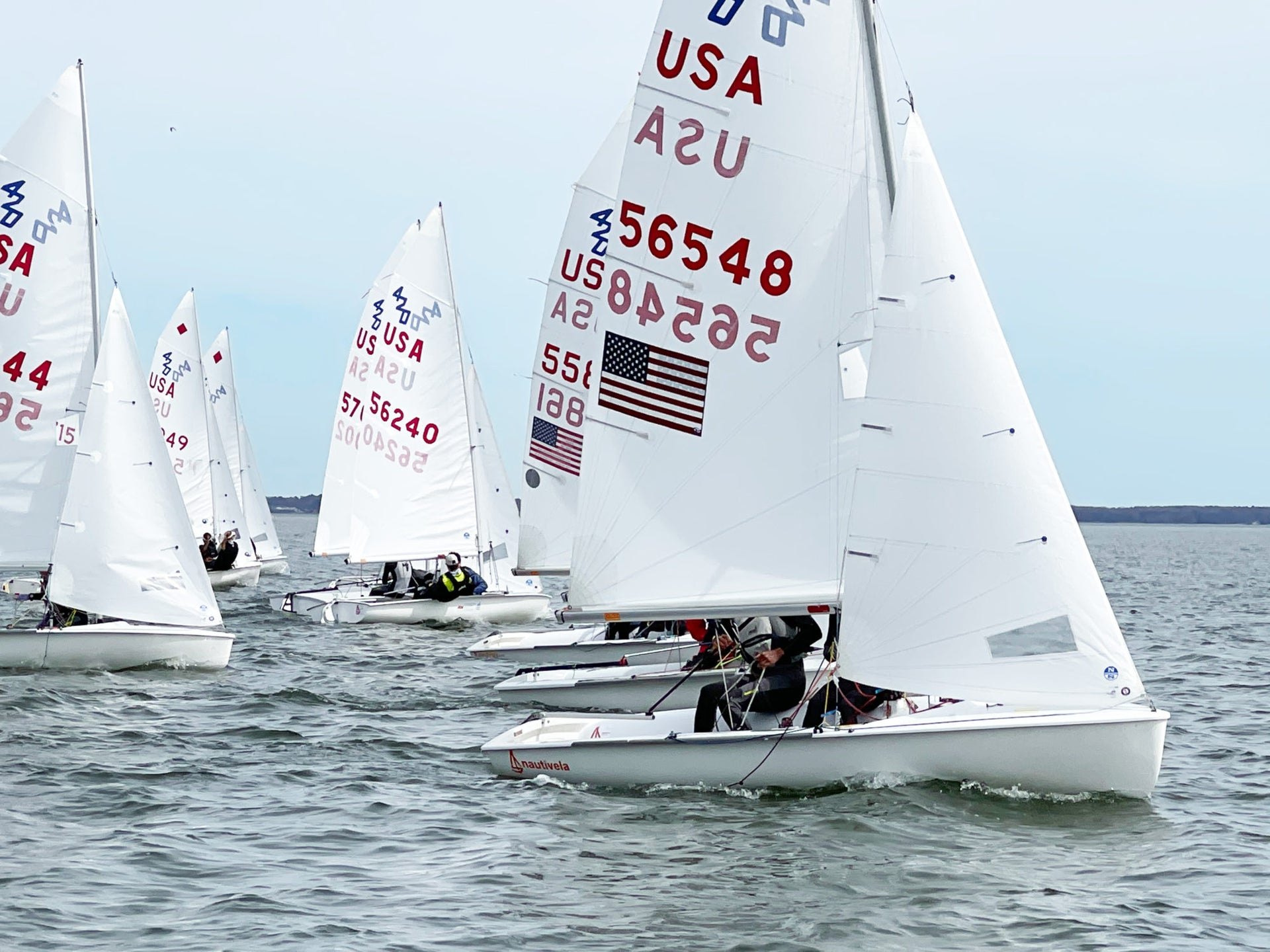
I420 EARLY BIRD REGATTA
I429 EARLY BIRD REGATTA
First-Ever Event Hosted by Annapolis Sailing School
Annapolis Sailing School played host to the first-ever i420 Early Bird Regatta, with 11 teams arriving from around the region to compete in this great one-design class. First off, this is one incredible venue; Annapolis Sailing School has a picture-perfect spot near Bembe Beach in Annapolis, and a killer beach launching site with tons of room and facilities. If you ever want to recommend sailing lessons to someone, put Annapolis SS on the top of your list! Also hosting was the new i420 team on the block the S1D Youth Sailing Team, and our very new and young players were very excited to have such great talent come and visit our new home! All competitors were greeted with gifts and goodies, including wick-dry technical shirts from North Sails and dry bags from Sail1Design, in lieu of trophies for the top finishers.
Most all teams arrived early to practice on Friday, and wow, what a day! The temperatures soared to 80 degrees and beautiful sun, but so did the wind speed… up to 35 knots… and although several brave teams went out, they realized that the only sail training to be had was more survival than anything else. The forecast for Saturday was a bit grim all week… very light-to-no wind, so we all crossed fingers.
Apparently, that works! Saturday dawned with another beautifully sunny day, and around 930, a southerly made its way down the Bay and locked in, and we had 6 epic races in sun and 6-14 knots. We never really had to move marks more than about 50 yards, and PRO Jamie Gilman (St. Mary’s Seahawk ’06) orchestrated absolutely flawless racing!
Sunday’s forecast also became ominous, with the possibility of T-storms and gusty winds. Well, we didn’t get that exactly, but we did battle a fog bank that would have made Maine residents proud. Again the RC fearlessly set out to sail, herding the i420 sailors into an open area, and again, almost miraculously, the fog lifted and allowed for 2 more awesome 8-19 knot races before teams went in to pack up and head home.
I hope all youth coaches and sailors consider the i420. This boat is an absolute blast to sail, and teaches so many great lessons about dinghy sailing, offering sailors almost unlimited improvement potential. It is not a difficult boat to sail at all, and there are a lot of uninformed misconceptions out there, including how expensive the boat is (it isn’t), and how technical it is (it isn’t), and how few events there are (there are a lot more than you think). It is, (just ask our countries best college coaches and youth coaches) the gold standard for youth sailing training, and that’s why it is the standard around the world, enjoyed by thousands of sailors.
Results
We had 8 great races for this regatta, and continuing their pretty amazing run, Luke Woodworth and Tommy Sitzmann won convincingly, winning most of the races. Luke is a great example that in the i420 Class especially, crews (although they never get top billing) are absolute difference-makers; their athletic work in the front of the boat although often overlooked is a big key to team success.
Full Results
READ MORE
READ MORE

TECH JOURNAL: NORTH 3Di FOR THE 49ER AND 49ER FX CLASSES
TECH JOURNAL: NORTH 3Di FOR THE 49er & 49erFX CLASSES
After an intense bid process that included rigorous sail testing, the class unanimously chose to adopt 3Di, the most modern sailmaking technology
When North Sails was asked by the 49er and 49erFX classes to propose an update to their current sails, the first step was to collect accurate data about how they were performing and what could be improved. We reached out to Julian Bethwaite, John Clinton, Blair Tuke and Peter Burling, as well as many others who are involved with the class. The feedback was overwhelmingly in favor of better consistency in the sails and more longevity. Our goals quickly became very clear.
North Sails takes a scientific approach to sailmaking. The North Design Suite is a powerful set of proprietary software that allows our designers to model simulations, test hypotheses and eventually, arrive at an optimized solution for the engine above deck. This data-driven approach was visibly on display at the 36th America’s Cup, where North designers were embedded with Emirates Team New Zealand, Luna Rossa, and INEOS Team UK.
For the 49er project, it was months of design work and on-the-water testing to conclude that the best sails for the job were 3Di upwind sails. The process that we used to get there is described below.
Modeling & Materials
Our discovery for the 49er project began with an eagerness to fully understand the boats and the existing sails. Consistency of both manufacturing and shape, along with longevity, were identified as key areas for improvement. We learned that sailors were buying up to seven inventory sets just to find two that are consistent, so we set a goal to build a set of sails that would be consistent and competitive for up to three regattas. That would reduce sailor aggravation, drastically improve consistency, and also reduce overall inventory costs.
Modeling:
First, we built a virtual model in the North Design Suite that included the shrouds, mast and sails and made it possible to change the tuning for different wind ranges. From there, sail designers Mike Marshall and Mickey Ickert used a combination of five NDS tools (Desman, Spiral, Warps, Flow and Membrain) to run simulations and accurately predict the performance and shape of the current sails—as well as an initial recommendation for new sails.
Material Choice:
Once we could accurately predict sail performance and flying shape, we A/B tested two material options that could achieve the right shapes: a paneled laminate ; and North 3Di. The paneled cloth matched the current class specs while the North-manufactured sailcloth provided improved consistency in both cloth quality and construction. Made using the purpose-built EXact x-ply machine, the sail cloth was produced using a very precise gravure process to ensure perfectly measured adhesive coating; even glue distribution (and less glue overall) would reduce weight without sacrificing strength.
While our paneled laminate sails would’ve been a small step forward, we were certain that 3Di would be a much more significant improvement in our stated goals: improving both repeatability and longevity.
3Di would also be vastly different from the current class sail material and construction, so we knew it was important to prove that it would be dramatically better.
Fine-Tuning:
With our materials chosen, we fine-tuned our model to match the cloth. For the paneled designs, the goal was to optimize the shape through broad seaming and luff curves. For the 3Di sails, we leaned on WARPS™ for a layout that would maximize durability. We looked at both element strain and yarn strain in the model, which we can control well with 3Di.
Why 3Di tested better than paneled sails
When modeling, strain maps highlight “hot-spots:” areas where the element strain (a measure of the movement in the cloth) is too high relative to yarn strain (a measure of the tensions in the yarns). Small tweaks in tape layout may help one map but hurt the other, so we run the model until we strike the optimal balance. The strains don’t have to be brought down to zero; they just have to match each other.
Tension is the enemy of sail shape, and the key to designing a versatile, predictable sail is to align that tension with the direction of movement. Like an elastic, the more a sail is stretched against the yarn path, the less likely it is to come back to its intended shape. By optimizing tape materials and orientations, 3Di allows us to minimize distortion under load, which will help with consistency, performance, and longevity.
On paneled sails, the yarn strain is high but the element strain is low—especially in the main. That means the sails are pliable, but they will change shape over time.
When compared to the 3Di sails, the original 49er main showed the element strain to be high in the upper third of the sail. Based on our experiences, this led us to add more bias support and use tapes at different angles from our standard load path layout. That settled the element strain map and made it more consistent with the yarn strain map.
On the paneled main and jib, the map showed high yarn strain up the luff of both sails. There wasn’t much we could do about that in the paneled sails, but in the 3Di sail we added a Helix structured luff group to both main and jib. That settled the yarn strain map and brought it more in line with the element strain map.
A 3Di main that uses a custom-engineered layout and a 3Di jib that uses the standard load path layout best matched the maps of the element and yarn strains. And by settling the luff loads, the Helix luff structure would make the cunningham and halyard more effective.
No detail is too small
After developing prototype designs that fulfilled our primary goals, it was time to look at the small but important details that contribute to overall performance.
The tack flap connection in the main was noted as an area of high load and distortion since it is the point of convergence for the two tack flaps and the bottom batten. We reinforced it in the paneled sails, and then re-thought it in the 3Di sails to be all one piece. That single structure will transfer cunningham load to the head of the sail, eliminating a high failure and wear point.
Next, we built prototype sails in both paneled and 3Di, and we invited several experts to go sailing.
Sail Testing
With the help of 18’ Skiff expert Matt Steven, the prototypes were put to work by the top New Zealand 49er teams. After several on the water testing sessions, the simulations we’d run in the North Design Suite were validated.
With the help of 18’ Skiff expert Matt Steven, the prototypes were put to work by the top New Zealand 49er teams. After several on the water testing sessions, the simulations we’d run in the North Design Suite were validated.
We were very pleased with the performance of all the new sails against the current designs. Both paneled and 3Di held their shapes and were more consistent than the class standard, though as we predicted the 3Di sails were smoother, more consistent, and held their shapes better. Shortly after our testing sessions, our recommendation that the class adopt 3Di was accepted.
For both training and regattas leading up to the 2024 Olympics, 49er and FX sailors now have a much better option for sails: 3Di mains and jibs. They will be built with the same sail technology used to make identical sails for one design classes such as the Volvo 65s, AC50s, Moth and Melges 20; a constant and replicable taping and mold, followed by a consistent layout and finishing team. We met our project goals in order to help you meet yours—another example of the North Sails scientific approach to sailmaking.
Testimonials: Longevity
18ft Skiff – In four years, David McDiarmid’s Honda Racing earned the JJ titles, widely recognized as the 18’ Skiff’s World Championship. The team accomplished this with one set of 3Di sails. Between training and races, these sails saw thousands of hours on the water.
Moth – The class has almost entirely switched to 3Di sail, which like the 49er, is a full battened mainsail with very high loads. Most of the sailors buy one sail a year and use it for all of their major events. Comparatively, sailors would go through 2-3 paneled sails per in advance of each major event. Tom Slingsby says: “The North 3Di Moth sail has a longer durability than any sail on the market I had previously used, and any sail currently on the market. If I was heading into a world title this year, I would have no issue using the sail I used to win the 2019 World Championship. The life of the sail is outstanding.”
Around the World Ocean Racing – North 3Di has been tested through hundreds of thousand hours and offshore miles. Whether the one design Volvo 65, the latest generation IMOCA or the awe-inspiring Ultim trimarans, 3Di is made to outlast the adventure. For example, the sails used by Thomas Coville in his 2016 around the world record were used for a year and a half of training and practice leading up to his attempt. He reported no sail failures in the 42 day trip around the world.
READ MORE
READ MORE
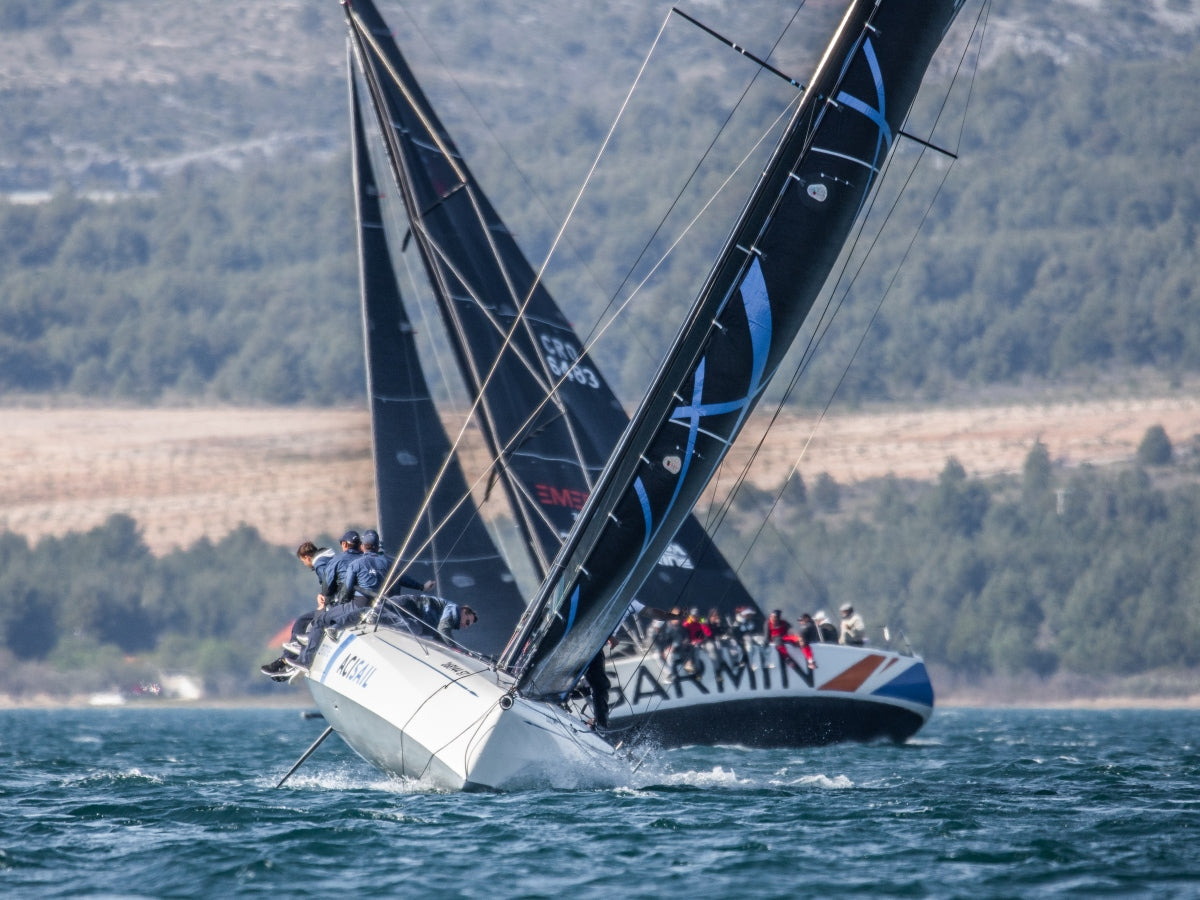
1. Skradinska regata krstaša
1. Skradinska regata krstaša
📸 regate.com.hr
Jedriličarski klub Kon Tiki u suradnji s ACI marinom Skradin organizirao je 1. Skradinsku regatu krstaša, a vjerojatno i prvu regatu krstaša s hrvatskim posadama na Prokljanskom jezeru.
Inače se tijekom charter sezone na ovom jezeru često mogu vidjeti regate charter flota sa stranim posadama, tako da to nije neobična scena za promatrače iz Bilica i iz Rasline, ali ne može se reći i da su na prethodnim regatama često mogli vidjeti ovoliko "crnih" jedara... kako onih u raznim karbonsko-kevlarskim vrstama izvedbe, tako i onih koja su baš crne boje.
Dobra promidžba ove regate okupila je u Skradinu stvarno impresivnu flotu. Stigle su jedrilice iz Zadarskog, Šibenskog i Splitskog akvatorija i može se reći da je to bilo okupljanje većine najatraktivnijih regatnih krstaša s ove strane Jadrana. Da bi flota stvarno bila potpuna nedostajali su Damaco, Dubrovnik, Paikea, Mataran, Stravaganza i obje Tutte Trieste.
Ukupno je na startnoj listi bilo 19 jedrilica, a odjedrena su ukupno četiri plova u jedinom danu natjecanja. Zbog konfiguracije Prokljana organizator je imao na izboru samo dvije opcije ili jedrenje olimpijskog trokuta ili jedrenje u štap polju. Izabrana je ova druga varijanta, a kako je puhalo jugo tako je postavljen štap čija je duljina bila nešto manja od 1.5NM, a kako se svaki štap morao obići četiri puta, ukupna duljina rute jednog plova bila je oko 5.5NM.
Vremenski uvjeti, može se reći bez ikakvih pretjerivanja, bili su idealni! S obzirom na veličinu jezera nema prostora da se raskopa vodena površina (ipak nije riječ o moru, već više o slatkoj nego i o bočatoj vodi), pa se jedrilo po praktički "flat" uvjetima. U prvom plovu je pak vjetar bio najslabiji. Puhalo je desetak čvorova, a kako je dan odmicao tako je i jugo jačalo, da bi u posljednjem plovu puhalo čak i oko 20 čvorova.
S obzirom na broj dizanja i spuštanja spinakera, te broj manovri koje je svaka jedrilica morala napraviti, bilo je izrazito atraktivnije i napornije nego na mnogim drugim regatama na čije rute smo već tradicionalno naučili i koje se rijetko kad promijene.
Izuzmu li se ligaški nastupi, te regata za CRO ORC D-Marin Cup, ovo je bila prva ozbiljnija regata krstaša za "široke mase". Možda je to razlog neuigranosti pojedinih posada, jer se većina sudionika u pojedinim trenucima našla u nekim situacijama koje bi publici bile vrlo atraktivne. Bilo je štraorcavanja, pražnjenja genakera, pa čak i genakera oko štrajeva i kormila. Uglavnom, nitko nije prijavio nikakvu ozbiljniju štetu, kao ni veće ozljede.
📸 regate.com.hr
Što se tiče rezultata, regatom je dominirala Furiosa iz JK Uskok. Posada Igora Čupića pobijedila je u čak tri plova, dok je u posljednjem bila druga. Tada im je vodeću poziciju oduzela ACI-jeva posada na Clubswanu 36 s Ivanom Kljakovićem Gašpićem na kormilu. Njegova družina je u prva tri plova završila na drugom mjestu.
Najstabilniji rezultatski gledano bila je još jedna Uskokova posada, ovog puta na jedrilici Gringo 3. Ekipa Roberta Sandalića je sva četiri puta ciljnu ravninu presjekla na trećem mjestu.
Zanimljivo je bilo prognozirati rasplet na regatnom polju s obzirom da je svaka od jedrilica u prvih deset imala neki svoj poseban adut.
Furiosa, jedrilica koja je ujedno proglašena i najbržom na regati, osim što je bila najduža (ako se izuzme Bavaria Cruiser - Elfida), u svom arsenalu ima i vodene balaste koji su joj bili od izrazite pomoći u odnosu na foilove po kojima se isticao Clubswan 36.
S druge strane Gringo 3, All4One, Mr.J su bez posebnih dodataka i jedrilice su klasičnog tipa, ali svojom linijom i jedrima pripremljenima za jedrenje u ORC Cupu, uspješno su se nosili protiv još jednog openaša s vodenim balastima, Magnuma X3, ocenske jurilice Crazyja itd.
U svakom slučaju bio je to događaj kojeg se ne smije propustiti dogodine na drugom izdanju, jer ovakvi uvjeti jedrenja s dovoljno vjetra, bez vala, pa čak i podatak da je to jedina regata krstaša na slatkoj vodi u Hrvatskoj, ističu Skradinsku regatu u kalendaru HJS-a. Jedino je šteta što su još uvijek na snazi zabrane okupljanja i organiziranja zajedničkih druženja za sudionike regate, jer u ambijentu marine u Skradinu i to bi sigurno bilo za pamćenje.
A za one koje zanimaju rezultati, zajedničke možete pronaći na ovom linku, dok su rezultati po grupama dostupni ovdje, a vrlo bogata foto galerija može se pronaći na ovom linku.
READ MORE
READ MORE

NORTH SAILS NAMED SAILMAKER FOR THE 49ER & 49ER FX CLASSES
NORTH SAILS NAMED SAILMAKER FOR THE 49er & 49erFX CLASSES
The highly competitive one design class chose to adopt 3Di, the most modern sailmaking technology available
North Sails, the world’s leading sailmaker, was recently named the supplier of choice for the 49er and 49erFX class mainsails and jibs in the lead-up to the 2024 Olympic Games.
After an intense, months-long bid process of rigorous sail testing, North 3Di Technology was the unanimous choice of a selection panel including Olympic medalists and coaches, the 49er and 49erFX Class measurers, a builder’s representative, and the copyright holders.
The class was motivated to evaluate their one design sails by the sailors, who requested improvements in sail consistency, longevity, and durability. After months of sail-testing comparing 3Di head to head with the most current products from other sailmakers, the class chose to adopt 3Di, the most modern sailmaking technology available.
“This is a very exciting development,” says 49er Champion and America’s Cup Defender, Blair Tuke, a two-time medalist on the selection committee. “It’s a first for an Olympic Class to be able to select equipment that optimizes performance, consistency, longevity, and has a positive environmental impact, all in one package.”
After an exciting 36th America’s Cup, Tuke has become quite familiar to the power of 3Di, especially after Emirates Team New Zealand’s successful defense of the Auld Mug. Three teams (Emirates Team New Zealand, Luna Rossa Prada Pirelli, and INEOS Team UK) trusted North Sails tools, design expertise, and technology to power their AC75s.
The decision is a testament to North 3Di’s versatility and adaptability across a wide range of boats and sail types. Specialty-sourced raw materials for 3Di tapes and perfectly consistent shaping on a full-sized 3D mold have moved 3Di a generation ahead of the traditional paneled construction used by other sailmakers; this includes both woven sailcloth and the Mylar-based string sails. The precision engineering of proprietary 3Di molded construction makes it possible for North Sails to produce repeatable one design sails in both shape and detailing. This is both a huge cost savings and a performance upgrade for 49er programs that previously had to purchase and test multiple suits to find sail they liked.
Beyond material choice, North Sails deployed its scientific approach to understanding the baseline and then engineering an optimized solution for the one design 49er class.
49er and 49erFX teams will use 3Di mains and jibs for both training and regattas in the lead-up to the 2024 Olympic Games. For much more detail about the intensive development path North Sails took to optimize sails for the 49er and 49erFX, read the case study.
READ CASE STUDY
READ MORE
READ MORE
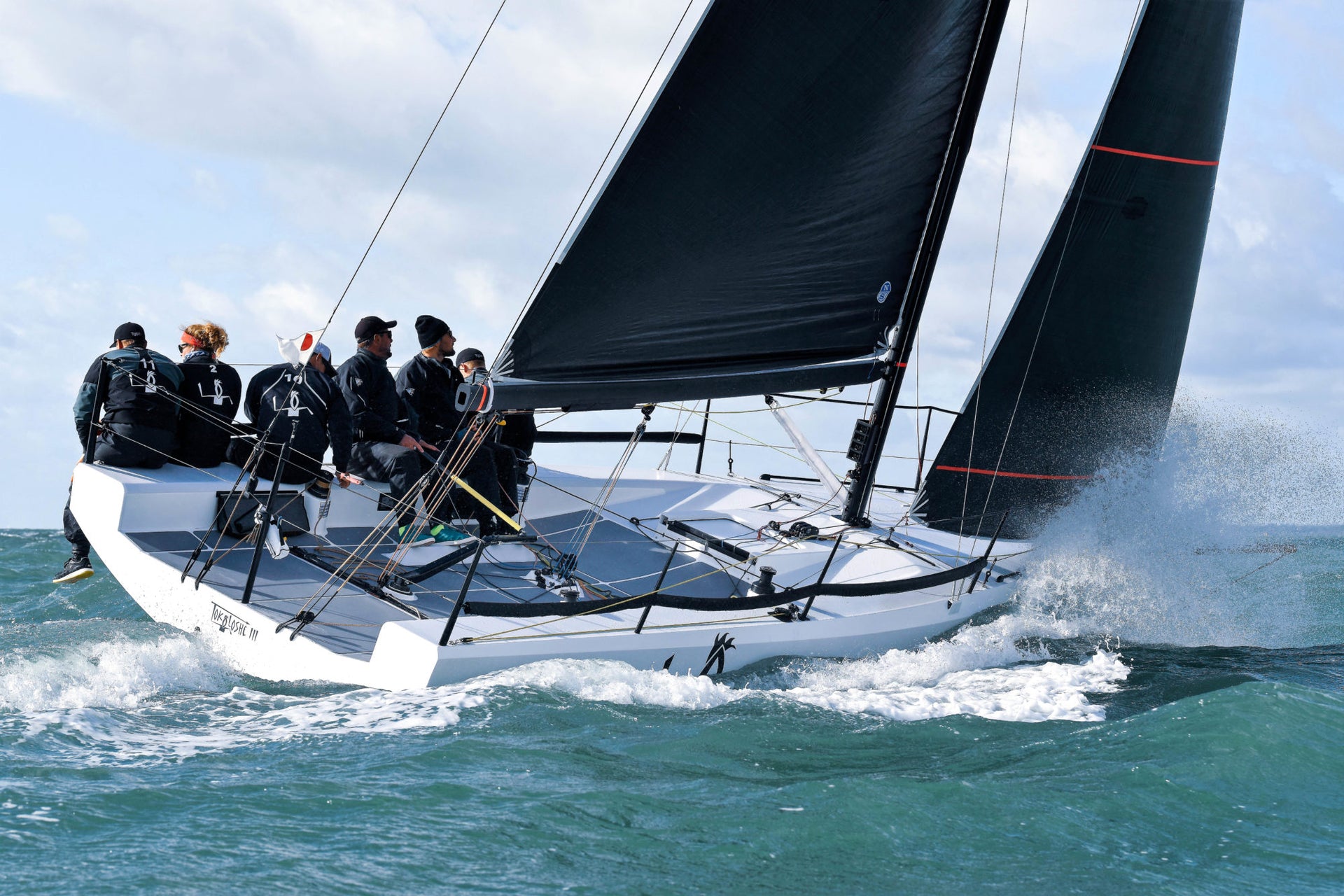
THE CAPE 31 IS CAPTIVATING SAILORS WORLDWIDE
THE CAPE 31 IS CAPTIVATING SAILORS WORLDWIDE
A Project Fueled by Passion
Tokoloshe III 📸 Rick Tomlinson
Named after its place of origin, Cape Town, South Africa, the worldwide growth of the Cape 31 fleet all started with one man’s vision; Highland Fling owner and avid racer Lord Laidlaw. Eager to stimulate the industry and create a class for young talent, Laidlaw commissioned Mark Mills to design the first five Cape 31 hulls, of which he soon found buyers. “The promotion of events in South Africa was integral to get the class on its feet and make it attractive for people to buy and sail these boats,” Mills remarks. “Now the fleet is self-propelling, and Laidlaw has taken a step back to leave it running as a commercial operation.”
Cape 31s are 31-foot high-performance keelboats targeted at the highest level of regional/club sailing. They represent the most advanced form of production keelboat without getting into high-cost, complete carbon construction. Designer and Irishman Mark Mills of Mills Design is one of the most successful yacht designers of recent years, and he has taken the Cape 31 hull design under his wing. To date, 19 boats have been built, with 10 actively racing in Cape Town, and a growing fleet of eight boats confirmed for the UK. “I think a vacuum has been created after the peak of the Melges 32,” Mills explains. “The Cape 31 is my favorite design because it is happy in all wind ranges – great in the breeze and sails both upwind and downwind incredibly, so it will naturally succeed wherever it goes. We are seeing the result of this now in the UK.”
After witnessing the fleet’s success in South Africa, father and son duo Mike and Dave Bartholomew brought the first Cape 31 over to the UK in a container, naming her Tokoloshe III. As she whizzed around the Solent, winning all but one event in IRC last season, it did not take long for people to catch on. Volvo Ocean Race, World Match Racing Champion, and IRC/ORC World Champion Dave Swete spotted the hype and jumped onboard in October 2020 when he ‘fell in love with the boat.’ “I think there was always a gap in the market for a smaller boat that ticks all the boxes; a fantastic One Design boat which wins under IRC with a supreme boat builder behind it,” he says. “Between myself, Dave Bartholomew, and Suzy Peters, we decided to launch the class in the UK. We are proud to have got the regattas and class rule right, and all of these ingredients seem to be combining well as we are already welcoming the eighth boat to the UK fleet!”
Tokoloshe III 📸 Rick Tomlinson
Ever since the fleet’s activation in South Africa four years ago, North Sails has proudly been the sailmaker of choice. Our sail designers invested a lot of time to develop the sails from how they started as paneled class sails. North Sails Cape 31 Class Expert Pete Redmond confirms that “3Di is the optimal product for boats racing in the UK and in an IRC arena. The lightweight and durable components of 3Di allow the 31-footers to compete against a quality fleet of 40-footers in an upwind beat and dominate them downwind. The sail plan needs the ability to change depth drastically to get the most speed from both light airs and big breeze, and 3Di mainsails and jibs allow this to happen.’’
Mills adds, “For a lightweight 31-footer to win in IRC is extraordinary—and to win in a class of boats up to 9 feet bigger is historically unprecedented.”
With inquiries about the boat throughout Europe, it is no surprise that the US market is also gaining momentum with the first boat already sailing in Louisiana. Swete’s vision is to get a core group of owners together, to grow the fleet in one hit. Discussions between the UK and US fleets involve ‘meet-up’ winter events in Florida and/or the Caribbean. “Dave has enough energy to take on the US, and that gives owners a single target person to deal with,” comments Mills.
“The sail plan needs the ability to change depth drastically to get the most speed from both light airs and big breeze, and 3Di mainsails and jibs allow this to happen.”
One of the Cape 31 fleet’s original concepts is that all the boats will be bright and colorful, which the South African fleet represents well. “I’m on a mission to get the new boats, firstly in the UK, but hopefully in America afterward, to hang on to that ethos,” Mills explains, adding that it would make a nice change from more white hulls on the start line.
The Cape 31 season on the Solent will be a busy one, with six class events and three IRC events. All will offer competitive Grand Prix racing with a focus on fun both on and off the water. First up on the 21st – 23rd May is the Vice Admirals Cup, where there are enough boats to make up a class. Next is the Royal Southern Yacht Club June Regatta, where the fleet will mix with the Performance 40s. Other highlight regattas include the inaugural Royal Thames Yacht Club Invitational Regatta, and Tattinger Royal Solent Yacht Club Regatta. The season will come to a close with the UK Nationals at the Royal Yacht Squadron, but 2022 events are already in the works.
To learn more about this up-and-coming class, get in touch with Cape 31 Class Captain Dave Swete. For information on sail inventory choices, contact North Sails Class Expert Pete Redmond.
The boats are set up to sail with a crew of seven or eight, with a limit of three professionals and a weight limit of 595kg. The option to sail with eight people encourages lighter sailors onboard, thus encouraging women and families to get involved.
Tokoloshe III 📸 Rick Tomlinson
Tokoloshe III 📸 Rick Tomlinson
READ MORE
READ MORE
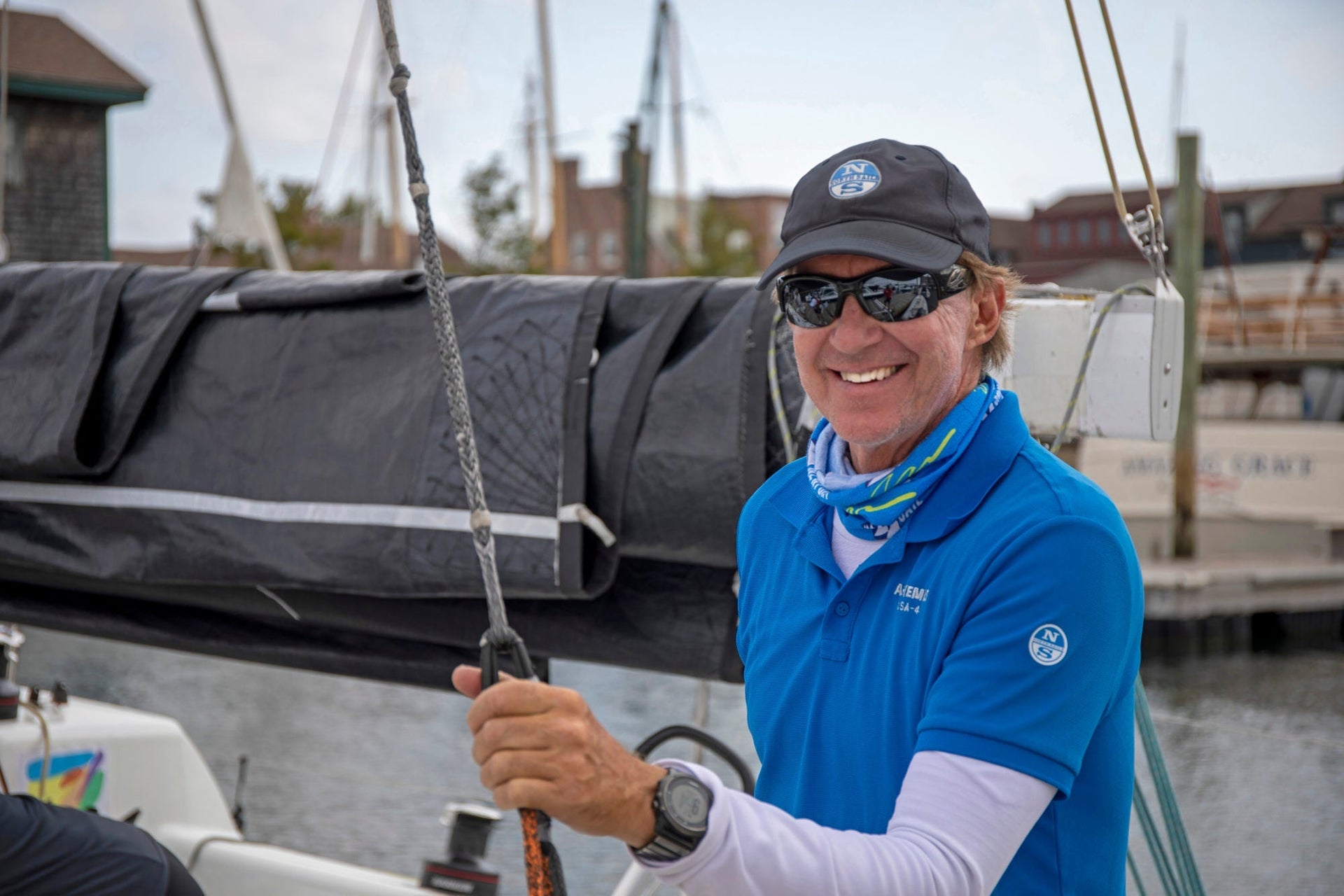
ALL PART OF THE JOB FOR KEN READ
FOR NORTH SAILS PRESIDENT KEN READ, IT’S ALL PART OF THE JOB
Fresh off the 36th America’s Cup and smashing a race record to Cabo (from Newport Beach), How Does the President of North Sails Navigate a Jam-Packed Schedule?
From calling the America’s Cup to helping steer North Sails through the unexpected in 2020 and then going on to break race course records, North Sails President Ken Read returns to HQ after a wild winter, geared up and ready to keep pushing North Sails and all of North Technology Group to that next level.
If you run into Ken Read on the dock somewhere, he’ll probably be friendly, even chatty – he’s just that kind of guy. But if you ask him, “so what is it that you do for a living?” make sure you have a few minutes to spare.
“What do you do for a living?” is a straightforward question with a straightforward answer (in theory): President of North Sails. But the details are a bit tricky to explain for Read, a world champion, America’s Cup skipper, around-the-world offshore racer turned business leader who’s also an America’s Cup TV commentator and record-breaking sailor. At the heart of all these activities: to make sure, without doubt, North Sails remains the driver behind everything he does– but Read’s all-in approach means his schedule is as diverse as a start line at a Wednesday night beer can race.
After helping navigate North Sails through a global pandemic, Read finished the year living in New Zealand for four months as part of the 36th America’s Cup commentating team. The location change also helped him spend lots more time focused on the North Technology Group companies in the Southern Hemisphere. Less than 36 hours after Emirates Team New Zealand secured their win, he hopped on a flight to go help win and ultimately break the Newport to Cabo Race record (in one day, 21 hours) onboard Roy Disney’s turbo’d Volvo 70, Pyewacket. Before his final leg home to Rhode Island, Read got on the phone to talk us through the last couple of months. He did admit to feeling “pretty whipped,” but that confession aside, his enthusiasm was intact. Read appears to wear many hats simultaneously, but it all leads towards making sure North Sails, and all the North Technology Group companies continue to lead that way with their data-driven approach. After this, all of his other jobs fall into place.
“It’s my job to get out and about, be seen and shake hands,” he says, “and make sure that the sailing world knows that North Sails is here to help, that all of the North Technology Group companies are here to make their experience a better one. There are all kinds of detail-oriented jobs behind the scenes, but in a leadership role, you have an obligation to promote the sport. Which in turn promotes your brand. Remember, the rising tide helps all.”
“I got to New Zealand on December 1st,” recalls Read. “It was one of the bonuses of doing that job on TV: it got me to that part of the world where the sailing action was at its highest. I was in the right place at the right time given my position within the North Technology Group and North Sails.”
It was “a lot of work but well worth the effort” for Read, a man whose recent schedule was certainly dizzying. “A day that included commentary was hard, but it wasn’t every day. I’d start around 5.30 am with the Europe calls, then have three hours with North America, then head quickly off to commentating. Because the races were so late in the day, we didn’t report until 11 am to meet with the producers. We all had our insiders embedded sailmakers!!> inside the teams who were great at making sure we were accurate. They wouldn’t give us their company’s secrets, but they made sure we weren’t making things up on air. We’d spend a couple of hours preparing the show before going into the booth at about 2 pm to do a couple of rehearsals—two to three hours of non-stop talking followed, which was super fun.
“They loved it when I talked about sails – the producer and director were like, ‘what do you think we got you here for!’ I got to point out all the amazing sail features that the world had never seen before, and the rig and the whole ‘engine above the deck’ was a phrase I used all the time. It turns out I have heard that phrase all over the place since. A phrase coined initially by the late remarkable Terry Kohler.
“We’d end the show around 6 pm and have a half-hour debrief. I’d often go meet a client or one of our folks or my wife for a beer on the Viaduct, have a quick dinner, and likely be on the phone for a couple of hours during the night. It was fun staying absolutely current and up to date with my North Sails job. It was fun talking about the sport that we love.”
Despite the lack of sleep, it’s clear Read embraces all aspects of his role, from the marketing side of things to the more all-hands-on-deck projects.
“It was always the plan for me to join Pyewacket in the Newport to Cabo Race straight after the America’s Cup,” he said. “I missed sailing – we all do, everybody reading this article misses sailing right now – and Roy Disney and I have been talking about sailing together for a long time. I’ve known Roy and his project manager Robbie Haines forever – I did an America’s Cup with Roy back in 1995 and won two world championships with Robbie– and the Cabo race is a classic. It fit into my schedule, but we didn’t expect the America’s Cup would take a week longer than planned. So it became a little tight with the Cup ending in the afternoon and me flying out the next day. 36 hours after landing in LA and a great dinner with my daughter who lives out there, we were sailing 800 miles to Cabo with a bunch of legends in 25 knots of breeze.”
By the time he had jumped on the Volvo 70, Read was tired– very tired. But his jet lag played in his favor when he joined the watch system onboard. “The time zone I was on didn’t matter!” he laughed.
He loved seeing Pyewacket’s Helix A3 sail in action, too, a North Sails structured luff technology they used 90% of the race.
“Veteran Sail designer Steve Calder and North Sails project manager Brian Janney did a great job injecting a couple of new sails into this program which were exactly the right sails for the job. This sail proved to me that the Helix concept is real. This boat goes knots faster than the Volvo 70s I sailed in the past (like Puma’s Mar Mostro in the 11-12 Volvo Ocean Race). Yes, the rig was turbo-ed up a bit, but we were reefed all the time. The Helix sail was the big difference – it’s crazy fast and incredibly forgiving. This concept is now more respected and prevalent than ever.”
It’s experiences like these, all the contacts, conversations and connections, that drive Read across the globe and around the clock.
“That’s why I sign up for these things, because I know it’s my job at North Sails, and because I want to stay current. It would be easy for guys like me to slowly go off in the sunset, and before you know it, you don’t know the next generation of sailors.”
Still, you’d think the man would get some rest now, right? “Hardly,” he jokes. “I’m going into the loft this afternoon here in Rhode Island.” What do they say again? Love what you do, and you won’t work a day in your life. Tell that to Ken Read…
READ MORE
READ MORE
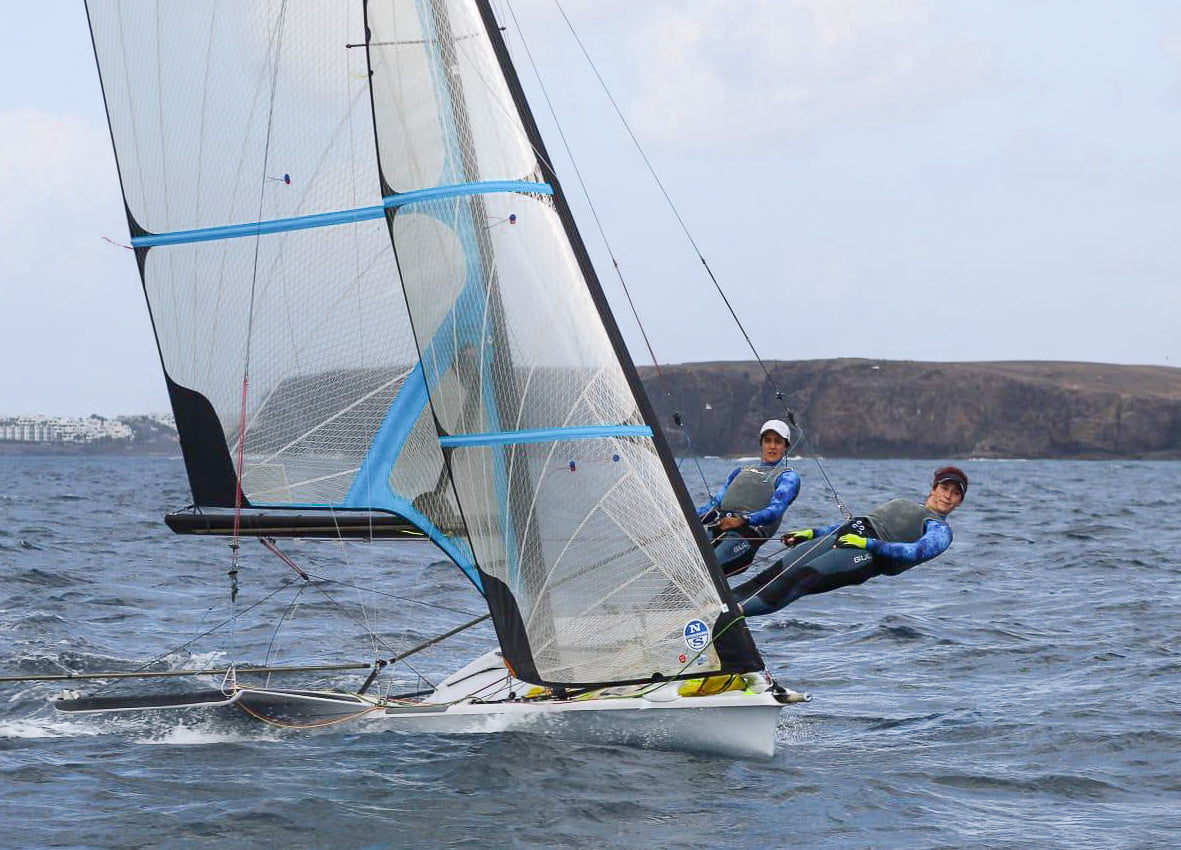
NAŽALOST, DJEVOJKE NE IDU U TOKIO
Nažalost, djevojke ne idu u Tokio
📸 Karlo Krpeljević
Lanzarote International Regatta jedrila se na dalekom Atlantiku, uvijek ugodnom za život, Kanarskom otočju. Cijelu zimu tamo se nalaze praktički svi Europski jedriličari i jedriličarke koji se pripremaju za nastup u Tokiju, jer kažu da su uvjeti dosta slični onima koji će vladati na olimpijskom regatnom polju.
Povremeno su treneri organizirali i neslužbene regate, a ona o kojoj je ovdje riječ neplanirano se održala, jer je određeno da ona bude zamjena za otkazanu regatu koja se trebala jedriti na Palmi. Riječ je o tradicionalnoj megaregati Trofeju princeze Sofije, ali španjolski stožeraši su procijenili da će jedriličarima manji rizik po pitanju Korone biti na njihovom atlanskom posjedu. Ova regata bila je posebno iščekivana jer su se na njoj dijelile posljednje norme za Europljanke u klasi 49erFX.
Zajedno s djevojkama jedrile su i muške posade u klasičnom 49er-u, kao i mješovite posade u Nacri 17.
Spomenuta norma posebno je bila zanimljiva za nekoliko posada među kojima su bile talijanke, čehinje, belgijanke i naša posada Ninčević - Vitturi. S obzirom na formu i pokazane rezultate posljednjih skoro godinu dana naše djevojke su bile u najozbiljnijoj konkurenciji za osvajanje te, posljednje, karte za Tokio. Njihova kvaliteta i ozbiljnost u pristupu bili su očiti već od početka ove regate, a najvećom konkurencijom im se pokazala belgijska posada Maenhaut - Geurts.
Za cijelo vrijeme kvalifikacija i kasnije finala, izmjenjivale su se u vodstvu (jedna posada u odnosu na drugu). Međutim, na samom kraju regate dolazi do par sudbonosnih trenutaka koji su zapečatili sudbinu našim djevojkama i otvorile prolaz mladoj posadi iz Belgije. Što se točno dešavalo ispričala nam je kormilarka našeg 49er-a Enia Ninčević:
Da nam je netko rekao da ćemo ovu regatu završiti u deset najboljih odmah bi potpisale, samo što je sad konkurencija u Europi toliko jaka da nismo ispunile svoj prvenstveni cilj... tako da što je tu je. Mislim, dobro smo odjedrile tako da ipak nije ostao toliko gorak okus u ustima.
Od početka ove godine bile smo ukupno dva mjeseca na putu. Boravile smo u Villamouri, pa smo potom čekale odluku na vijećanju gdje će se nakon otpadanja Palme jedriti kvalifikacije. U Portugalu smo i ostavile opremu između dva ciklusa priprema, jer su svi u klasi očekivali da će se u Villamouri jedriti umjesto Palme i onda je samo jednog dana stigao email da će regata biti na Lanzarote.
Tada se cijela logistika morala prebaciti trajektom na Kanare, radili su se novi Kovid testovi, a i nas dvije kad smo prebacile opremu, dvadesetak dana pred regatu, nismo se više vraćale već smo odlučile ostati tu i pripremati se za regatu.
I stvarno tamo je što se tiče jedrenja raj na Zemlji! Stvarno puše svaki dan i ima taj "north" uvjet kad puše s kraja, kad je više flat i ima vanjski s valčinom.
Sama regata spadala je u vjetrovitije. Tri dana smo imali uvjete velikog vala, a vjetar na neke refule... crte, linije, koridore... moralo se biti na točnom mjestu. A bilo je i dana kad je stabilno puhalo. Uglavnom, vjetra je bilo dosta, jer da nije to bi se vidjelo i na rezultatima... da je bio lagani vjetar ne bi šest talijanki završilo u silver grupi.
Akvatorij u kojem se organizirala regata bio je onaj u kojem smo i trenirali. U stvari nigdje drugo nismo ni mogle biti jer smo dobile pozivnicu za taj klub, gdje smo bile i smještene, maske na otvorenom, policijski sat... tako da sam stavrno jedva čekala doći doma da ne moram nositi masku na otvorenom :)
Kvalifikacije su trajale tri dana i svaki dan smo jedrili po tri plova. Finale je također trajalo tri dana, s tim da smo u prva dva dana odjedrili šest jedrenja i zadnji dan još jedan plov i medal race.
Što se tiče konkurencije za Tokio, nakon kvalifikacija su otpale talijanke, jer imaju izvrsnu posadu za lagane vjetrove, a ostale smo mi, šveđanke, belgijanke i čehinje.
Od početka regate mi i belgijanke smo bili u prvih deset. Jedan dan one 7. a mi 8., pa idući dan mi 7. a one 9., pa smo se stalno izmjenjivale. A ove ostale nikad nisu bile bolje od 12. mjesta. Također, stalno smo gradile tu prednost ispred njih, pa je zadnjeg dana finala bilo ili mi ili belgijanke.
I onda tog zadnjeg dana mi malo kiksamo i one ostvare prednost od dvadesetak bodova... u teoriji to se dalo stići sa zadnjim plovom i s medal raceom, ali zadnji plov nama je pukla "mala sajla" (najniža sarća koja se hvata ispod križa i ide na palubu), pa smo imale DNF. Nakon toga više nismo imale nikakve šanse, pa ni u medal raceu da ostvarimo bolji rezultat.
Imali smo skroz novi komplet sajli, ali ih nismo htjele stavljati, jer ih isto treba istestirati. Tako da smo jedrili s najmanje voženima, ali eto, jedna od njih je ipak pukla. Mislim, na 49eru stvarno dosta stvari može puknuti i teško ih je predvidjeti, pa čak i ako se stavi novi komad nitko ne može garantirati da neće i on puknuti.
Enia Ninčević, JK Uskok
Na Kanarima je dosta posada imalo probleme sa sarćama. Glavni razlog je veliki val (swell) s obzirom da 49eri dosta skaču po takvim valovima, a preventivni pregledi sajli se ne mogu napraviti, jer obično pucaju iznutra. Sličan problem kao i naše djevojke imala je i muška belgijska posada koja je također bila u borbi za olimpijsku normu, ali posljedica pucanja njihove sajle bila je lom jarbola.
Flota 49erFX dijela Lanzarote International Regatta-e brojala je ukupno 46 posada, a naše djevojke završavaju ukupno na 10. mjestu, dok su im glavne konkurentice finiširale na 7. mjestu. Analizom rezultata može se primijetiti da je naša posada imala dosta bolje rezultate u kvalifikacijskom dijelu regate. Čak 7 od 9 jedrenja su završile unutar prvih šest, a u posljednjoj kvalifikaciji su i pobijedile. U finalnim jedrenjima najbolji rezultati su im 3. i 7. mjesto, dok su belgijanke držale bolji prosjek.
S ovim rezultatom tako je za Eniu Ninčević i Mihaelu Zjenu de Micheli Vitturi završio ovaj olimpijski ciklus, a hoće li se odlučiti na još jedan pokušaj i kvalifikacije za Pariz ostaje nam za vidjeti. U svakom slučaju, njihov matični klub, JK Uskok iz Zadra pruža im punu podršku i ako se odluče za novu četverogodišnju kampanju pružit će im punu podršku.
Uvijek je zanimljivo čuti i priču s druge strane, a ovaj put pogotovo, jer osim što je izniman ulog bio u pitanju, tako i zbog činjenice da je trener belgijske posade Uskokov višestruki olimpijac, Petar Cupać. Do sada je kao natjecatelj sudjelovao na čak četiri olimpijade. U Ateni 2004. jedrio je s Tomislavom Bašićem u klasi 470, da bi se potom prebacio u 49er i jedrio s Pavlom Kostovim u Pekingu 2008., Londonu 2012. i u Riu 2016. godine.
S ovim trenerskim angažmanom nastavit će stvarno impresivan niz s kakvim se mali broj sportaša u svijetu može pohvaliti, a evo i njegove priče:
Krenuo sam s njih dvije početkom ožujka 2019. One su do tada jedrile u klasi Nacra 17, međutim njihov savez je prekinuo taj projekt jer je bilo dosta ozljeda i bilo je dosta opasno. Tako da su se njih dvije spojile i dobile su podršku da krenu u 49erFX i to za Pariz 2024.
Jedrile su tako par mjeseci same, tražile su trenera i nekako su igrom slučaja došle do mene. Ponudile su mi posao koji sam prihvatio s tim da sam bio i na probnom roku dva mjeseca.
Bile su zadovoljne s probnim rokom i krenuli smo s radom s Parizom kao konačnim ciljem. Ali, još su se jedrile kvalifikacijske regate za olimpijadu u Tokiju, pa smo odlučili sudjelovati i na njima, pa ako što bude bude. Mislim, u jedrenju uvijek postoji nada, pa i to što smo ja i Pave isto napravili u godinu i pol dana, tako da je šansa postojala.
Na prvim kvalifikacijama, na SP nismo uspjeli, ali išlo nam je na ruku ovo što se sve odgodilo godinu dana. Dosta smo trenirali s ostalim timovima, npr. u Vilamouri u Portugalu gdje su bili skoro svi, tako da nismo bili sami i stalno smo imali sparing partnere u Belgijskom timu. S njima smo uspostavili stvarno dobru suradnju, u stvari dogovorili smo se da dosta toga testiramo zajedno i zajedno napredujemo, jer se jedino tako može ići naprijed.
Ovu zimu smo istestirali dosta materijala i opreme i cure su stvarno dosta napredovale, a što se vidjelo i po rezultatima na regatama.
Jednako je dobro išlo sad i na ovim posljednjim pripremama i tu su nam malo te ambicije porasle. Osjetilo se da bi se mogao postići taj rezultat, ali kad krene regata nikad ne znaš kako će završiti.
Dobro je bilo to što nad njima nikad nije bio nikakav pritisak. Razgovarali smo prije natjecanja i nismo imali mentalni presing "moramo se plasirati", već je bila prisutna samo misao da je to moguće. Ako se ne kvalificiramo život se nastavlja dalje, ipak nam je glavni cilj Pariz. Tako da smo uspjeli "posložiti glavu" da ne mislimo previše o tome.
Inače, djevojke imaju tek 20 i 21 godinu.
Fokus im je stvarno bio jak. Uopće nisu htjele gledati rezultate, samo su jedrile iz dana u dan. Naravno, novine su pratile regatu, pa su znale koje su, ali nisu znale svoje ulaze i nisu imale presing po tom pitanju.
Meni osobno je tih šest dana bilo vrlo stresno, jer krenulo je dobro i sve je vodilo ka tome i imao sam osjećaj da u rukama imamo taj rezultat, ali nesmiješ se opusititi.
I onda na kraju nas je sudbina spojila da su nam glavne protivnice bile djevojke iz mog kluba, kojima sam i ja bio trener, pa čak sam i jedrio s Eniom 2018. dok joj je flokistica bila ozlijeđena.
Mislim da je na kraju pobijedila igra živaca. Tamo gdje su one kiksale u polju nama se otvorila prilika i ostvarili smo bodovnu prednost... gdje se zadnji dan odlučivalo i gdje smo imali dvadeset bodova prednosti.
To je bilo teško izgubiti, a cure su uspjele napraviti stvarno izvrstan posao. Čak su na početku i vodile regatu, pa smo prije medal racea riješili sve dvojbe.
Petar Cupać, trener belgijske posade
Finalne pripreme pred odlazak u Japan, Cupać planira također napraviti u Portugalu gdje bi njegova posada trebala trenirati s Austrijankama. U međuvremenu oprema koja je već istestirana i za koju se zna da je brza, šalje se kontejnerom u Japan, a boravak u Portugalu bit će iskorišten za testiranje još nekih novih jarbola.
U Tokio planiraju otputovati sredinom lipnja, a ako se dozvoli mogućnost ranijeg odlaska na treninge to će i iskoristiti.
Na regati u Lanzarote jedrile su i naše posade u 49er-u i u Nacri 17. Konkurencija u jednostrupcu bila je jednako brojna kao i u ženskoj floti, dok su katamarani bili u floti od 21 jedrilice.
Braća Šime i MIhovil Fantela su bili uobičajeno dobri i u konačnici osvajaju 8. mjesto. U njihovoj regati najviše su se istaknuli Španjolci koji su imali skoro pa samo 50% bodova od srebrenih Danaca. Ostatak društva u top ten dijelu ljestvice po rezultatima je bio dosta blizu i izgleda da su duge zimske pripreme svima dobro došle i ostavile pozitivne efekte.
Što se tiče Nacre 17, posada u sastavu Igor Marenić - Anđela de Micheli Vitturi, osvaja dosta dobro 12. mjesto i nagovještava dobre rezultate u nastavku sezone. Veseli to što im je čak 9 rezultata u 16 održanih jedrenja unutar između 3. i 10. mjesta i dokaz je dobrog i ustrajnog rada čiji konačni cilj je Pariz 2024.
📸 Karlo Krpeljević
READ MORE
READ MORE
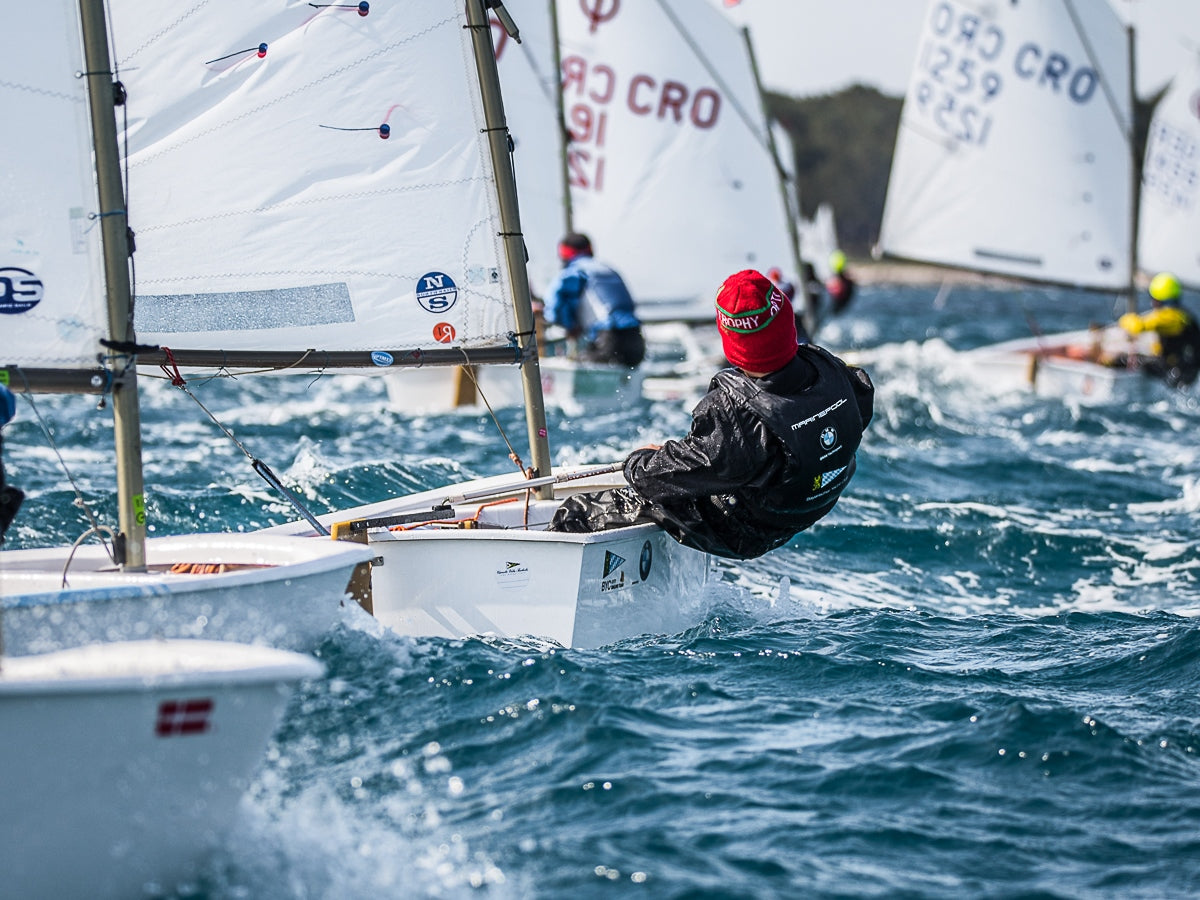
PRVENSTVO HRVATSKE ZA KLASU OPTIMIST - JOSIP TAFRA NAJBOLJI
Prvenstvo Hrvatske za klasu Optimist - Josip Tafra najbolji
📸 regate.com.hr
U odnosu na finale prošlogodišnjeg Prvenstva Hrvatske klase Optimist, na vrhu smo svjedočili rošadi - Josip Tafra (JK Labud) i Tristan Tol (JK Vega) samo su zamijenili mjesta. Na postolje se skupa s njima popeo Ukrajinski jedriličar Sviatoslav Madonich (SC Zatoka), dok je na četvrtom mjestu generalnog poretka, a na trećem u zatvorenom PH, završio Roko Čepić Zokić (JK Labud).
Regatu su udruženim snagama organizirali članovi i volonteri Clivo Sailing Cluba i JK Uljanik, a mjesto svih zbivanja bilo je u i ispred auto kampa u Medulinu.
Riječ je o lokaciji koju već neko vrijeme koriste članovi CSC-a za organiziranje svojih aktivnosti, a prednosti lokacije su višestruke. Krenuvši od onog osnovnog što se tiče jedrenja, a to je odličan akvatorij za postavljanje regatnog polja, kako sa strane Regatnog odbora, tako i sa strane natjecatelja koji imaju samo 5-10 minuta laganog jedrenja za dolazak od plaže na kojoj su smještene jedrilice do startne zone, pa do smještajnih mogućnosti kampa u kojem se svi mogu smjestiti po vrlo pristupačnim cijenama i izbjeći kasnije transfere do apartmana. Takvim okruženjem sigurno najviše profitiraju klinci koji u tim uvjetima naporan dan na moru mogu završiti ugodnim druženjem sa svojim sportskim kolegama i produbiti međusobna prijateljstva.
Da je teorija takva i u praksi najbolje su mogli vidjeti svi koji su ove godine boravili u kampu jer je vesela vika zaigrane djece odjekivala sa svih strana, a ujutro bi nakon doručka laganom šetnjom svi bili kod svojih jedrilica za samo par minuta. Tako da je ideja mini olimpijskog sela kojeg od početka guraju Tina i Dario Kliba nešto što treba nastaviti promovirati u svim idućim izdanjima ove regate.
Prvenstvo Hrvatske službeno je započelo u četvrtak 1. travnja, a trajalo je do nedjelje 4. travnja. Ove godine termin se preklopio s Uskrsom. Razlog uskakanja u ovaj termin je trenutna nesigurnost zbog povremenih zabrana raznoraznih aktivnosti zbog zabrana iz Stožera CZ, pa kako je već izgubljen dio normalne natjecateljske sezone svi nastoje preventivno izvući što se može iz trenutno raspoloživih termina.
📸 regate.com.hr - zlatni, Josip Tafra, CRO 919
Vremenske prilike u Puli bile su sveobuhvatne. Prva dva dana jedrilo se po laganim vjetrovima sa zapada i juga, trećeg dana po vrlo jakoj buri, a u nedjelju se nije niti izašlo na more zbog bure koja nije pokazivala nikakve namjere smirivanja. Ali u svakom slučaju Medulinski zaljev, konkretno pozicija okružena rtom Kašteja i otočićima Trumbuja, Ceja i Bodulaš, bila je jednako kvalitetna po svakom od vjetrova koji je puhao.
Detaljnije izvješće iz prve ruke dobili smo od Petre Klibe, članice Organizacijskog odbora ovog velikog jedriličarskog eventa:
Prva dva dana imali smo praktički ljetne uvjete, proljetne definitivno, kratke hlačice i sav pripadajući outfit... Po takvim uvjetima uspjeli smo odjedriti ukupno četiri plova, po dva svaki dan. U četvrtak se jedrilo po maestralu koji je dosta bolje vukao od južina koji je puhao u petak. Nije ni njega bilo pretjerano, ali 5-6 čvorova, na momente i 8 bilo je sasvim dovoljno. Zato smo u petak stalno imali manjak vjetra, a na kraju pogotovo.
U ta dva dana napravljen je minimum planiranih regata da bi se moglo prijeći u drugi, finalni, stadij natjecanja za koji su bili rezervirani subota i nedjelja.
U subotu se dugo čekalo da bi se izašlo na more. Prvi plov je odjedren po još uvijek dobrim uvjetima. Puhalo je od 18 do 20 čvorova, ali je zato u drugom plovu "pomelo". Startala je zlatna grupa, pa iza nje srebrena, a potom RO odlučuje brončanu grupu poslati na kopno. Međutim tu nije kraj, jer kad prvi iz srebrene grupe stižu do bove od orce donosi se odluka da se i njih pošalje na kopno.
Tada je nastala mala pomutnja. Treneri su uletjeli u polje pomagati svojim klincima, također i neki od brodova RO-a, pa su greškom i neki iz zlatne grupe poslani doma umjesto da ih se ostavilo da jedre. Pa smo zbog toga imali i redrese.
Tu opet nastaje problem jer je cijela "oglasna ploča" bila online. Među svim njenim mogućnostima je i online prijavljivanje protesta, a tome još uvijek nisu svi vični, pa nažalost neki zahtjevi za redresima nisu prijavljeni na vrijeme.
Što se tiče nedjelje, prvotna prognoza bila je mnogo povoljnija. Najavljivala se bura od oko 15 čvorova, međutim, taj dana 20-24 čvora s udarima preko 28 čvorova. Brod RO-a je isplovio već oko 10:30 i bio na moru do 15:00. Usidreni su bili oni i bova od orce i cijelo vrijeme su pratili stanje. Čekalo se da bar padne na konstantno ispod 20 čvorova, da se ne bi ponovio scenario od subote. Ali nije bilo promjena pa je u 15 sati proglašen kraj regate.
Inače, za našu uobičajenu regatu u ovom akvatoriju, Clivo Sailing Cup, napravili smo stvarno malo regata. U tri dana znali smo napraviti i po 12 plovova, ali ovog puta vrijeme nas nije poslužilo.
Nakon flotnog na redu je bilo timsko Prvenstvo Hrvatske koje se trebalo nastaviti jedriti odmah u ponedjeljak i završiti u utorak.
Već nekoliko dana ranije najvljivala se vrlo loša prognoza za utorak, tako da smo znali da sve što planiramo moramo i završiti u jednom danu.
Prognoza za ponedjeljak bila je jugo u jačanju, a već u 10 sati bilo ga je taman koliko treba i dan je bio savršen! Puhalo je od 6, pa do 12 čvorova. Dan je bio sunčan i stvarno neusporediv s prethodna dva, a jedrili smo dublje u zaljevu, ispred samog Medulina.
Flota je bila sastavljena od 12 ekipa koje su jedrile po Round Robin sistemu. RR smo uspjeli odjedriti kompletan i još je ostalo vremena da odjedrimo polufinale i finale. Možda najbolje o tome koliko se jedrilo govori to da smo posljednji plov finala odjedrili oko 19:30. Moram reći da su djeca bila fenomenalna!
Stvarno svaka čast Bilom i sucima, oni i djeca su odradili izvrstan posao.
Moram još reći da sam ja osobno na kraju ekipnog dobila malu satisfakciju za cijeli uloženi trud, jer je ekipa iz mog kluba odnijela pobjedu, a vjerujem da su se jednako tako dobro osjećali i svi volonteri, njih dvadesetak, koji su zbog ove regate svoje obitelji i sve ostalo stavili sa strane u ovo Uskrsno vrijeme.
Petra Kliba, JK Uljanik
Ukupno je na ovom PH bilo prijavljeno 211 jedriličarki i jedriličara. Za kvalifikacijska jedrenja bili su podijeljeni u zelenoj, plavoj i crvenoj skupini. Za one koji nisu upoznati sa skupinama, na početku regate radi se inicijalna podjela na skupine u kojima se jedri prvi dan do kraja, a za idući se formiraju nove na osnovu rezultata prvog dana. Zato je vrlo važno da se provjere svi rezultati na kraju dana, kao i da se riješe svi eventualni protesti koji mogu unijeti promjene u generalni poredak. Što se tiče Oglasa regate on je predviđao da se odjedri najviše 6 kvalifikacijskih jedrenja nakon kojih će se formirati tri jakosne skupine: zlatna, srebrene i brončana. Ali vjetar prva dva dana natjerao je RO da aktivira klauzulu minimalnog broja mogućih kvalifikacijskih jedrenja, a to je bilo četiri plova u dva dana.
📸 regate.com.hr - srebreni, Tristan Tol, CRO 1220
Treba obavezno naglasiti da je ova regata imala izraziti međunarodni karakter. CRO jedara bilo je tek nešto više od pola. Ukupno njih 130. Ostali sudionici bili su iz Ukrajine, Njemačke, Švicarske, Češke, Slovačke, Italije i Srbije, a o kvaliteti flote najbolje govori podatak da je u zlatnoj skupini, koja je brojila 71 natjecatelja, jedrila tek 33 CRO jedra.
Rezultatski gledano Tafra je definitivno zasluženo osvojio zlato. Ako se zanemari jedan kiks, kojeg su uzgred rečeno imali svi u uvjetima ultra laganog vjetra, najlošiji ulasci u cilj su mu bili na 4. mjestu. U konačnici je skupio sretnih 13, te pobjegao Tolu i Madonichu za 6 kaznenih bodova.
Tol i Madonich su finiš učinili vrlo zanimljivim jer su regatu završili s jednakim brojem bodova. Obojica su imala po 19, a srebro Tolu donose dvije pobjede u odnosu na samo jednu koju je ostvario Ukrajinac.
📸 regate.com.hr - brončani, Sviatoslav Madonich, UKR 101
Možda najveći žal na kraju regate ima četveroplasirani u generalnom plasmanu, Roko Čepić Zokić. On je do posljednjeg plova bio vodeći u poretku, ali 15. mjesto u posljednjem jedrenju zaustavilo ga je na korak do rezultata karijere. O kojim je rezultatima konkretno riječ možete pročitati u rezultatima zlatne grupe na ovom linku.
U zlatnoj supini završili su i svi ostali nagrađeni na regati. U konkurenciji djevojčica najbrža je bila Ema Grabar (JK Uljanik). Ona je vrlo dobro jedrila cijelu regatu, a vrlo lako je moguće da je plasman među deset najboljih izgubila zahvaljujući tome što se našla u skupini koja je u posljednjem plovu poslana s mora zajedno sa srebrenom skupinom. Na kraju je završila na 13. mjestu s 50 kaznenih bodova, a samo 4 boda su je dijelila od top ten plasmana.
Čak 50% više bodova od nje imale su joj kolegice na postolju. Sa 73 boda, kao drugoplasirana djevojčica završila je Švicarka Svenja Muller, a bod više imala je Čehinja Beata Dokoupilova.
Što se tiče najmlađih (U12), daleko najbolji među svojim vršnjacima bio je Toma Smirčić iz JK Split. Završava na 15. mjestu, dok je u konkurenciji djevojčica mlađih od 12 godina najbrža bila Ukrajinka Olga Lubianska na 47. mjestu.
Konačni raspored ostalih sudionika OPH možete pronaći na ovom linku za srebrenu, odnosno na ovom linku za brončanu skupinu, dok je popis svih nagrađenih dostupan na ovom linku.
Online Oglasna ploča korištena je i na regati Optimista u Crikvenici, kao i na nekim regatama u prošloj godini. Uglavnom, sad to već postaje i standard koji ima svoje brojne prednosti, pa ako niste do sada otvorili svoj račun na ovoj web adresi, onda je vrijeme da to napravite i pripremite se za budućnost.
Što se tiče ekipnog Otvorenog prvenstva Hrvatske, na njemu je nastupilo 12 ekipa, dvije iz Ukrajine i ostalih 10 iz Hrvatske, odnosno iz 8 hrvatskih klubova s obzirom da su neki imali po dvije ekipe.
S obzirom da je sustav jedrenja bio Round Robin jedne zajedničke flote, a odjedren je kompletan, svaka ekipa je jedrila 11 kvalifikacijskih matcheva, jedan na jedan. Niti jedna ekipa nije ostvarila maksimalan učinak od 11 pobjeda, ali su bile dvije sa skorom 10:1. Riječ je o prvim ekipama Ukrajinske reprezentacije i JK Uljanika. S obzirom da je u međusobnom srazu Ukrajinska ekipa bila bolja oni su ujedno i zauzeli prvo mjesto nakon završetka Round Robina.
Plasman nakon Round Robina ujedno je bio i raspored na Otvorenom PH.
Konačni raspored na zatvorenom dijelu ekipnog PH dobiven je nakon polufinalnih i finalnih jedrenja. Kako se približavala noć dogovoreno je da se ide na dvije pobjede, a parovi u polufinalu su određeni klasičnim match race načinom, odnosno, vodeća ekipa je dobila mogućnost izbora svojih suparnika.
S obzirom da su iz jednadžbe maknuti Ukrajinci, raspored polufinalista izgledao je ovako:
JK Uljanik - 1
JK Vega
JK Labud
JK Split
Sasvim logično, ekipa Uljanika izabrala je najlošije plasiranu ekipu, a to je u ovom slučaju bila ekipa JK Split. Da oni na kraju nisu bili lak zalogaj govori rezultat od 2:1, dok su Labudaši, bar rezultatski, imali nešto lakši posao za plasman u finale jer su ekipu JK Vega pobijedili s 2:0 i tako se s trećeg mjesta izborili za mjesto u finalu.
I na kraju, u velikom finalu, jedre JK Uljanik - 1 i JK Labud, a u malom finalu JK Vega i JK Split. U oba sraza konačni rezultat bio je 2:0, a konačni raspored svih ekipa i rezultate međusobnih matcheva možete pronaći na ovom linku, a sastave ekipa možete pronaći na ovom linku.
Čestitke svim sudionicima, a pogotovo organizatorima PH koji su se morali nositi s malo više izazova nego što je to uobičajeno u normalnim okolnostima. Možda samo za kraj da spomenem da se na polovici natjecanja otvorila mogućnost napuštanja regate od strane Njemačke reprezentacije s obzirom da je u petak Hrvatska označena crveno na Covid karti Europe, pa su se suočili s obavezom odlaska u karantenu ako ne uđu u Njemačku na vrijeme.
Uglavnom, iako su intenzivno razmišljali o pakiranju u petak navečer, ostaju do kraja i nadamo se da nisu imali problema prilikom povratka u svoju domovinu.
READ MORE
READ MORE
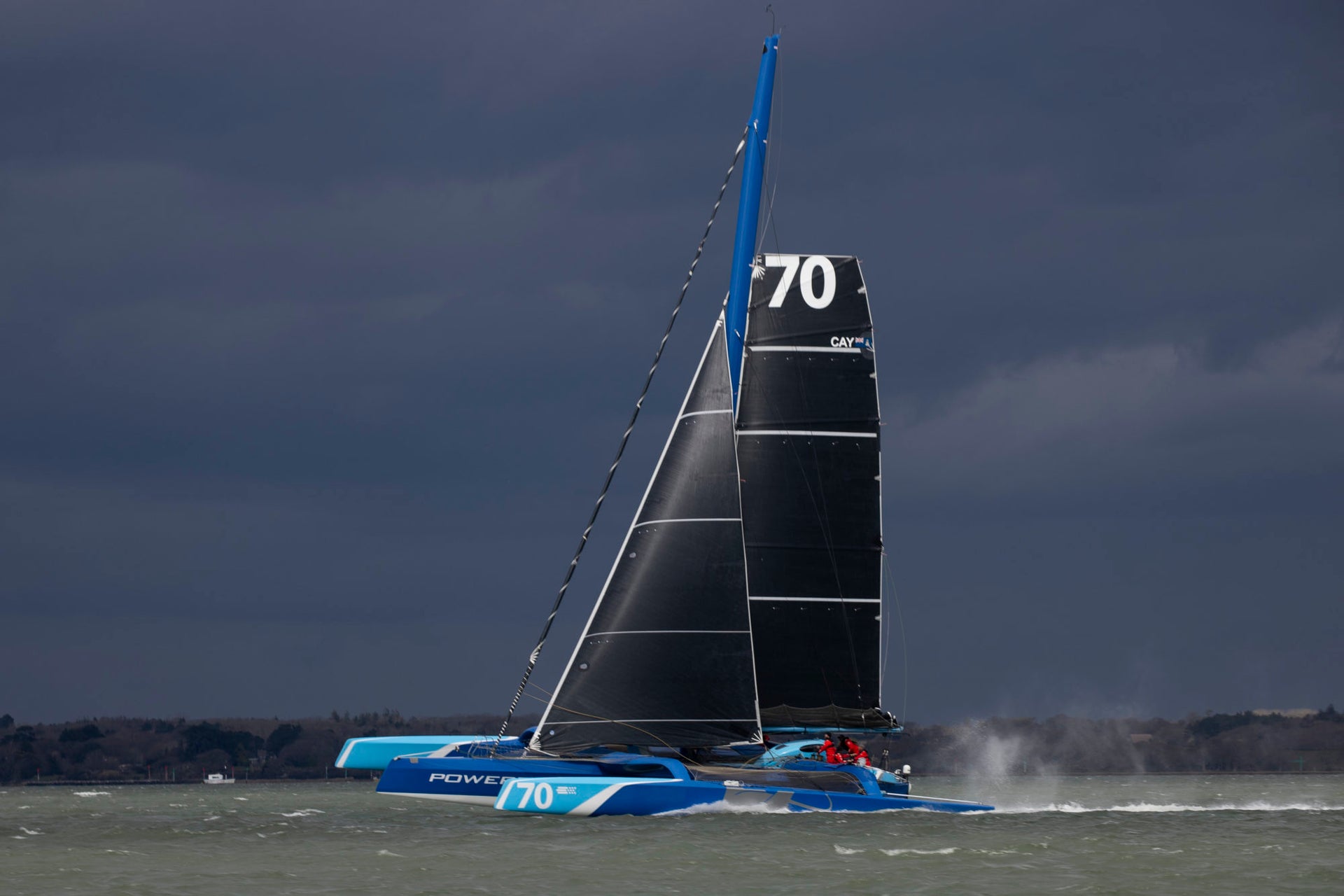
NEW FASTNET RECORD
NEW FASTNET RECORD
MOD70 PowerPlay Sets New Fastest Time
📸 Lloyd Images
The MOD70 Trimaran PowerPlay, led by Peter Cunningham and skippered by Ned Collier Wakefield, has set a new Fastnet record.
The team completed the original Fastnet course of 595 nautical miles in a new world Fastnet record of 25hrs 04mins 18secs (subject to ratification by the World Sailing Speed Record Council), shaving almost 3 hours off the record set by Maxi Edmond de Rothschild in the 2019 Fastnet.
The boat in its previous incarnation as Concise 10 with many of the same crew also took line honors in the 2017 Fastnet Race. “It was kind of ambitious, but the conditions were right, and the team was ready to go,” commented Peter Cunningham. “The PowerPlay crew was fantastic. Miles (Seddon) did a brilliant job navigating, we had two wonderful drivers in Ned Collier Wakefield, who set up the boat and runs the program, and the fastest sailor on Earth, Paul Larsen, who drove in some incredibly bad conditions.”
Shortly after midday on Monday 05 April, in a bitterly cold strong northerly wind, PowerPlay started their Fastnet record attempt on the Squadron Line at Cowes. PowerPlay made short work of racing to Lands’ End and powered across the Celtic Sea at speeds in excess of 30 knots. PowerPlay rounded the famous Fastnet Lighthouse and raced through the night. On Tuesday 06 April, at 13:42 and 19 seconds BST, PowerPlay reached the Plymouth Breakwater, where the team celebrated their amazing run of 25 hours, 4 minutes, and 18 seconds.
Republished from PowerPlay Racing
READ MORE
READ MORE
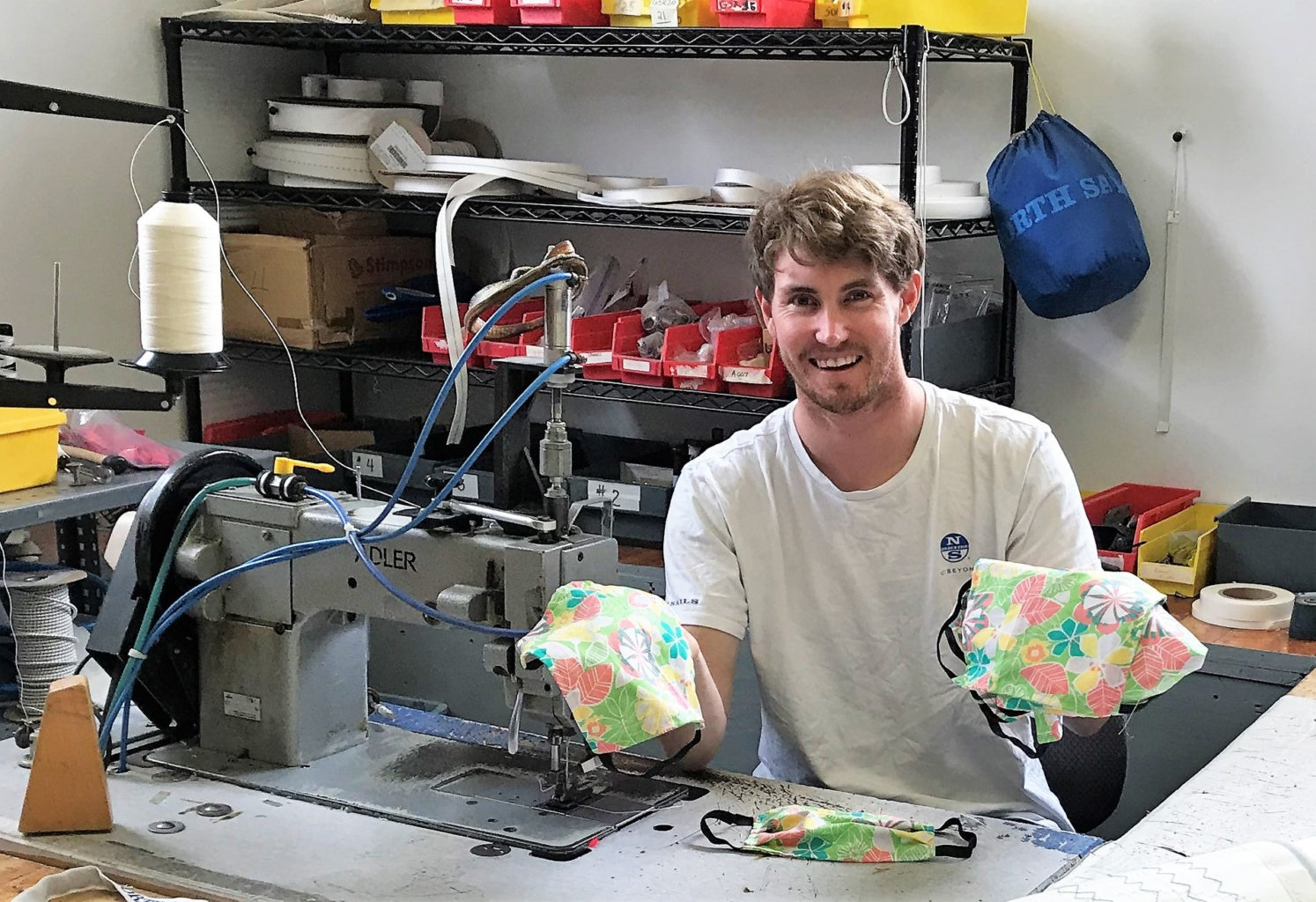
RHODE ISLAND WELCOMES BACK WILL BOMAR
WELCOME BACK WILL BOMAR
Returning to Portsmouth, Will Looks Forward to Working with Racing and Cruising Clients in New England
Will making masks at North Sails Chesapeake in 2020 📸 SpinSheet Magazine
Well-versed in One Design racing, Will Bomar grew up in Virginia, racing out of Hampton Yacht Club in the junior program and racing J/24s with his dad. After college, Will became a boat builder and worked on the loft floor in Portsmouth, RI, on the Certified Service team. When the opportunity came to help run another sailmaker’s loft with some friends in Annapolis, MD, he moved to the Chesapeake Bay, but not long before, he joined North Sails in Annapolis. This Spring, Will has returned to Portsmouth, Rhode Island, where he looks forward to working with cruising and racing clients in the greater New England area.
Will is an experienced J/24 and J/70 sailor, as well as a variety of keelboats. When asked to pick a favorite one design class, he quickly opts for the J/24. “All the boats go the same speed, so it’s just such a chess game at the top end of the fleet. And every role is so critical, from weight movement to maneuvers, to trimming, to communication– all those pieces have to work together for the boat to excel. Half a boat length gain can be the difference between getting to one mark in front of somebody or being behind twelve other boats. The class is great to be part of, and the racing is a lot of fun.” When not sailing, Will uses surfing and standup paddleboard racing as his escape.
He commented,
“I am looking forward to working with the Portsmouth, RI team again, helping current and potential clients become better racers and assisting cruisers with any sail care needs.”
When it comes to North Sails as the sailmaking industry leader, Will has the utmost confidence in North products and expertise. Every sail built is made to help clients achieve their sailing goals, whether they race or cruise.
“I’m confident in our products and see many benefits we can provide to both racers and cruisers. The evolution and technology at North is a direct result of our products striving to be the very best there is out there. When you order a one-design sail, it will set up the same as the last one, which shows that consistency is carefully accounted for in every sail North makes. Consistency means easy to tune to your same numbers, and you know your sails are going to be fast out of the bag.”
From all of us in Portsmouth, we are glad to have Will back in Rhode Island as he is an excellent asset to our sales and service team. Welcome back, Will!
📸 Chris Howell
READ MORE
READ MORE
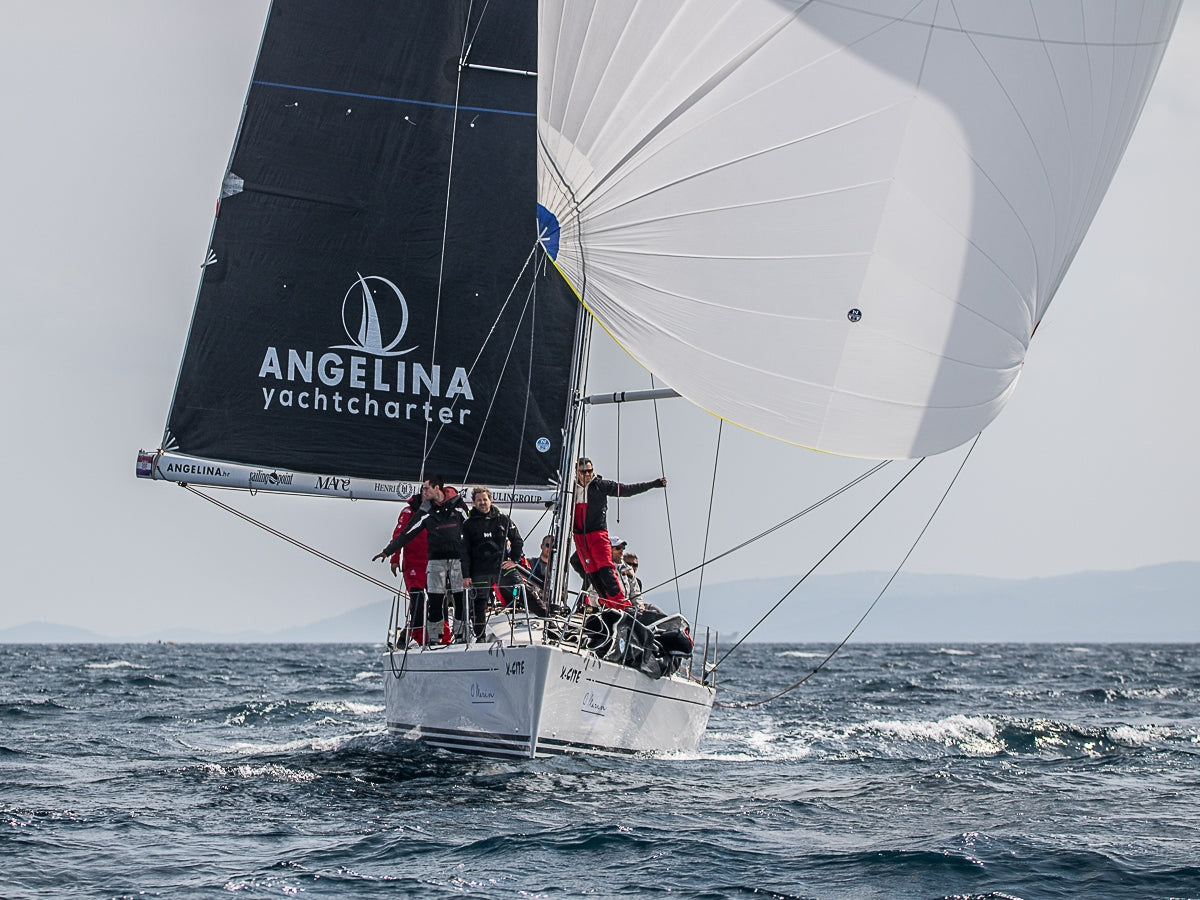
PRVA REGATA ORC CUPA POSADI X-CITEA
Prva regata ORC Cupa posadi X-Citea
📸 regate.com.hr
Zadar ORC Cup je već nekoliko godina prva regata u nizu koji se jedri za CRO ORC D-Marin Cup. Ove godine trebala se jedriti u nešto ranijem terminu, ali kao i mnoštvo drugih regata nije se smjela održati zbog zabrane na državnoj razini. Zbog sličnih razloga organizatori Uskrsne regate su odustali i od svog eventa, ali zato su se članovi Udruge ORC jedriličara međusobno dogovorili da u terminu Uskrsne organiziraju Zadarsku regatu.
Pozitivna atmosfera s Prvenstva Hrvatske lani u studenom osjećala se i na ovoj regati u Zadru. Jedriličari željni jedrenja i nadmetanja, fenomenalni uvjeti za jedrenje, izvrsna konkurencija... što se više moglo poželjeti? Flota je brojala 10 jedrilica, a među njima bile su čak četiri koje su imale premijerni nastup u ORC-u.
Format natjecanja bio je jednak onome koji se uveo na PH 2020., a to konkretno znači da u slučaju nepostojanja uvjeta za jedrenje u štap polju da se jedri navigacijski plov. Takav razvoj situacije bio je u nedjelju. Nakon što su u subotu odjedrena tri štapa po umjerenom i jakom jugu, lagani nedjeljni uvjeti po sunčanom vremenu bili su idealni za navigaciju po Zadarskom kanalu.
Prvi plov startao je u 11:25 na polju s orcom duljine duljine 1.67NM po vjetru koji je puhao iz 140°. Start je bio klasičan za uvjete na regatnom polju. S obzirom na val i vjetar nitko nije pokušavao neka iznenađenja i egzibicije poput lijevih uzda na startu, ali većina flote vrlo brzo je virala i krenula s jedrenjem na desnoj strani regatnog polja. S obzirom na smjer vjetra izbor jedrenja bliže Ugljanu rezultirao je s potrebom probijanja nešto manjih valova.
Većini flote taj val nije pretjerano smetao, samo je dodavao na atraktivnosti, dok je nekoliko manjih jedrilica zahvaljujući stanju mora bilo značajno usporeno. Među tim manjim jedrilicama bile su dvije na svom premijernom nastupu u Kupu, a riječ je o malenom Farru 280 - Adriatica i JOD-u 35 - Žut. Druge dvije jedrilice koje su prvi put nastupile na ovom tipu regate bile su značajno veće i moćnije po ovim uvjetima. Murtić 52 - Bare V bio je ujedno i najveći brod u floti, dok je XP44 - Filip bio najnoviji.
Taj prvi plov nažalost ne završavaju Filip i Elaya zbog problema s jedrima, ali probleme rješavaju na vrijeme za startanje drugog plova.
Možda nije loše istaknuti, a ujedno i pohvaliti, posadu jedrilice Elaya. Ova slovenska družina stigla je unatoč strogim mjerama koje su na snazi u Deželi s ciljem da zajedri pod svaku cijenu!
Prije starta drugog plova vjetar odlazi u desno desetak stupnjeva i RO to prati pravovremenom korekcijom bove na orci. Ujedno desna strana postaje izbor cijele flote nakon startnog signala i nakon stotinjak metara na desnim uzdama sve se prebacuju pod Ugljan. Osim malo "mekšeg" vala ta strana je bila izdašnija po pitanju refula.
Naklonost desnoj strani polja mogla se primijetiti i tijekom jedrenja u krmu. Naime, u prvom plovu nakon prolaska pored offseta svi su se uglavnom držali lijeve strane regatnog polja, dok su u drugom plovu jedrili više pri sredini, a neki su se davali i na desnu stranu, odnosno svoju lijevu za vrijeme spuštanja niz vjetar. Inače su dionice u krmu posebno zanimljive za analizu pomoću statističkih i playback podataka s obzirom da je pola flote jedrilo sa spinakerima, a pola s genakerima, pogotovo ako se težište baci na usporedbe VMG-ova.
Treći plov se jedrio na jednakom polju kao i drugi. Vjetar je bio stabilan i nije trebalo obavljati korekcije, pa su jedriličari mogli primjenjivati prednosti uočene u prethodnom jedrenju.
Što se tiče uspješnosti nakon jedrenja nakon matematičke obrade svih relevantnih podataka, pobjednici dana su kasniji ukupni pobjednici regate, momci s X-Citea. Oni su u prvom plovu zauzeli drugo mjesto, a u iduća dva su napravili jedini mogući iskorak.
Duplo više bodova imala je posada Mareusa II s 1., 3. i 4. mjestom, a osvojenu poziciju i oni zadržavaju na kraju regate.
Tri mjesta iza njih završava posada jedrilice Mr.J koji je u subotu osvojio 3., 5. i još jedno 3. mjesto. Međutim, sutradan ispuštaju mjesto na postolju za samo jedan bod, a broncu im je preuzela posada jedrilice Filip. Oni su naime u subotu nakon DNF-a u prvom plovu jedrili izvrsno i osvojili dva druga mjesta. S obzirom da se nakon odjedrenog četvrtog plova primjenjuje odbacivanje jednog najlošijeg rezultata, 5. mjesto u navigacijskom jedrenju bilo im je dovoljno za slavlje na ovoj premijeri.
A u nedjelju na moru ispred Zadra bio je pravi proljetni dan kao naručen za šetnju po rivi i generiranje vitamina D.
📸 regate.com.hr
S obzirom na samo nekoliko čvorova istočnjaka, Regatni odbor postavlja startnu liniju za navigacijski plov koji se jedrio do Ždrelca i natrag.
Pritisak je bio konstantan cijelom rutom. Čak se nije toliko osjetilo zakretanje na jugo, ali kobno je bilo nastavljanje tranzicije prema maestralu kad se stvorila "rupa" praktički ispred samog cilja. Neki su u njoj zapeli malo više nego što su htjeli, dok su neki uspjeli profitirati, a tko je i kako prošao možete pronaći u hrpi podataka spremnih za analizu, a dostupnih preko donjih linkova:
Rezultati
1. plov
2. plov
3. plov
4. plov - navigacija
Statistika
STAT - 1. PLOV
STAT - 2. PLOV
STAT - 3. PLOV
Playbackovi
P L A Y B A C K - 1. PLOV
P L A Y B A C K - 2. PLOV
P L A Y B A C K - 3. PLOV
P L A Y B A C K - 4. PLOV - NAVIGACIJA
Iduća regata za CRO ORC D-Marin Cup jedri se u Šibeniku 01. i 02. svibnja.
READ MORE
READ MORE

#NSVICTORYLIST: NEWPORT TO CABO
PYEWACKET WINS 2021 NEWPORT TO CABO SAN LUCAS YACHT RACE
North Sails Expert Brian Janney Shares Insights
©️ Bronny Daniels / Joysailing.org
Tell us about the conditions of the race.
The race start in a light air, 8 knots and we were headed south, sailing upwind. Our forecast said that the cold front and westerly winds would pick up around 4pm the first day. It came true, we then started to sail in 20+ knots all the way to the finish. The last 30 miles lightened up to around 14 knots. Our best 24 hour run was avg of 19.34 knots boat speed, sailing 464nm (the Cabo race is rated around 800 miles).
How did this year's race differ from previous years?
It was windy from the first night until all of the boats crossed the finishline. I think it was a fast race for everyone this year!
What was your sail inventory for the race?
We have a 100% North Sails inventory. The boat got the turbo mast (+3m taller than a standard VO70) in 2016 and came with a full suite of 3Di upwind sails. Roy has started to replace the inventory. We currently have a 3Di Mainsail (and she's seen many, many miles!), MH0, J0, J2, Helix J4, A2, Helix A3, FR0, Helix Genoa Staysail, 3Di Storm Jib Staysail.
Why is 3Di great for offshore racing?
Volvo 70 sails were heavy when they used 3DL now with 3Di the sails weigh less which is a big deal when you have to move the sail stack every gybe. Another benefit is how strong the sails are, because they are composite and not a laminate we don’t need to be worried about mylar cracking or the sail delaminating.
What benefits did your Helix A3 provide as far as speed?
The new 3Di Downwind 600 is an amazing product both in construction and how it flies. We have load cells at every tack point on the boat and with our old paneled A3 we would have 8,000 kg on the tack point, in 20 knots of wind we were seeing 5,500 kg! That's a huge load reduction. We saw the same thing with our new Helix J4 the tack loads have been reduced by at least 20%. Because the 3Di sail doesn’t stretch as much, every time we got a puff you could feel the boat accelerate.
How did conditions leading up to the race helped you decide on sail inventory selection?
Starting a week out Peter Isler (our navigator) saw it was looking like a windy race was going to happen. Each day that he ran the new weather models the difference between slow and fast routes kept shrinking and lining up. We started the discussion 2 days before the start about what sails to take. Because the forecast looked good we decided to take off the J0 (masthead jib). We almost took the J2 off of the boat but because we were worried about the exit out of Newport Beach and having to keep up with Rio 100 we took it with us, sadly we never used it.
Was there one sail in particular that “saved the day” during the race?
Hands down the new Helix A3! Can’t say enough about that sail.
What did you do personally and with your team to prepare for this race?
We sailed the Islands Race which was also windy and good practice for the Cabo race. Most of the teams did the same thing. Since we had a few new sails for the boat we were lucky to have Steve Calder, lead downwind sail designer for North Sails, come out and look at our set up. With Helix sails, you need to make sure you have the correct luff tension.
What’s your best piece of advice for those looking to tackle the race next year?
The Cabo race is every other year, next year is the San Diego to PV race (1,000 miles) I would do the So. Cal 300 this year, Islands Race next year then PV.
How does it feel to set a new monohull record for the race? And win overall?
It's always something special because it is so hard to do, you don’t only need a fast boat but need Mother Nature to work with you. Because of our canting keel and powered winches we never think there is a chance to win the Overall, that was a big surprise to all of us! I know Roy is really happy with how the boat and team performed.
What is Pyewacket doing in preparation for the Transpac?
We have a new Main, Helix J2, R2 (Fr0 replacement) and Helix Inner Staysail that will be delivered before the Transpac. With the new 3Di tape layouts we are going to save almost 10% on the weight of the main. We are going to sail the Newport to Ensenada Race and have a few sailing days in June. Our goal for Transpac is to be First to Finish, there a few boats who will also be in contention (Rio 100, Lucky- mini maxi 72)
Why should clients on the west coast choose North Sails?
The sail technology speaks for itself, but the people really make the difference. Just look at all of the offshore experience we have working for us. A customer needs to trust that their sales rep is recommending the correct tool for the job and I know we have a team working at North that can answer that question. One upgrade people should look at doing is adding the zipper system to their spinnakers. It cuts down on trash going into the water and it's also faster to pack the sail than using yarn.
READ MORE
READ MORE
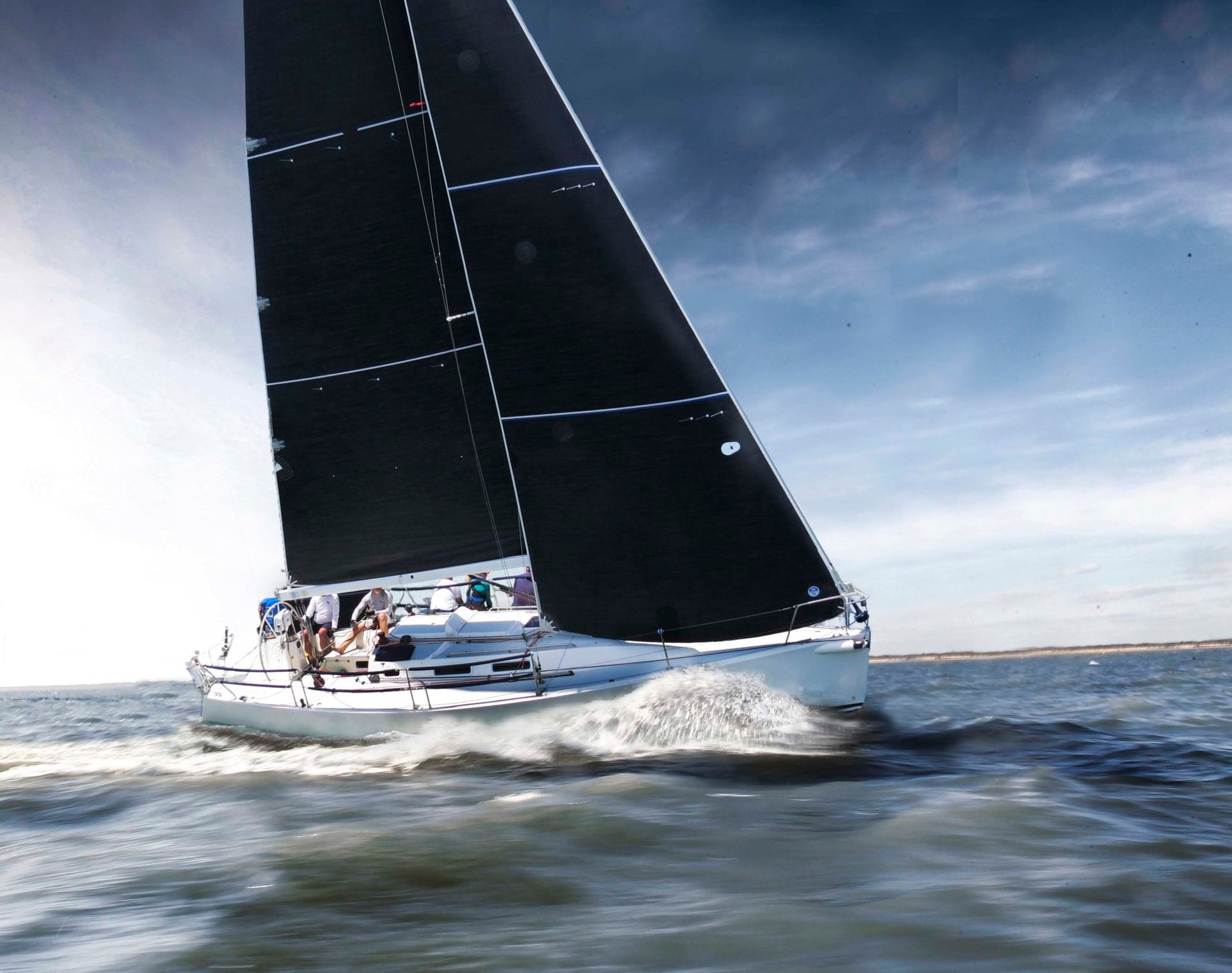
CUSTOM SAILS: WHAT GOES INTO THEM?
Every Sail is Designed to Match Specific Customer Requirements
All North Sails are designed and built to match the specific customer requirements. According to our Director of Design and Engineering JB Braun, the result is that each sail made in a North loft is custom and personalized to your boat and sailing style.
“As much as we would like to compartmentalize them into some type of standard feature or standard item to try to reduce the costs… the reality is, all the sails we build are custom.”
Why does North put so much time into each and every sail? Because each and every customer and boat is slightly different. That’s why we’ve taken all the knowledge acquired from building high-end race inventories and let it trickle down to our cruising customers, because you, too, deserve a sail that perfectly fits both your boat and your sailing plans.
📸 Paul Wyeth
A CUSTOM SAILS DESIGN UNIQUE TO EACH BOAT AND SAILOR
The seamless collaboration between the sales and design teams at North is what makes such customization possible, JB explains. “The sales consultant works with the customer to define their goals and objectives. That information goes directly to the designer, who also takes into account the boat’s displacement, righting moment, sail area, type of sail, etc.”
HOW THE CUSTOMER INTERVIEW INFLUENCES THE SAIL DESIGN
North Sail expert Mark Sadler says that initial discussion with the client is the most important step, because it helps him to establish exact requirements. “The next most important thing is being sure the design team has a clear understanding of the requirements and can feed back solutions.”
North Sail expert Hugues Destremau starts by asking what kind of sailing you intend to do. Your questions back to him might be more specific: “Why is this material better than this one? Which color will my sail be? How long is it going to last?” For help, he reaches out to the design team. The designer recommends a product tier and specific material, and clarifies any unique details.
You might even specify a desired “sweet spot” for a sail. JB gives an example; “I want the range of the sail to be 12 to 18 knots, and I want it to be the best at 14 knots.” All of that information is entered into the order.
Next, the designer creates a model of your boat on-screen and chooses the closest option from North’s extensive sail design library. Narrowing down to what’s best from a vast database of virtual shapes is why the sail consultant is so valuable, JB explains. “Their experience with the product, their experience as a sailor, their experience with the customer is a huge value to North.” The designer uses that additional input to decide on an exact design direction. “Once we’ve done that, a customized design pops up on screen with all the details in it. The result of all that work is a sail design uniquely set up for your boat and sailing style.”
📸 Jeff Brown
CAPTURING THE FINAL DETAILS
In addition to basic dimensions and shape, the final design includes all the sail information the production team will need: the number and placement of battens and reefs, choices like bolt ropes or slides, and potential chafe locations (lifeline stanchions, pulpits, etc). The information gathering and design process are exactly the same whether you order a 3Di or paneled sail; it’s only once the sail starts the manufacturing process that the two types diverge. “If it’s a paneled sail”, says JB, “the panels will be laser cut and manufactured to the three-dimensional shape. If it’s a 3Di sail, the material is laid onto a three-dimensional mold and then vacuum-bagged and thermoformed into that customized shape, with all of the reinforcing details and additions that were ordered by the customer.”
BETTER VALUE WITH A NORTH CUSTOM SAIL
“Selling each and every customer a custom sail provides the best value in the long run,” JB says. “And North customers get an unbelievable deal when they buy sails because we guarantee a perfect fit that will lead to a better experience on the water. We have always gone about the design, engineering, and manufacturing to make it the best that we possibly can, period—and then we figure out how to do it cost-effectively. Our sails are far from the normal, stereotypical design, because that’s not how we do things. It is a unique process—and a better value for the customer.”
📸 Robert Bateman Photography
HOW TO SPEC YOUR PEFECT SAIL
Choosing a custom sail inventory that’s right for you and your boat might seem overwhelming at first. Fortunately, boat size and your sailing plans will quickly narrow down what tier of materials will be the best match. From there, your sail consultant will work with you to fine tune the details, based on the intended use. “If someone is totally into durability, they’ll be steered toward our 3Di ENDURANCE line,” JB says. “If they’re totally into performance, 3Di RAW will be their best option. If they’re in the middle, we have products for that too.”
Another way sail consultants ensure a perfect match is by actually measuring your boat—even if it is already in the design library. “A customer might have added more rake or have a different furler. One person wants a higher clew, the other a lower one.”
And if you’ve had a sail built by North since 1990, JB can almost guarantee it’s in the database.
📸 Cate Brown
FUTURE DESIGNS BUILT TO A PERFECT FIT
Another process the North Design Suite makes possible is to design and build sails for boats that don’t exist yet. “I’m working on one project that won’t launch until 2023,” JB says. Designing sails for a not-yet-built boat makes it possible to optimize the entire aerodynamic package by including input from the customer, hull and mast designers, and project manager. “Everyone works together to satisfy the objectives of the client. It’s a circular process; you design a hull, mast, and sails—that’s one design cycle. Does that performance meet our objectives? Maybe the hull needs to be lighter. So you go through the design cycle again.”
JB is old enough to remember a less scientific approach to sail design. “Years ago, it was much more of a gut feel because you didn’t have as much information. We’re lucky to be able to run these simulations and come up with answers virtually. You don’t ever have all the answers, but you have many more pieces to the puzzle to make informed decisions, which leads to much better accuracy.”
📸 Stuart PearceSTILL IN AWE
After more than two decades with North Sails, JB still marvels at the level of detailed attention that goes into each and every sail order. “The whole thing is an unbelievable process when you think about it. I don’t think everybody realizes what’s going into these sails—it’s just amazing. There aren’t many industries that have the ability to customize a three-dimensional object!”And it’s not just the details that impress him—it’s the final result.“I just look at these sails and I’m always in wonder of them—it’s a fantastic product. Big boats, little boats—we have all different products that are engineered and designed to satisfy the goals and objectives of each and every client.”Custom sails? Yes, every single one.
REQUEST A QUOTE TALK TO AN EXPERT
READ MORE
READ MORE
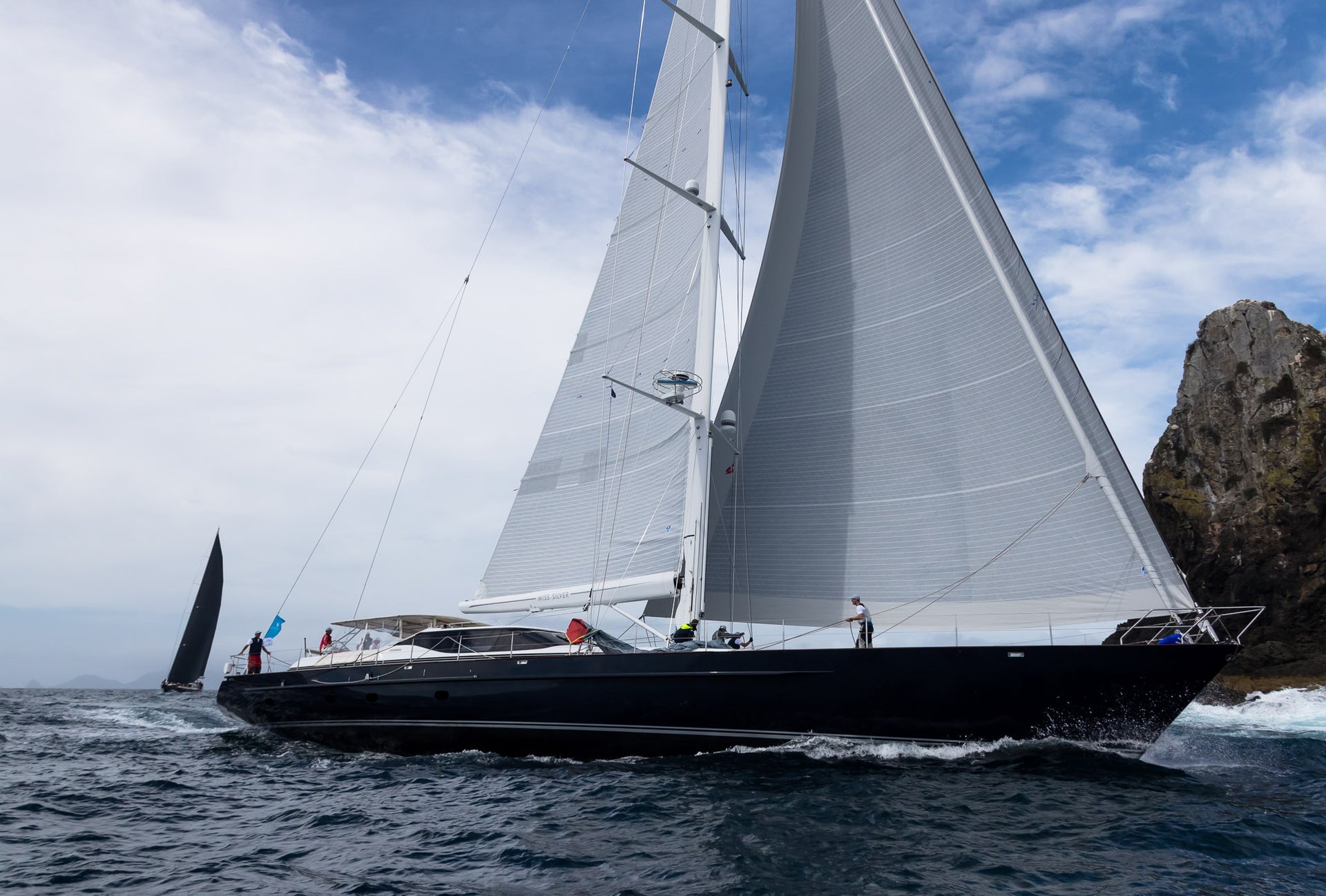
MISS SILVER LIFTS THE MILLENNIUM CUP
MISS SILVER LIFTS THE MILLENNIUM CUP
Celebrating Victory in Style with 3Di OCEAN
Miss Silver sporting her new 3Di OCEAN sails 📸 Jeff Brown/Breed Media
As the South Pacific’s longest-running superyacht regatta, the Millennium Cup saw five superyachts and a selection of North Sails experts race in the Bay of Islands, New Zealand. Occasionally joined by the lively local dolphin pod, the sailors enjoyed a fun yet competitive regatta, which marked the close of an exciting season of racing in New Zealand.
Throughout the regatta, the 36.2-meter Alloy Yacht Miss Silver maintained the overall lead, powered to victory after winning every race with her new North 3Di OCEAN sails. North experts Richard Bicknell and Matt Kelway, onboard as trimmer and bow, sailed on Miss Silver during the Millennium Cup. Both were delighted with the team’s result and the performance of the new sail inventory. Bicknell remarked: “We are all thrilled with the win and in particular our fantastic racing on Day 2. Owner Chris Meehan and Skipper Wayne Avery have put together a great program, with one of the upgrades being a complete set of 3Di sails. The Millennium Cup win tops off a fantastic season that includes collecting second-place at the Mastercard Cup earlier this year. At the prize-giving, Chris mentioned he would be back, so exciting times lie ahead for Miss Silver.”
Tawera and Sassafras finished in second and third place overall, respectively. Onboard Sassafras was Sales Manager Andrew Wills: “Conditions were different from the typical Bay of Islands weather, likely because the regatta got postponed by over a month due to weather conditions” he comments. “The light wind was paired with lumpy swell and overcast skies, but despite this, a lot of fun took place both on and off the water!”
Sit back and enjoy browsing the awe-inspiring images captured by Jeff Brown of these beautiful boats in action:
Sassafras 📸 Jeff Brown/Breed Media
Miss Silver 📸 Jeff Brown/Breed Media
Catalina 📸 Jeff Brown/Breed Media
Sassafras 📸 Jeff Brown/Breed Media
Catalina 📸 Jeff Brown/Breed Media
Catalina 📸 Jeff Brown/Breed Media
Miss Silver 📸 Jeff Brown/Breed Media
📸 Jeff Brown/Breed Media
READ MORE
READ MORE
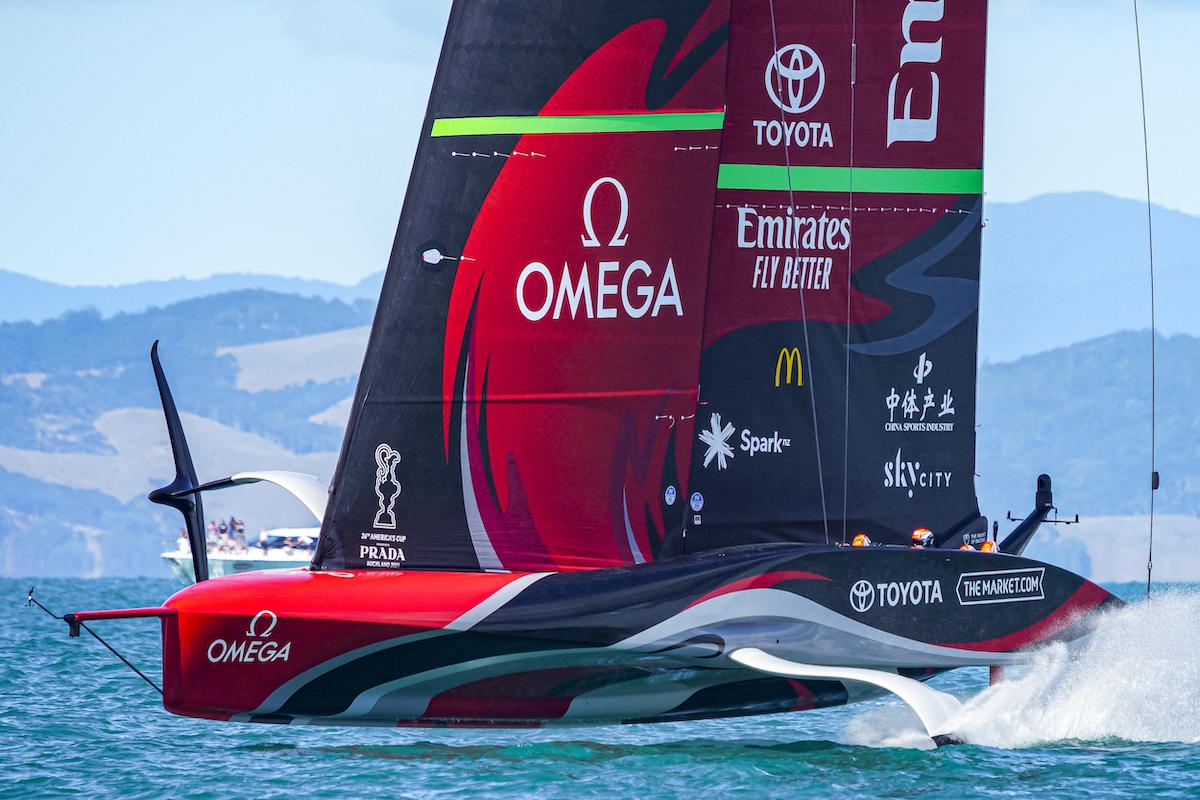
WHAT IS THE ENGINE ABOVE DECK?
In episode three we get technical again and aim to answer a burning question: what is the “Engine Above Deck”? You might think it’s a pretty straight forward answer (no, there’s no literal engine). And, at first it kind of is, but once you dive into it, it’s actually quite complex. Press play to learn all there is to know.
READ MORE
READ MORE
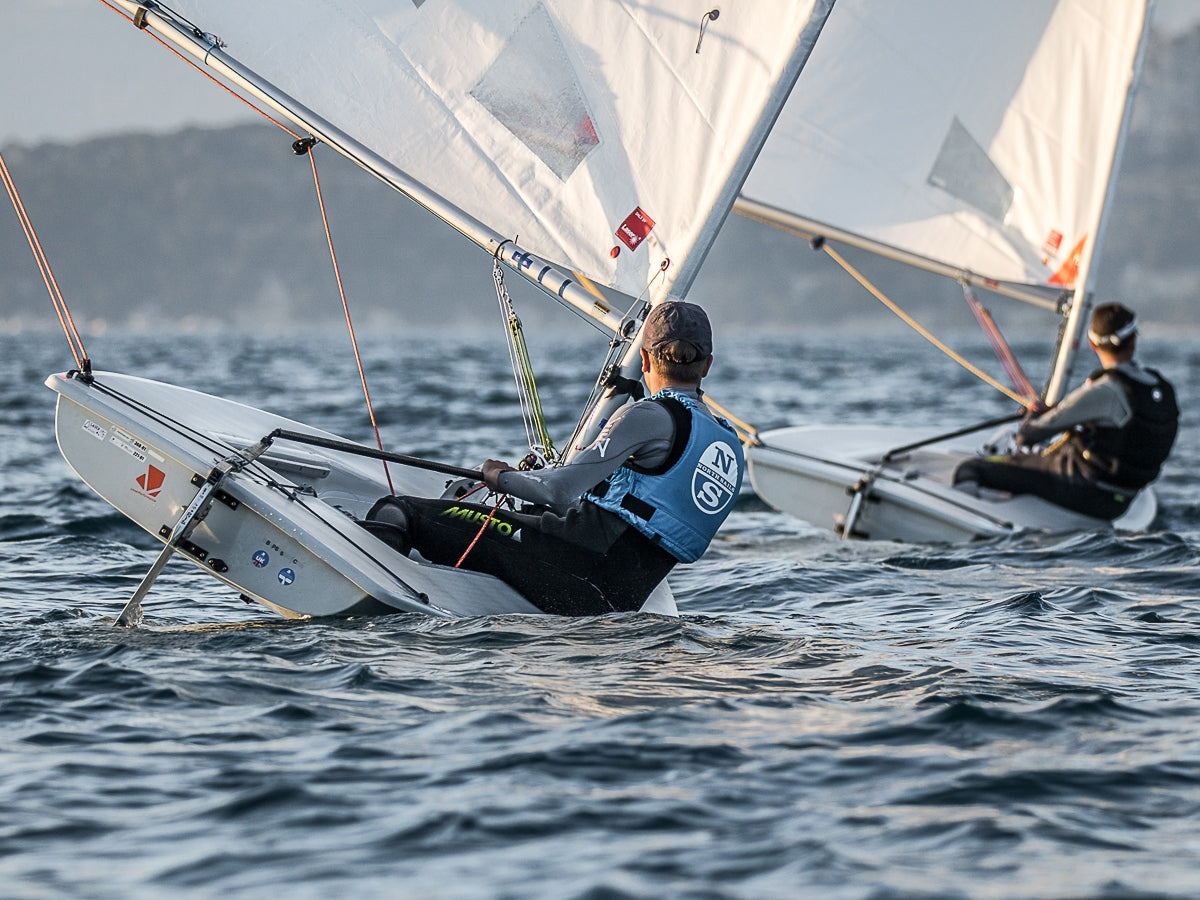
OTVORENO PRVENSTVO HRVATSKE ZA LASER STANDARD & LASER 4.7
Otvoreno Prvenstvo Hrvatske za Laser Standard & Laser 4.7
📸 regate.com.hr
Prvenstvo Hrvatske za klase Laser Standard i Laser 4.7, čiji originalni termin je trebao biti od 5. do 7. ožujka, organizirano je u Korona free terminu od 26. do 28. ožujka. Ukupno je sudjelovalo 57 jedriličara i jedriličarki iz Hrvatske, Crne Gore, Mađarske, Italije, Poljske, Rusije, Irske, Češke, Cipra, Srbije i Slovenije.
Juniorski dio flote standardno je bio brojniji i u njoj je jedrilo 11 jedriličarki i 23 jedriličara, dok je u muškoj olimpijskoj inačici jedrilo 23 jedriličara.
Domaćin Prvenstva bio je već tradicionalno JK Mornar na čijem je platou bila smještena većina flote, a zona jedrenja smještena je ispred Splitske luke i otoka Čiova.
Prvi dan natjecanja bio je petak, a osnovna karakteristika nije mu bila izdašna vjetrovitost. Dosta dugo se čekalo na vjetar. Dovoljno vjetra za pozivanje jedriličara na more bilo je tek iza 14 sati. Tada je RO poveo jedrilice prema jugoistoku jer je lagani južin stvarao privid formiranja stabilnih regatnih uvjeta. Međutim, ubrzo okreće u desno i svi mijenjaju kurs za skoro 90° i jedre prema području na kojem se formirao lagani maestral koji je na kraju puhao do zalaska sunca.
Prvi su startali Standardi, a nakon njih su na redu bili njihovi nasljednici. S obzirom da je u zoni startne linije vladao kontrakurenat mlade snage su imale dosta problema sa startanjem, jer ih je morska struja kontinuirano gurala preko linije, pa je naposljetku start uspio tek s crnom zastavom i s desetkovanom flotom. Zbog vremena koje su Laseri 4.7 izgubili za start prvog plova nije bilo smisla da ih se pošalje i u drugi plov jer ne bi ušli u cilj do zalaska sunca, a to se upravo desilo Standardima u njihovom drugom plovu.
Kako su oni prvi startali i na njih nije utjecao gubitak vremena koje su imali Laseri 4.7, a i vjetar je bio zadovoljavajućih 7-8 čvorova, Regatni odbor ih je pustio u drugi plov. Tijekom jedrenja došlo je do slabljenja maestrala, ali procijenjeno je da će ipak imati dovoljno vremena da svi stignu do cilja. Procjena je bila ispravna, a nakon iznimno napete igre živaca do svoje prve pobjede u impresivnom nizu od njih tri dolazi ovogodišnji Prvak Hrvatske, Tonči Stipanović:
Mislim da smo organizacijski stvarno uspjeli izvući maksimum u ova tri dana.
Prvi dan smo, što inače nismo navikli, vratili smo se na kraj po mraku, ali mi u Standardu smo uspjeli odjedriti dvije lijepe regatice.
Već nakon tog dana bio sam poprilično zadovoljan, dok je drugi dan zapuhalo jugo koje mi je stvarno odgovaralo. Bio sam maksimalno koncentriran, kao da se radi o svjetskom prvenstvu. Borio sam se za najbolje pozicije na startu i jednostavno nisam nikome ostavljao prostora da možda starta bolje od mene.
Prvi plov sam na orci bio peti i već kroz krmu sam dolje okrenuo drugi i pametnim jedrenjem tu regatu u cilj ušao kao pobjednik.
Drugu sam, može se reći, rutinski odradio i bez problema stigao prvi do cilja. I treću regatu u subotu bio koncentracija je bila na maksimumu. Ja i Filip stižemo kao prvi i drugi na bovu od orce i imali smo malu borbu u prvoj krmi kad sam ga uspio prijeći i povesti drugu orcu, ali možda sekunda nepažnje ili mali nedostatak sreće... to jugo je otišlo 10-15° stupnjeva u desno i nisam uspio Filipa zatvoriti. On je otišao na tu desnu stranu, a ja sam taj prvi repiket otišao u lijevu, pa sam tu izgubio i od Filipa i od Sergeja, ali sve u svemu prezadovoljan sam jedrenje u tom drugom danu.
A u nedjelju smo imali samo jedan plov. Ja sam imao vrlo dobar start. Ja i Pavlos smo se borili za start na pinu, jer smo vjerovali da će biti više vjetra na lijevoj strani. Također je bio i kurenat u bok, pa smo to iskoristili i došli kao prva dva na bovu od orce. I onda sam ga u zadnjoj krmi uspio prestići.
Inače prezadovoljan sam cijelim svojim izdanjem ovog vikenda. Opremu sam stvarno dobro posložio tako da sam se sva tri dana osjećao i brzo i moćno. Ni u jednom trenu nisam sumnjao u svoju brzinu, a nakon toga je stvarno lako jedriti.
Tonči Stipanović, JK Mornar
Do kraja regate Tonći je skupio tako malo bodova da mu nitko nije mogao ugroziti još jednu, devetu, titulu. Nakon jednog odbacivanja ukupni zbroj bio mu je 7 bodova, a najlošiji rezultat (koji je odbacio) bio je 5. mjesto iz prvog plova, a od šest održanih plovova pobijedio je u čak četiri!
Preostale dvije pobjede odnijeli su drugo i treće plasirani.
Na drugom mjestu završio je lanjski prvak Hrvatske, Filip Jurišić. Popularni Gašo, također je dosta kontinuirano jedrio cijelu regatu i jedini ozbiljniji kiks imao je u nedjelju s osmim mjestom. Ukupno je osvojio 17 bodova, a koliko je vrijedno njegovo srebro najbolje govori podataka da su svi jedriličari između drugog i šestog mjesta bili raspoređeni sa po jednim bodom međusobne razlike.
Inače, na trećem mjestu završava Ruski reprezentativac Sergei Komissarov.
Prvi idući hrvatski jedriličar bio je Stipe Gašpić na desetom mjestu, s dva boda prednosti ispred brata mu Bruna na 11. mjestu. Zanimljivo je da su u regati jedrila još dva brata, ali ne Hrvati, već Mađari. Rijeć je o Jonatanu i Benjaminu Vadnaiju koji su završili kao 7. i 8. također s dva boda međusobne razlike.
U floti je inače bilo deset jedriličara s CRO oznakama na jedrima.
Možda malo iznenađuje da je olimpijski medaljonoša i dvostruki svjetski prvak, Pavlos Kontides, završio na 6. mjestu. Razlog je što nije bio u 100 postotnom izdanju, jer se tek oporavio od Korone i za vrijeme PH još je bio u fazi vraćanja u formu nakon dvotjedne izolacije.
Brojnija flota, juniori u Laseru 4.7 odjedrila je jedan plov manje, ukupno pet. Međutim i taj broj bio je dovoljan za jedno odbacivanje. Zanimljivo je da je pobjednik ove flote imao jednak broj bodova kao Stipanović, a sa zlatom u apsolutnoj konkurenciji ovjenčao se Crnogorski jedriličar Nikola Golubić.
📸 regate.com.hr
Nikola je svoju pobjedu osigurao u drugom dijelu natjecanja kad je dva puta osvojio plov i jednom bio drugi, dok je u prva dva plova s dvije pobjede izrazito dominirala Petra Marendić, aktualna Europska prvakinja u konkurenciji U16. Na kraju je Petra bila četiri boda iza Nikole.
Također vrlo dobro je jedrio i trećeplasirani jedriličar, jedini talijanski predstavnik, Raffaele Milano. Broncu je osvojio s tri boda više od Petre. Istina, Raffaele nije startao u posljednjem plovu, pa mu sigurno ostaje žal za možebitnim boljim konačnim rezulatom, ali i taj DNS je dio natjecanja.
A što se tiče ranije spomenute crne zastave na startu prvog plova, na kraju se s BFD oznakom nije bodovalo samo sedam natjecatelja i natjecateljica!
Konačne rezultate za obje flote možete pronaći na ovom linku.
Uobičajeno je da se na ovakvim regatama sudionici dijele u različite dobne i spolne skupine. Tako je bilo i u Splitu ove godine, a dobavljači odličja sigurno su bili zadovoljni nakon narudžbe iz JK Mornar, jer su se nagrade dijelile u deset različitih kategorija. O kojim kategorijama je riječ i tko su slavodobitnici možete vidjeti na ovom popisu:
Laser Standard Otvoreno PH
Tonči Stipanović, JK Mornar
Filip Jurišić, JK Mornar
Sergei Komissarov, GBUMO
Laser Standard PH
Tonči Stipanović, JK Mornar
Filip Jurišić, JK Mornar
Stipe Gašpić, JK Labud
Laser Standard Otvoreno PH U21
Bruno Gaspić, U21, 2001, JK Mornar
Ilija Marković, U21, 2002, JK Delfin
Theodor Middelthon, U21,2004, SSF
Laser Standard PH U21
Bruno Gaspić, U21, 2001, JK Mornar
Božidar Golubić, U21, 2001, JK Mornar
Anton Tomašević, U21, 2004, JK Labud
Otvoreno PH Laser 4.7 M
Nikola Golubović, 2004, JK Delfin
Raffaele Milano, 2005, RYCC SAVOIA
Bendeguz Nagy, 2004, BYC
PH Laser 4.7 M
Tedi Leonardelli, U16, 2006, JK Vega
Max Gjidera, 2004, JK Mornar
Jere Bakotić, U16, 2007, JK Split
Otvoreno PH Laser 4.7 Ž
Petra Marendić, U18, 2005, Mornar
Carla de Carina, U18, 2004, Val Crikvenica
Helena Jakšić, U18, 2005, Mornar
PH Laser 4.7 Ž
Petra Marendić, U18, 2005, JK Mornar
Carla de Carina, U18, 2004, JD Val Crikvenica
Helena Jakšić, U18, 2005, JK Mornar
Otvoreno PH Laser 4.7 M U16
Igor Mirowski, U16, 2006, AZS
Tedi Leonardelli, U16, 2006, JK Vega
Jere Bakotić, U16, 2007, JK Split
PH Laser 4.7 M U16
Tedi Leonardelli, U16, 2006, JK Vega
Jere Bakotić, U16, 2007, JK Split
Niko Jakelić, U16, 2006, JK Mornar
Čestitke svima, od organizatora do natjecatelja, a posebno društvu s titulama!
Što se tiče Laser Radiala, njihovo Prvenstvo Hrvatske također će organizirati JK Mornar, ali za sada je datum održavanja još uvijek nepoznat. Do tada će sigurno biti organizirano više "običnih" regata, a prva koja je na redu je kriterijska regata u Betini za dva tjedna, dok će za to vrijeme naš najbolji dvojac otputovati u Villamouru u kojoj će se pripremati i čekati veliku regatu koja se inače trebala jedriti u Hyeresu. Na njoj će se podijeliti dva posljednja mjesta za Europske jedriličare koji žele jedriti u Tokiju, tako da se očekuje vrlo jaka konkurencija, što će sigurno rezultirati i vrlo dobrim jedrenjem.
READ MORE
READ MORE
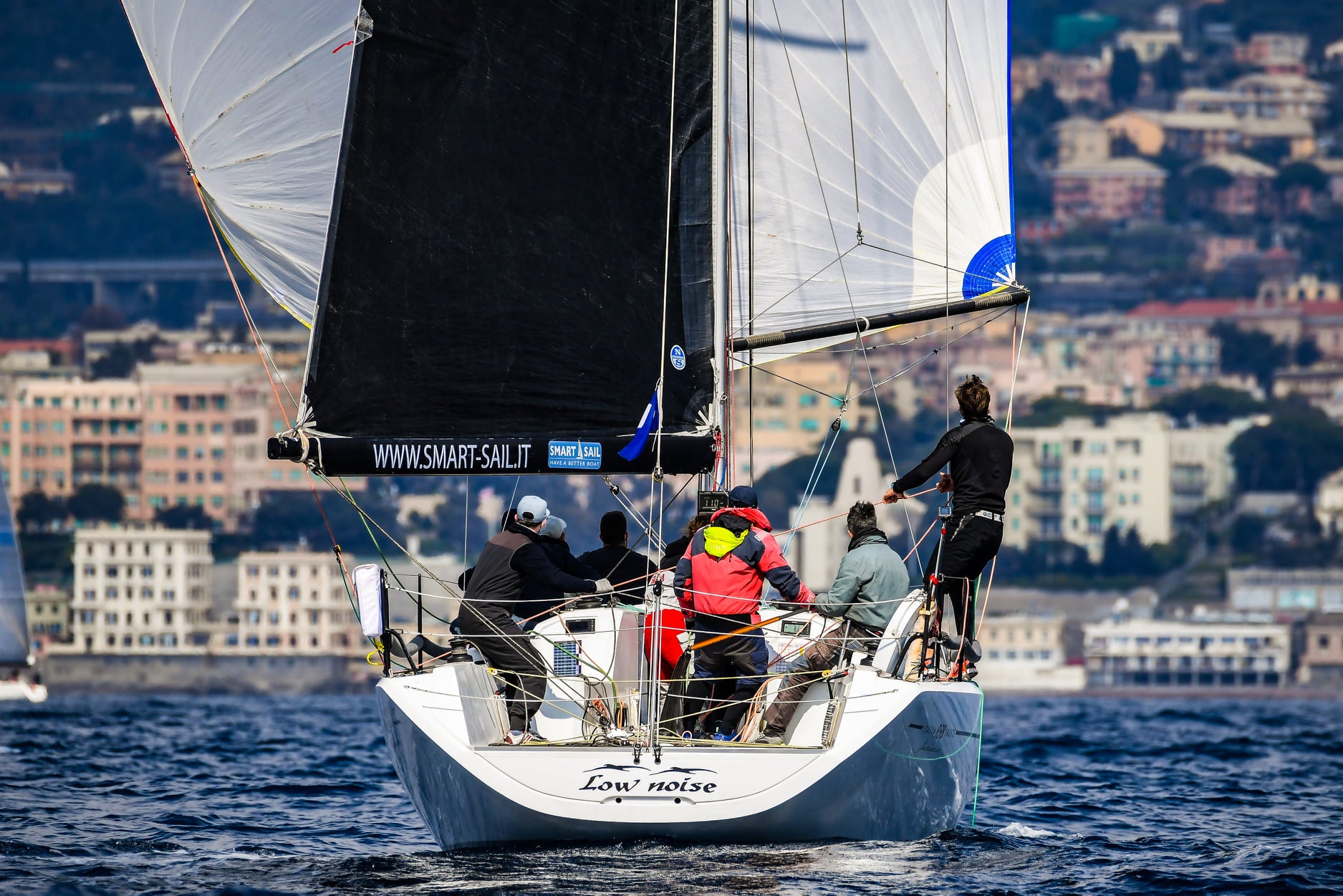
#NSVICTORYLIST: GENOVA SAILING WEEK
#NSVICTORYLIST: GENOVA SAILING WEEK
North Clients Celebrate Success in Every Class
📸 Martina Orsini/Yacht Club Italiano
Genova Sailing Week is a highlight regatta in the Italian sailing calendar every year. Hosted by the prestigious Yacht Club Italiano, the event saw 37 yachts of great variety make up three classes to take to Genoa's waters.
The regatta proved a great success for all North Sails clients after winning ORC Group 1, ORC Group 2, and IRC classes with Katarina II, Low Noise, and Imxtinente, respectively. But these results were all to play for up until the third and final day of racing which determined the winning teams. Conditions were consistent with the previous days, bringing a south-easterly breeze of 7 - 10 knots, allowing the Race Committee to give two more starts.
In the ORC group A, victory was confirmed by Aivar Tuulberg's Swan 42 Katarina II. Driven by Lorenzo Bodini, the strong Estonian crew used the regatta to prepare for the upcoming ORC World Championship in Tallinn, Estonia, this summer.
Finishing closely behind was Francesco Zucchi’s Swan 42, Voloira IV, and in third, to complete the trio of Nautor's Swans on the podium, Alberto Magnani’s Swan 45 Tengher.
North expert Matteo Reboli raced onboard Dabove Valerio’s IY 998 Low Noise as mainsail trimmer. With their scorecard showing bullets in all but one race, the team performed in every race powered by their 3Di RAW inventory. Piero Arduino’s First 31.7 Tekno finished just one point behind. “Genova Sailing Week has been an amazing sailing rendezvous in our home water and club,'' comments Matteo. "Hosted by the Yacht Club Italiano, the regatta was well organized and a great success!''
📸 Martina Orsini/Yacht Club Italiano
📸 Martina Orsini/Yacht Club Italiano
📸 Martina Orsini/Yacht Club Italiano
📸 Martina Orsini/Yacht Club Italiano
📸 Martina Orsini/Yacht Club Italiano
📸 Martina Orsini/Yacht Club Italiano
📸 Martina Orsini/Yacht Club Italiano
READ MORE
READ MORE
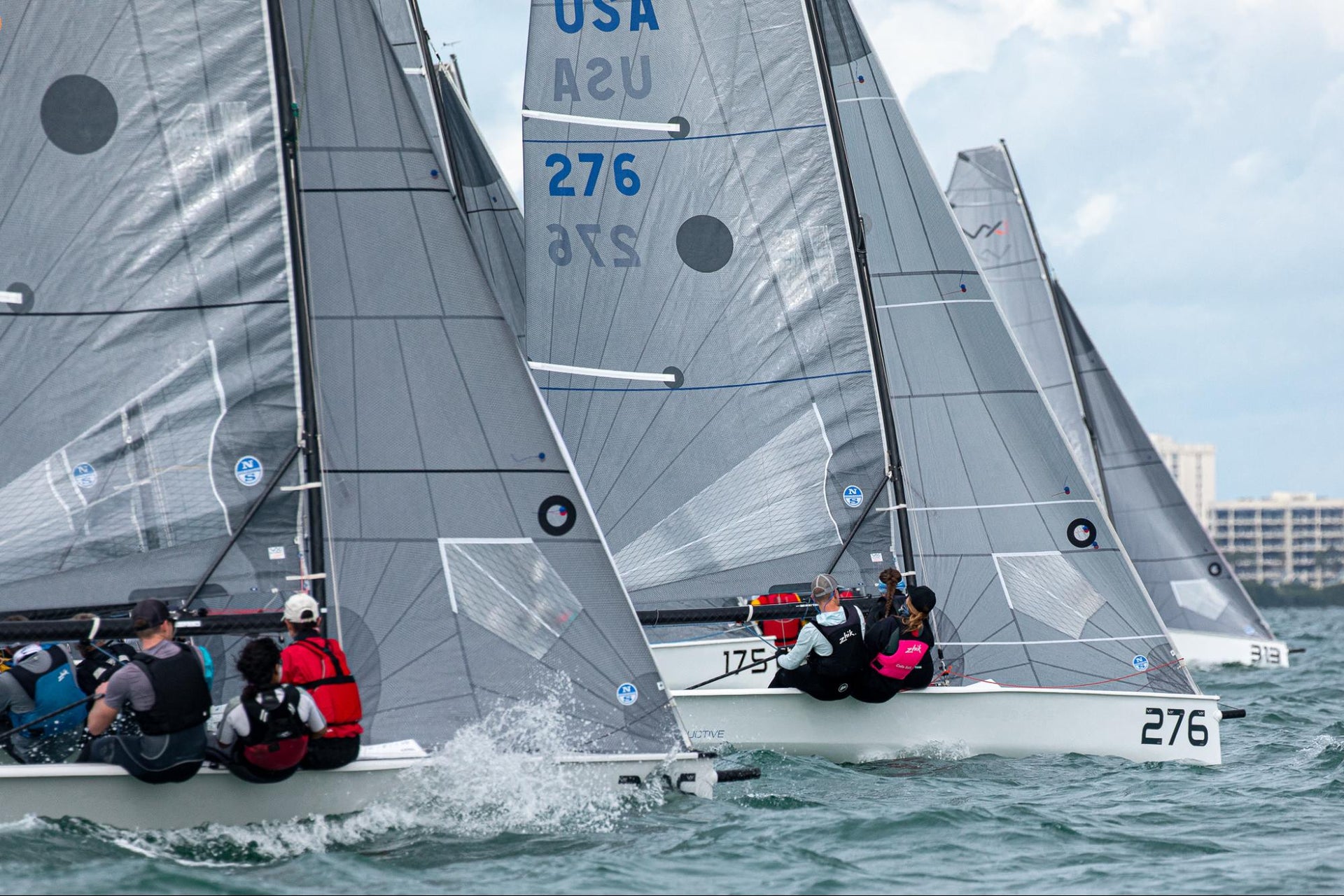
ANOTHER VICTORY FOR CHRIS ALEXANDER AT THE VX ONE WINTER SERIES
ANOTHER VICTORY FOR CHRIS ALEXANDER AT THE FINAL VX ONE WINTER SERIES EVENT
Tight Racing at VX One Winter Series Event #3
Counterproductive and Tudo Bem work hard to maintain upwind lanes 📸 Sarah Wilkinson
The VX One Winter Series wrapped up this past weekend with 3 days of tight racing hosted by the Sarasota Sailing Squadron. Thanks to an experienced group of volunteers on the Race Committee and a continued efficiency gain from the MarkSetBots, the fleet powered through 13 races.
Friday’s conditions tested each team’s preparedness as the northerly breeze built a bit more than was forecast. Sailing clean and just conservatively enough was the name of the game in the solid 18-20 knot breeze and 2-3’ chop. Jim Ward, at the helm of Destiny’s Bounty, was the dominant force of the day with only 4 points in 3 races.
Leatherback Mutiny working the low-mode downwind 📸 Sarah Wilkinson
Saturday brought a beautifully moderate breeze with only one race touching down into fluky territory. The key of the day was sailing fast and in phase with the shifts, which wasn’t always easy with a 25 boat fleet and only 0.65 nautical mile beats. No boat won more than a single race, but Chris Alexander’s Counterproductive won the day by staying focused and finding passing lanes even after congested start lines got the best of them.
Close racing upwind 📸 Sarah Wilkinson
Sunday’s breeze started off light but built steadily throughout the day. Most of the pressure and angle came from course left, but short-lived righties periodically came through and mixed the fleet up. Ian Maccini’s Blue Lobster, Paul Murphy’s Alternative Facts, and Emily Billing’s #284 had moments of glory and each posted their first bullet of the event.
Winning the event was Chris Alexander with Madeline Gill and Kate O’Donnell on Counterproductive. Second place went to Jim Ward with Jeff Eiber and Lynda Bryant on Destiny’s Bounty. Rounding out the podium was Tim Pitts with Tim Desmond on Leatherback Mutiny.
Teams powered by North Sails finished 1, 2, 3, 4, 5, 6*, 7, 8, 9, 10 at the last event.
Congratulations Doug Clark, series overall winner. North teams finished 1,2,3,4,5,6,7*,8,9,10 overall.
VX ONE VIRTUAL HAPPY HOUR – April 5th, 7:30 pm
Join us for a virtual happy hour on Monday, April 5th. North experts Austin Powers, Mike Marshall, Madeline Gill, and Jackson Benvennutti with special guest Chris Alexander will talk about sailing upwind in heavy breeze, discuss boat-handling strategies for boats with 2 or 3 crew members, and also share tips for Charleston Race Week. Register today!
SIGN UP VX ONE HAPPY HOUR
READ MORE
READ MORE
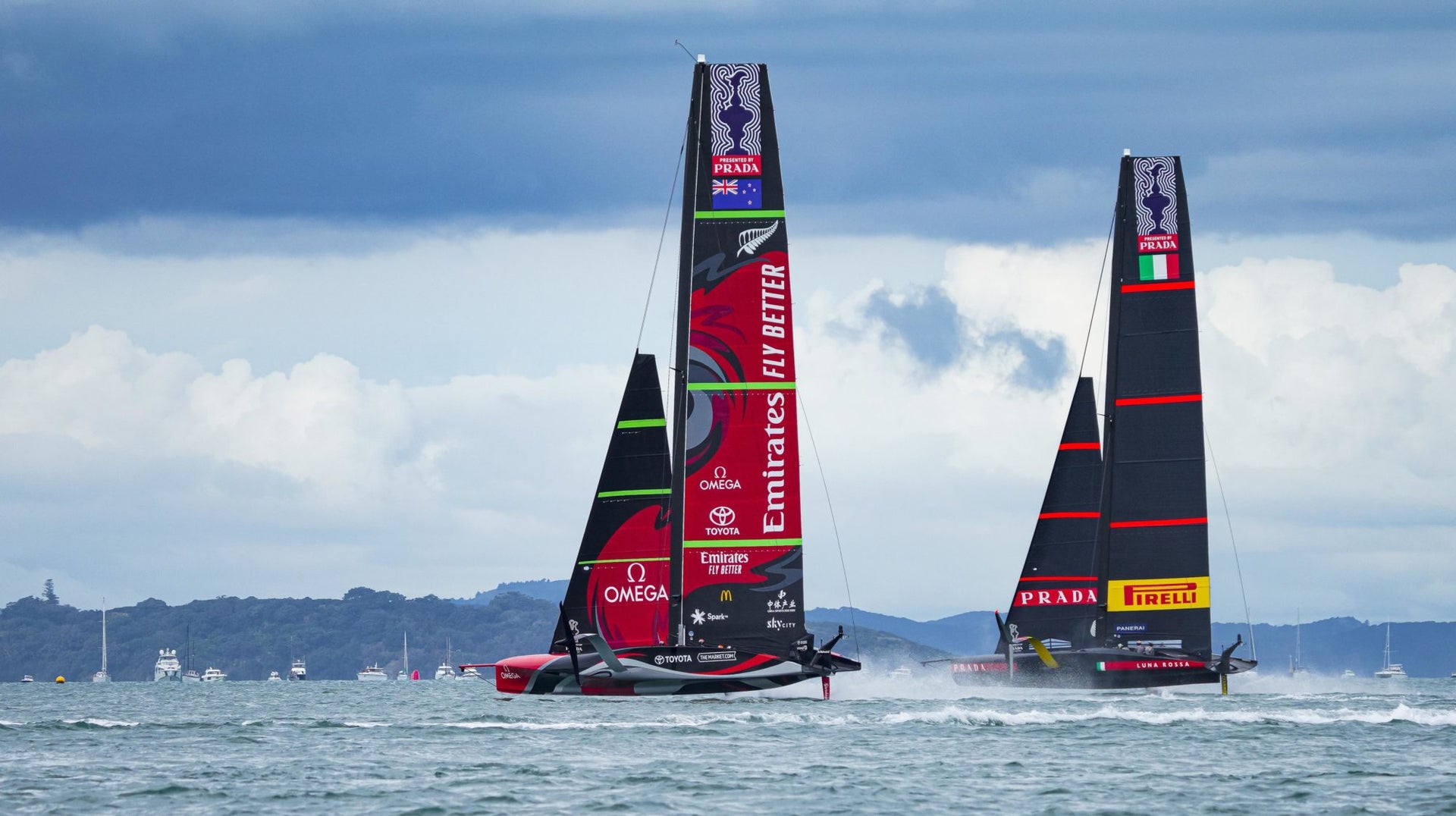
FOUR LESSONS LEARNED FROM THE 36TH AMERICA'S CUP
FOUR LESSONS LEARNED FROM THE 36TH AMERICA’S CUP
North Sails Head of Design and Engineering Debriefs on Our Cup Takeaways
📸 ACE / Studio Borlenghi
It’s been a week since the 36th America’s Cup ended, and we wanted to know what all of this means for the future of sailing and North Sails. We’ve asked North Sails Director of Design and Engineering JB Braun what are the technical lessons that have come up during this America’s Cup cycle… and that could apply to all North sails in the future.
Versatility
“The AC75s are challenging the sail shapes and their range in a more complex way than has ever been done before,” says Braun. “Mainly because of the low righting moment of the boats when they go slow, and their high righting moment when they go fast. When the boats are going slow, their righting moment – their ability to resist heel – is coming from the foils, and those foils don’t work until they’re going fast. So just the boats getting going is a complex process which requires full sails and a low center of effort. And when the boats get going, you want to reduce that power.
📸 ACE / Studio Borlenghi
“In terms of sail design, that leads to different sail structures that power up or de-power. One of the biggest things that you want in a sail is added range, or added optimum application – meaning, to be able to react to a change of conditions if you’re using a given sail. One of the big things that’s going to come out of this America’s Cup is the application of that range. How do you get a sail to be powered up working at very low wind speed, but then have the same sail working at triple or quadruple the apparent wind speed? With normal boats, your apparent wind speed may only go a fraction of that. But when the AC75s are sailing in 12 knots of wind, they’re going to get up to 50 knots of apparent wind. The same sail needs to change its shape quite a bit to be optimum at the low and the top ends.
“Having a sail that can morph itself and have a wider range reduces the uncertainty with selecting a sail. This is an area that’s going to come out as being a big plus for a lot of sailors, the top racers and the Wednesday night races, TP52, ORC fleets, championship racing, and more.”
Materials
“The other area that’s going to be interesting to come out of it is the material menu we have at North Sails. Every material has different properties: some are designed to reduce stress, some are designed to have added tenacity, while others are able to stretch and recover. Others are very stretchy but have unique properties specific to certain areas of the sails. How these different kinds of materials are used and what they were asked to do through this America’s Cup cycle will be applied to future North Sails products.
📸 COR / Studio Borlenghi
“We might be using different types of material in new ways to achieve that added range we mentioned above. For example, we build carbon fiber sails and that’s the primary strength material, but we also use different types for different reasons. It’ll be interesting to keep learning and further exploring the complex relationship of the different materials in the composite and how they’re working together.”
North Sails Design Suite
“From a technical point of view, each team used the North Design Suites to analyze their design space – the rules, the objectives of the sails, the aerodynamic design space. How did their team go about understanding the problem and then attack solving it with the North Sails software? Because that relates to the North Sails software.”
📸 North Design Suite / North Sails
“We have unique tools set up with the North Design Suite which help answer complex questions. There are powerful tools that we use to help the design process along in aerodynamics, in the loading, in the mast design. Throughout the America’s Cup, the embedded North Sails designers used Membrain regularly as a way to run their very complex simulations. The powerful tool, complemented by the rest of the North Sails Design Suite (Desman, Spiral, Warps, and Flow), was constantly in use to validate design ideas. Throughout the course of the 36th America’s Cup, software guru Michael Richelson, updated and further developed Membrain to keep up with the ongoing development of the AC75.”
“I’m excited by how each team went about it to see what development we want to add to the North Design Suite. And that will set us up to have a more powerful design tool and offer opportunities to help our design and manufacturing teams grow and help refine our product further down the road.”
Mast vs Sails
“The masts all have to be the same shape, the boats have to weigh the same and have the same center of gravity. How you get to that point – that can vary. How and where you use the weight and what you identify as a driving performance factor has massive consequences and lead to major differences! Integration is the key word. Considering each element as stand-alone would be a major mistake and have a negative effect on total performance. That affects everybody that has a sail that integrates with a rig…which is everybody with a boat!”
📸 ACE / Studio Borlenghi
READ MORE
READ MORE

TWO-HANDED SAILING KICKS-OFF IN AUSTRALIA
TWO-HANDED SAILING KICKS-OFF IN AUSTRALIA
North Expert Alby Pratt Shares Insights on What's to Come
"2021 looks to be a bumper year for two-handed racing in Australia", says Alby Pratt, NS Sydney Sales Manager. "New teams are meeting to plan their campaigns, and several new boats are hitting the water with the team at North Sails Sydney heavily involved in sail development for multiple clients." In Sydney, the new Dehler 30 has been racing out of Middle Harbour. This boat is going from strength to strength in Europe, with over 30 boats on the water to date. With a layout and rig optimized for shorthanded sailing, the boat is different from many other similar-sized boats and turns heads as she blasts around the harbor. The Dehler 30's inventory includes a square-top mainsail and full-size jib with a reef from 3Di Raw. An NPL Helix staysail and Code Zero are also included with North Gradient asymmetric for downwind performance. In designing an inventory for shorthanded sailing, big sail ranges and making the boat easy to sail is a priority, and this has been a significant focus with the Dehler 30. Sail changes are slow with an entire crew and more so with only 2. By utilizing 3Di Raw for the working sails, North designers have put together an inventory that will keep the boat fast with minimal fuss allowing the crew to concentrate on other aspects of the race such as navigation without worrying about the sail trim. In Melbourne, Aaron Cole, NS Melbourne loft manager, has been sailing with the Cole-Walker offshore team in the Melbourne to Devonport race over the Christmas/ New Year period winning the IRC, AMS, and ORCi divisions & 2nd in PHS. The Cole Walker team has a full year planned to compete in RMS's two-handed events on their Sunfast 3300. With several sisterships racing competition will be challenging in this fleet.
📸 Steb Fisher
The next few months will also see the launching of the new Farr X2. Bret Perry and the team at Hyperform yachting have been working with the Farr design office to build a boat that is sure to get plenty of attention. Bret comes from a Mini transit background and is very experienced in the smaller two-handed sailing style and has used all this knowledge to optimize this new design. Innovation composites south of Sydney are the chosen builder for the JPK range of boats which have been very successful in Europe, winning many shorthanded and fully crewed events. The team at JPK pacific will have four boats on the starting line for this years' Hobart.
The first JPK 1080 in the mold at Innovation Composites.
Later this month, the first Beneteau Figaro to arrive in Australia will launch. With its unique foil setup, this boat should attract a lot of interest to see how she performs in Sydney conditions. With a full schedule of events planned all over Australia and more and more people looking at competing in some shorthanded events, it is shaping up to be the place to be for 2021!
READ MORE
READ MORE

A WINNING COMBINATION FOR DECADES
The fastest boat consistently wins the America’s Cup, and we’ve consistently kept the secrets and built the sails that give teams the confidence boost of superior boat speed.
READ MORE
READ MORE
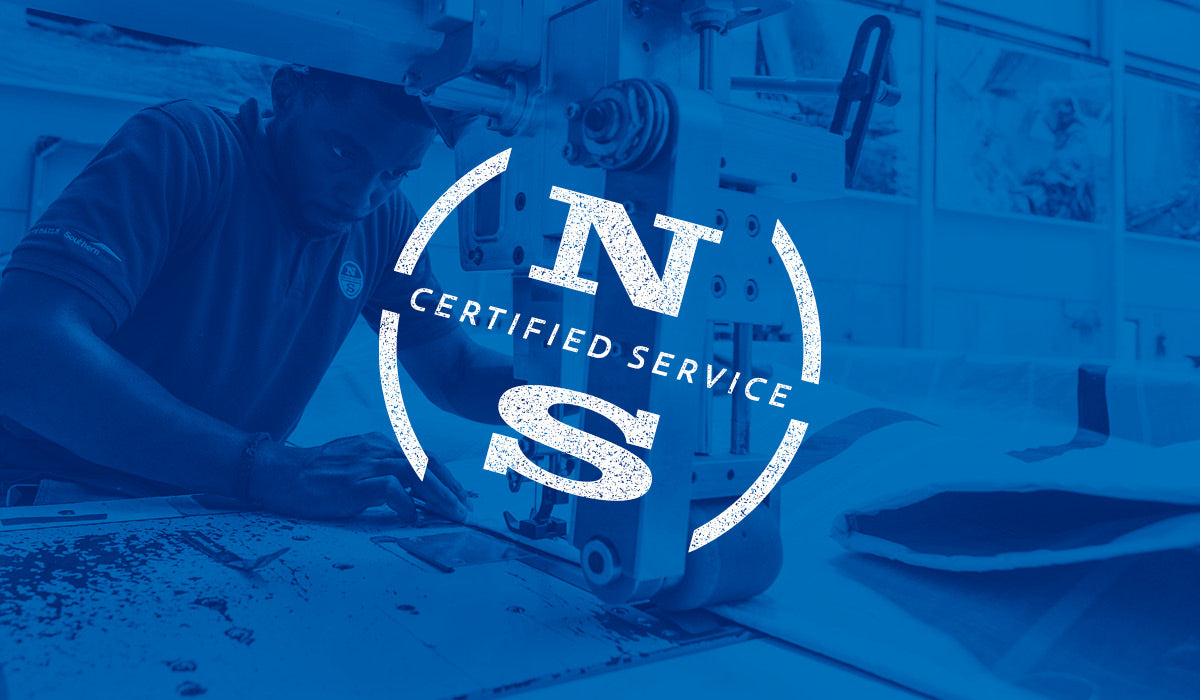
SERVICO DE CHECK-IN ONLINE
SERVIÇO DE CHECK-IN ONLINE
Rápido, Fácil & Seguro
Bem-vindo à North Sails Cascais!
O serviço de Check-in Online é uma ferramenta bastante útil para manter a segurança de todos, durante esta crise de saúde mundial que enfrentamos.
Recomendamos que utilize esta plataforma online como principal meio de contacto, a qual permite que receba e forneça toda a informação necessária.
Contudo, a nossa Equipa está sempre aqui para si e disponível para um contacto mais pessoal e directo, quando necessário.
Contamos com a sua colaboração para o proteger a si e à nossa equipa.
Obrigado por nos confiar as suas velas. Agradecemos que aceda ao formulário, que se encontra em baixo, e nos indique os seus contactos e informação mais detalhada sobre o serviço pretendido. Por favor, confirme que todos os contactos inseridos estão correctos para lhe conseguirmos dar uma rápida resposta.
O formulário de Check-in Online pode, também, ser utilizado para qualquer outro pedido de serviço - reparação e inspeção de velas, serviço de recolha, produção de capas, serviço de rigging, etc.
Se pretender receber mais informação sobre a nossa gama de velas - Cruzeiro, Regata ou One Design - utilize este formulário e o nosso Sail Expert entrará directamente em contacto consigo.
>> PARA ACEDER AO FORMULÁRIO ONLINE CLIQUE AQUI <<
Para mais informações, por favor contacte-nos:
Office.Cascais@NorthSails.com
+351 916 857 896 / +351 916 830 166
(Whatsapp disponível)
Obrigado por escolher a North Sails.
Mantenha-se em segurança!
ONLINE SERVICE CHECK-IN
Quick, Easy & Safe
Welcome to North Sails Cascais!
The Online Service Check-in is a helpful tool to keep everyone safe during the current global health crisis we are facing.
We recommend that you use this online platform as the main form of contact, allowing you to receive and provide all information needed, but as always, our team is here for you and available for personal and direct contact when needed.
We count on your cooperation to help us protect you and our team.
Please access the form by clicking the link below to make your Online Service Check-in and provide us with your contact details and information on the requested service. Please make sure all your contact details are correct so that we can provide a quick reply.
The Online Service Check-in form can be used for any service request - sail repair, sail inspection, sail pick-up, canvas production, rigging service, etc.
If you wish to receive information on our sail range - Cruising, Racing, or One Design - please use this form and a sail expert will contact you directly.
>> ACCESS ONLINE FORM HERE <<
For more information, please contact us:
Office.Cascais@NorthSails.com
+351 916 857 896 / +351 916 830 166
(Whatsapp available)
Thank you for choosing North Sails.
Stay Safe!
READ MORE
READ MORE
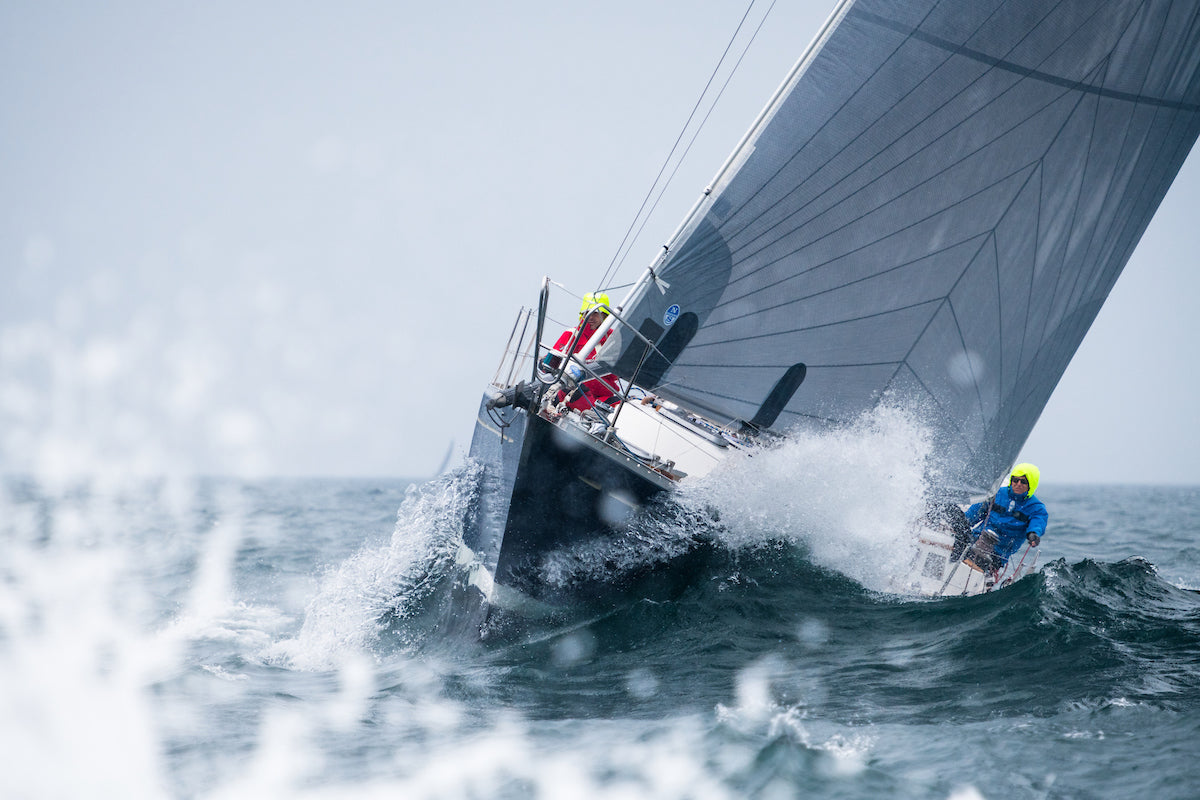
69TH ANNUAL SAM WETHERILL RACE
69TH ANNUAL SAM WETHERILL RACE
With A New Race Course, Essex Yacht Club Kicks-Off Our Sailing Season
From Old Saybrook light to Martha’s Vineyard and back, overnight for a total of 140nm, the Sam Wetherill Race is the perfect tune-up race to kick-start your 2021 sailing season in New England.
This race will be scored under ORC and PHRF rubles for monohulls, and the NEMA rule for multihulls. Doublehanded teams- this is a great race for you too!
The Sam Wetherill Race suits seasoned offshore sailor and aspiring distance racers. It is also a qualifier for the PHRF New England Lighthouse Series. The 69th edition is also a part of the Eastern Connecticut Sailing Association Series.
"I am very excited about the changes that Essex Yacht Club has made to the Sam Wetherill Race. The new course maximizes what is best about the Block Island and Vineyard Races: distance outside of Long Island Sound. The majority of this race is likely to be sailed in stronger and more consistent wind than any of the races that originate in the western part of the Sound. The turning mark just off of Gay Head adds a whole new dimension to the Wetherill. Current in Vineyard Sound cannot be overlooked, and will be an important part of one's race strategy. There is a lot to like about this newly configured 140 mile course."
- Tom Whidden, Past Commodore
Start Time:
The race will start at Old Saybrook Light at maximum ebb time at 11oo, Friday May 21.
The Race Track:
The course will be from the start 0.5 NM west of the Old Saybrook lighthouse around G31 southwest off of Gay Head, leaving it to starboard, then, leaving Block Island to starboard to the finish between the signal boat and the Old Saybrook lighthouse at the outer end of the breakwater. If no signal boat is on station, each yacht shall take their own finish time when the bearing to the lighthouse is 090 degrees.
Awards:
There will be an awards presentation on Sunday, May 23 at the Essex Yacht Club at 1800.
ENTER THE RACE VIEW NOR
READ MORE
READ MORE
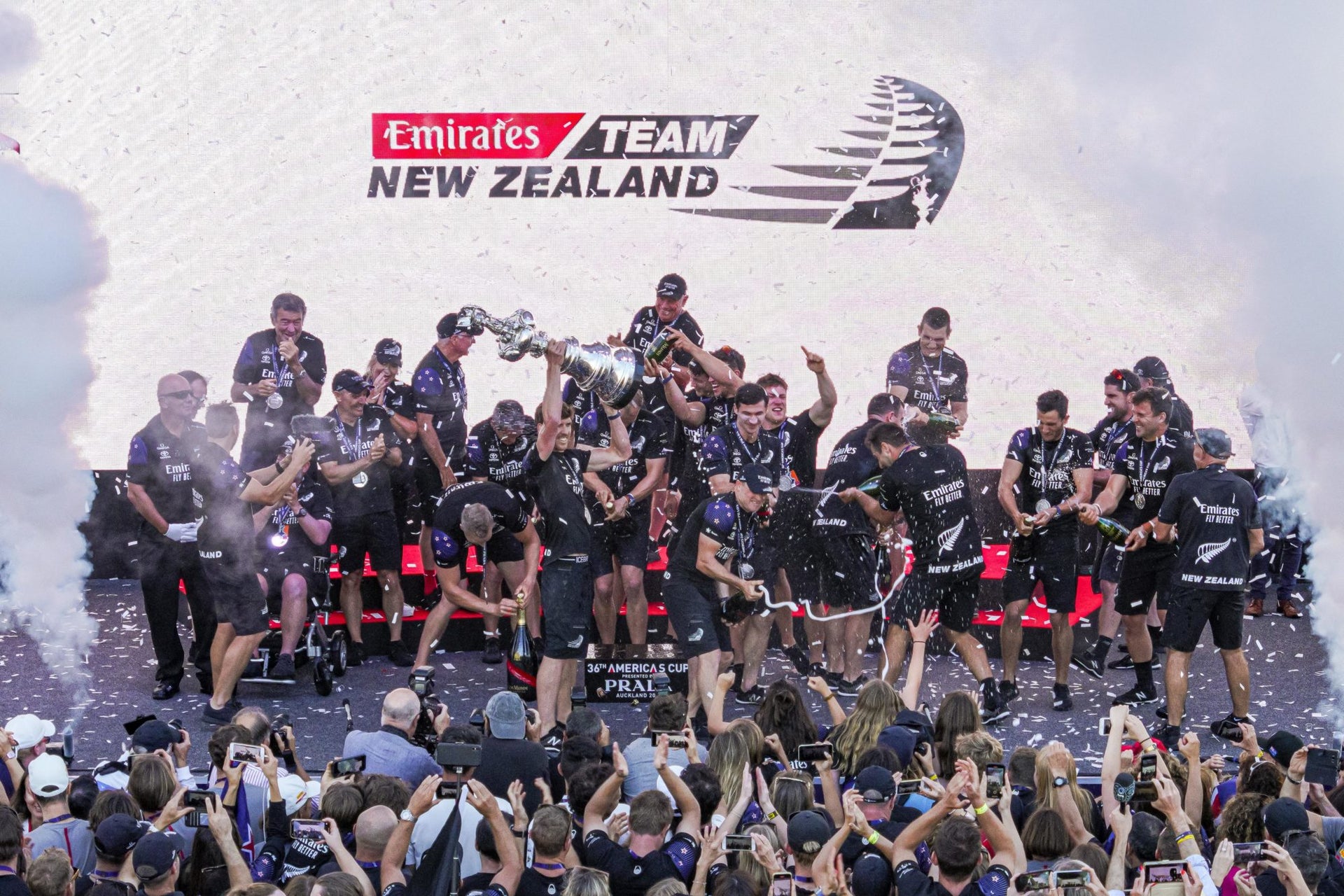
#NSVICTORYLIST: DEN 36. AMERICA'S CUP
#NSVICTORYLIST: DEN 36. AMERICA’S CUP
Forsvarerne Emirates Team New Zealand beholder deres titel
Efter en legendarisk kamp kunne Emirates Team New Zealand i onsdags sejle ind i America's Cups historie og endnu en gang løfte trofæet, the Auld Mug, højt. I løbet af de syv dage og ti sejladser på hjemmebane i Hauraki-bugten, forsvarede Emirates Team New Zealand deres ret som forsvarer af det ældste trofæ i international sport. Det endelige resultat blev 7-3. Deres sejr betyder, at Royal New Zealand Yacht Squadron nu er den næstmest vindende sejlklub i America's Cups 170 års historie. Anført af den unge Peter Burling, er Emirates Team New Zealands sejr historisk og et symbol på mange lange dage og søvnløse nætter for at skabe den hurtigste båd på vandet. Kampen for at kunne holde trofæet igen varede i tre år, efter at Emirates Team New Zealand sejlede sig ind i Cup-historien i 2017. Efter denne sejr lod new zealænderne innovationen føre dem til en ny, moderne klasse som vi aldrig har set før, komplet med flyvende både og vingesejl af blød sejldug. Og nu er vi alle tilbage og spekulerer på, hvilke spændende "hemmeligheder" der vil afsløre sig med tiden. I løbet af de syv vilde dage var sejladserne utrolig tæt og kunne let have gået begge veje, hvilket beviste at AC75 er en fantastisk båd, og holdene omkring dem de bedste i branchen. "Hatten af for Luna Rossa Prada Pirelli," sagde den new zealandske sejler Glenn Ashby efter deres America's Cup-sejr. ”Vi vidste ikke, hvad der ville ske, da vi kom fra startlinjen i den første af America's Cup sejladserne. Og man vågnede hver morgen og tænkte: 'hvad vil dagen bringe?' Men vi havde en raket af en båd. Det tog os lidt tid at udarbejde strategien mod Luna Rossa, og de var absolut nogle hårde konkurrenter. Det var ekstremt vanskeligt for os at komme forbi dem. At vi klarede det helt til slut, var simpelthen på grund af et fantastisk design-, ingeniør- og shore team.” Luna Rossa Prada Pirelli, den officielle udfordrer og med danske Michael Richelsen som er Chef for CFD Aero og en vigtig del af North Sails udvikling af North Design Suite™, gav ikke op uden kamp. Faktisk tvang det italienske hold new zealænderne ud på deres yderste mere end én gang i hele serien. Det er helt sikkert at resultatet kunne være gået begge veje og sejren blev vundet på grund af små fejl, ikke design eller teknologiske fordele. I løbet af de sidste tre måneder perfektionerede Luna Rossa at flyve deres 75 fods båd og besejrede de hold, der stod imellem dem og selve hovedbegivenheden. Uanset om det var briterne eller amerikanerne, kunne ingen måle sig med de benhårde italienere og deres to rorsmænd, Francesco Bruni og Jimmy Spithill. Når man ser bort fra trofæer og landeflag, er der én ting, vi alle kan være enige om efter at have fulgt America's Cup i 2021: America's Cup har bekræftet sin position som førende inden for innovation inden for sporten. Med det nye dobbeltsidede storsejl, også kaldet “Twin skin mainsail”, og 75 fods enkelt skrogs både, der flyver med 50 knob, er sejlsporten også vinder af denne America's Cup. North Technology Group, inklusive North Sails, Southern Spars og Future Fibers, er stolte over at være en del af den 36. America's Cup-historie. Da forberedelserne til denne Cup begyndte, og holdene søgte at samle de bedste folk, teknologi og komponenter, vidste forsvarerne, Emirates Team New Zealand, udfordrerne, Luna Rossa Prada Pirelli, og INEOS Team UK, at North Technology Group havde nøglen til succes. Lige før den sidste dag med sejladser, lykkedes det os at få fat i Ken Read fra North Sails og America's Cup-kommentator, for at høre hans syn på de sidste tre måneder, og på hvordan den 36. America's Cup for evigt har ændret sejladsen. Her er hvad han havde at sige ...
NorthSails · North Sails Podcast- Ken Read America's Cup Reflections
"Alting ændrer sig inden for sejlsporten, det er der ingen tvivl om. Det summer og koger simpelthen. Vi har aldrig set sejlads som det her før, ikke engang os benhårde sejlere. Uanset om du elsker foiling eller ej, er det her anderledes. Det her er utroligt. Og skal man tror på rygterne bliver dette også klassen der rykker fremad mod næste America's Cup." "Denne America's Cup vil helt bestemt medføre en hel masse innovation. Jeg kan ikke vente på design-debrief med alle North Sails-designerne, for jeg ved med sikkerhed, at det, der kommer ud af denne debrief, kommer til at være helt ulig alle andre debriefs nogensinde. Det er her, vi ser 3Dis fremtid udfolde sig, og det sker lige for øjnene af os." "Hvad der skete på Hauraki Golfen vil få betydning for tursejlere, superyachts, offshore-kapsejladser og Grand Prix-sejladser. Hvad vores integrerede designere har lært i denne Cup er intet mindre end spektakulært. Og det er fantastisk. Det er fantastisk for os. Det er fantastisk for sejlverdenen." "Det er selvfølgelig ikke øjeblikkeligt, for alle disse hold her tænker stadig på at komme igen, og de vil faktisk forsøge at holde så meget information for sig selv som muligt. Men måske er det på anden eller tredje generations niveau, hvor dele stammer fra AC-båden, at vi kan bruge dem på vores egne både." "Udviklingen kommer ikke til at gå langsommere. Lad os håbe, at vi har en periode på to eller måske tre år mellem Cups. Lad os håbe, at andre hold kommer med. Vi ved ikke nødvendigvis, hvor næste løb skal være. Men ved du hvad? Det betyder ikke noget lige nu - lad os nyde det. Lad os bruge det, tale om det, lad os være stolte af det. " "Vær stolt af at sige, at North Technology Group-produkterne var på de vindende både. Lad os have det sjovt med det, fordi du kommer til at se meget mere om det. Og når debriefet først er overstået og vi rigtig kan finde ud af, hvad der virkelig skete bag gardinet, det er dér det sjove virkelig begynder." "Dette er Kenny Read, der takker af. Forhåbentlig ses vi ude på vandet til sommer." Kort efter at have optaget sin podcast måtte Ken pakke sammen og flyve til Californien for at sejle i en kapsejlads. Fra Ken og alle os andre hos North Sails, stort tillykke til Emirates Team New Zealand og hele deres team af sejldesignere, mastebyggere og designere. Dette inkluderer Burns Fallow (chef sejldesigner), Aaron Boot (foil-designer), Ben Fletcher (sejlmager), Richard Kiff (sejlmager), Bobby Kleinschmit (bådarkitekt), Guillaume Verdier (bådarkitekt), Rob Salthouse (rigkonstruktionskoordinator), Dan Bernasconi (leder af design), Ray Davies (træner), Hamish Hooper (PRO) og Grant Dalton (administrerende direktør). Det har været fascinerende at se jeres vision for AC75 komme til live og takker jer alle for at vise os sejlads på højeste niveau.
READ MORE
READ MORE
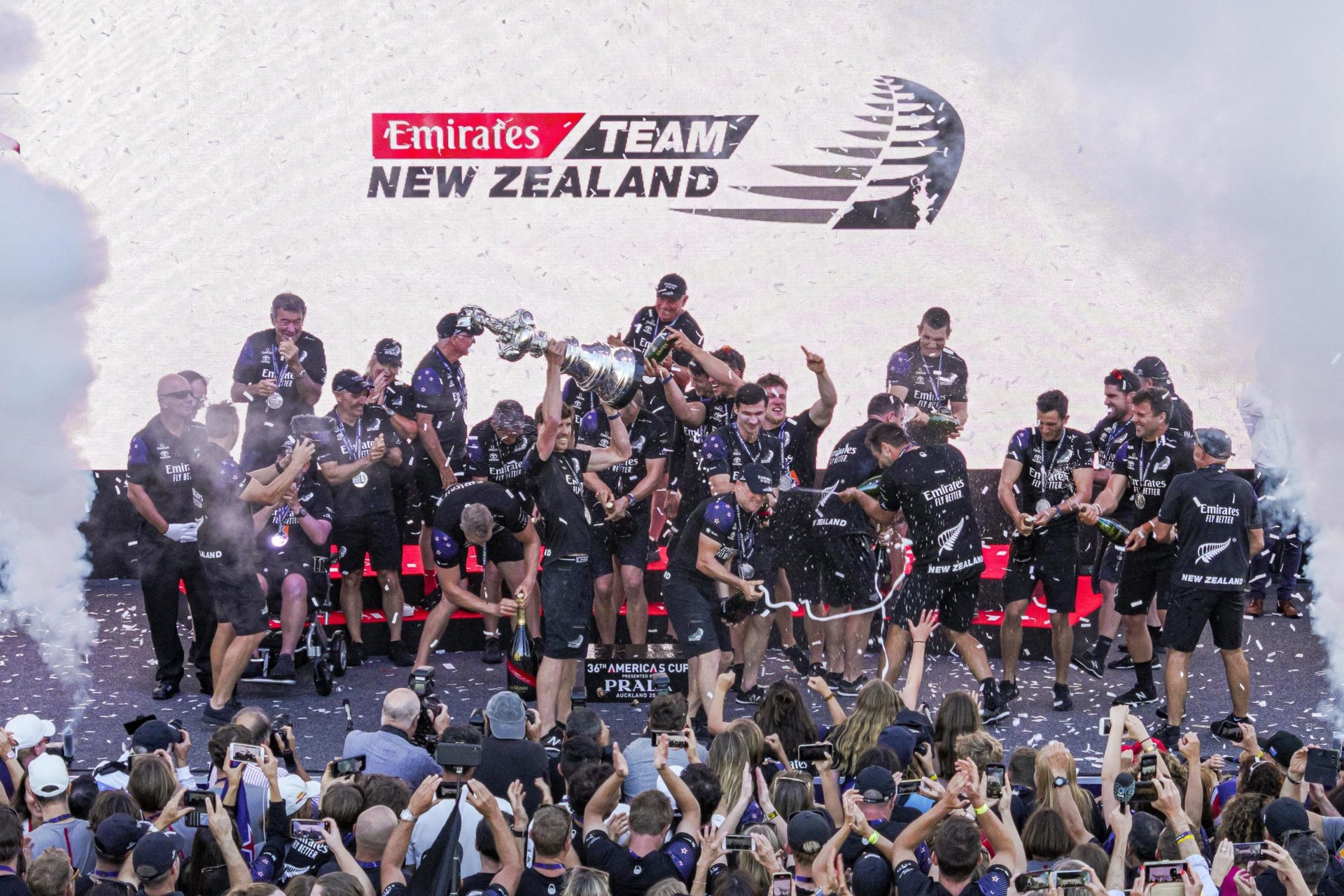
#NSVICTORYLIST: 36TH AMERICA'S CUP
#NSVICTORYLIST: THE 36TH AMERICA’S CUP
Defenders Emirates Team New Zealand Keep Their Title
After a battle for the ages, Emirates Team New Zealand sailed into America’s Cup history on Wednesday afternoon (NZ local time) and, once again, held the Auld Mug up high. Over the course of the seven days and ten races on home waters in the Hauraki Gulf, Emirates Team New Zealand defended their right as guardians over the oldest trophy in international sport. The final result was 7 to 3. Their win means the Royal New Zealand Yacht Squadron is now the second most winning yacht club in the 170-year history of the America’s Cup.
Led by the young Peter Burling, Emirates Team New Zealand’s win is one for the ages and a symbol of many long days and sleepless nights to create the fastest boat on the water. The journey to hold the Cup aloft again was three years in the making after Emirates Team New Zealand cycled their way into Cup history in 2017. Following this win, the Kiwis let “innovation” lead them to a new, modern class like we’ve never seen before complete with flying boats and soft wing sails. And, now we’re all left wondering what exciting “secret” things will reveal themselves with time. Over the course of seven wild days, racing was incredibly close and could have easily gone either way, thus proving: the AC75 is one amazing boat and the teams around them are the best in the business.
“Hats off to Luna Rossa Prada Pirelli,” Kiwi sailor Glenn Ashby said following their America’s Cup win. “We didn’t know what was going to happen when we got off the start line of race one of the America’s Cup. And, you woke up every morning going: ‘what’s the day going to bring?’ But, we had a rocket ship of a boat. It took us a little while to work out the mode against Luna Rossa and they were absolutely fierce competitors. It was extremely difficult for us to get past them. For us to come through at the end really came down to a fantastic design, engineering, and shore team.”
Luna Rossa Prada Pirelli, the official Challenger of Record, did not go down without a fight. In fact, the Italian team forced the Kiwis to the brink more than once throughout the series. It’s entirely safe to say the score could have gone either way and wins happened because of small mistakes, not design or technology advantages. Over the course of the last three months, Luna Rossa perfected flying their 75ft monohull and defeated the teams who stood between them and the main event. Whether it was the Brits or the Americans, no one was a match for the super slick Italians and their dual helmsmen, Francesco Bruni and Jimmy Spithill.
Trophies and country flags aside, there’s one thing we can collectively agree upon following the 2021 America’s Cup: the America’s Cup has reaffirmed its position as the leader in innovation for the sport. With twin skin mains and 75ft monohulls flying at 50 knots, the sport of sailing is the other winner of this America’s Cup.
North Technology Group, including North Sails, Southern Spars, and Future Fibres, are proud to be a part of the 36th America’s Cup story. When this Cup cycle began and teams were looking to bring together the best people, technology, and components, the Defender, Challenger, and INEOS Team UK knew North Technology Group held the key to success.
Just before the final day of racing, we managed to grab President of North Sails, and America’s Cup commentator, Ken Read, to get his take on the last three months and how the 36th America’s Cup has forever changed the sport of sailing. Here’s what he had to say…
NorthSails · North Sails Podcast- Ken Read America’s Cup Reflections
“The changing world of sailing is certainly amongst us, and there’s no question about it. The sailing world is simply a buzz. We’ve never seen sailing (even us diehard sailors) like this before. Whether you love foiling or don’t love foiling, this is different. This is crazy. There is a strong future ahead and it really sounds like everything I hear so far is, this is the class going forward.
“This America’s Cup is certainly going to bring a ton of innovation forward. I can’t wait for the design debrief with all the North Sails designers, because I know for a fact that what comes out of this debrief is going to be like no debrief ever before. This is where we’re watching the future of 3Di unfold, and it’s happening right before our very eyes.
“What happened on the Hauraki Golf is going to trickle down to cruising, superyachts, offshore races and Grand Prix syndicates. What our embedded designers have learned in this Cup is nothing short of spectacular. And that is great. That’s great for us. It’s great for sailing.
“It might not be immediate because all these teams here are still thinking about going again and they want to actually try to keep as much information to themselves as possible. But, perhaps it’s in the second or third generation level where bits and pieces come off the AC boat and we can use them on our own boats.
“This is not going to slow down. Let’s hope that we have a two, or maybe three, year cycle between Cups. Let’s hope that other teams jump in. We don’t necessarily know where the next race is going to be. But you know what? It doesn’t matter right now– let’s thrive in this. Let’s utilize it, talk about it, let’s be proud of it.
“Be proud of saying the North Technology Group products were on the winning boats. Let’s have fun with it because you’re going to see a lot more about it. And once the debrief happens, and we really get sick our teeth into the nitty-gritty and find out what really happened behind the curtain, that’s when the fun really begins.
This is Kenny Read signing off. Hopefully see everybody out in the water this summer.”
Shortly after recording his podcast, Ken had to pack up and fly to California to sail in an offshore race. From Ken and all of us at North Sails, a huge congratulations to Emirates Team New Zealand and their entire sail design team, mast build, and design team. This includes Burns Fallow (lead sail designer), Aaron Boot (foil designer), Ben Fletcher (sailmaker), Richard Kiff (sailmaker), Bobby Kleinschmit (naval architect), Guillaume Verdier (naval architect), Rob Salthouse (rig construction coordinator), Dan Bernasconi (Head of Design), Ray Davies (coach), Hamish Hooper (PRO), and Grant Dalton (CEO).
It’s been fascinating to watch your vision for the AC75 come to life and thank you all for showcasing sailing at the highest level.
READ MORE
READ MORE
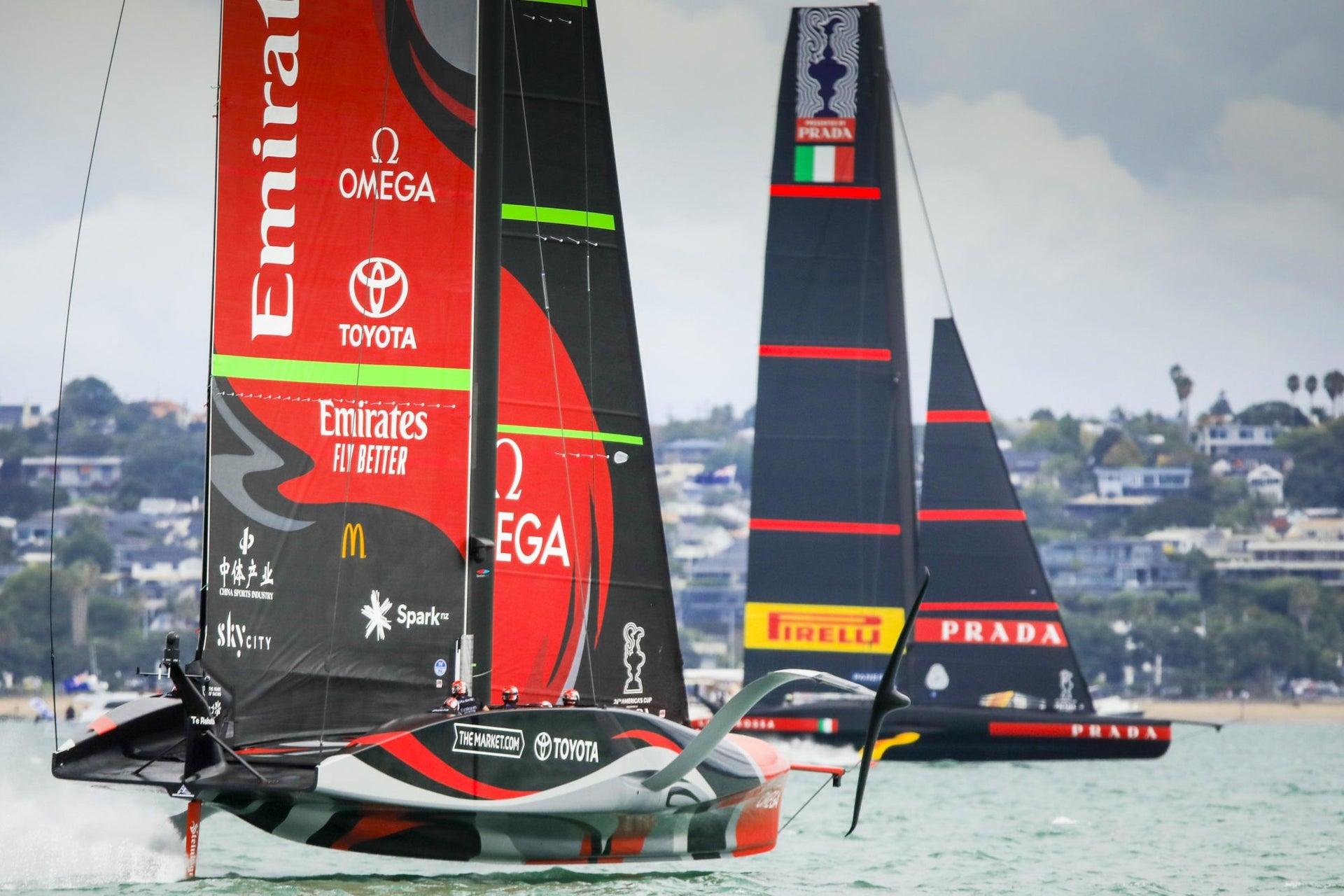
LET'S TALK SAILS: DECISIVE DETAILS & CRITICAL CLUES
LET’S TALK SAILS: DECISIVE DETAILS AND CRITICAL CLUES
Day 6 of the 36th’s America’s Cup was a little windier, a little shorter – one race only – but all the more intense for it.
📸 ACE / Studio Borlenghi
The end is near – the end of the 36th America’s Cup, that is. North Sails and INEOS TEAM UK sail designer Gautier Sergent, who’s constantly studying the AC75s and analyzing their sail choices, shares his notes.
Sergent mentioned “a lot of small details that might be worth paying attention to.” First, the mainsails. “They both kept their big mainsail on despite the 14 to 15 knots of wind. On a course like this, the wind speed varies a lot and it’s the jib size that changes if needed, not the mainsail. That’s because the latter helps balancing the boat’s power and heeling angle.”
With the Cup potentially one race away from the end, he explains that “there won’t be any big changes anymore, but details will be key.”
“It’s interesting to notice how much the aerodynamic fairings have changed on the Luna Rossa Prada Pirella deck since the World Series. They’ve added some fairing on the top and opposite sides of the cockpit to further hide the sailors from the wind and reduce the aero drag. It’s sort of emulating the Emirates Team New Zealand sunken cockpit.
“It also helps have a cleaner flow on the sails, making them more efficient. The Luna Rossa guys have filled every recess and hole so the airflow doesn’t break and generate turbulences. Everything is as tightly fitted as possible around the sailors. On the AC75s, the deck and the sails are designed as one single package and the Kiwis had integrated this in their boat concept. But the Italians have done a nice job developing these fairings to efficiently guide the airflow around the deck and sails.”
Speaking of clear trails, Sergent notices some work has been done on the Emirates Team New Zealand’s mainsail clew. “After the technical crew worked on it this week, the fairing around the clew of the main was noticeably cleaner and its trailing edge thinner. Their mainsheet ram is placed between the two skins, making the trailing edge thicker. You can see the telltales getting sucked in between the two skins. In that regard, the Luna Rossa set-up is much cleaner. But as we explained previously, the Kiwis have also lowered their deck and extended the sail further down to gain sail area – everything is connected!”
Perhaps less technical but an obvious point of difference, the windows cut out in the Luna Rossa Prada Pirelli’s sails. “The Italians have two big windows, one in the main and one in the jib, while the Kiwis don’t. It’s a small thing, but it means they’ve chosen to trust the guys on the leeward side instead of creating a weak point in the sail’s structure.
📸 ACE / Studio Borlenghi
“I’ve noticed it because we’ve had similar conversations with INEOS TEAM UK: the sailing crew like these windows but with sails this flat, that are under such effort, these mylar windows stretch with these very high apparent wind speeds and end up creating a lump to leeward. On a conventional boat with all the crew to windward, of course, it’s understandable. But on these, you could compensate with onboard communication.”
One last thing? Gautier has his eyes everywhere. Nothing escapes Sergent’s stare. “Yesterday, I also noticed the bottom batten of Emirates Team New Zealand’s Jib 3. The batten is almost on the foot of the sail and it’s an unusual place for it. Two potential reasons for this: first, it might reduce the amount of flapping during a tack or a gybe, reducing drag which is crucial when the boat is essentially powerless. Second, on these hard sheeted flat sails, the airflow can have a tendency to separate around the tack area, so they might have placed this batten there to try and control and lock the shape in this area. A small separation could rapidly extend to a wider part of the sail, affecting its efficiency.
Perhaps a little pensively, Sergent adds that “each team has a different approach and is learning to play with it.” But with the racing reaching its conclusion soon – too soon?, there isn’t much time left for learning.
📸 ACE / Studio Borlenghi
READ MORE
READ MORE
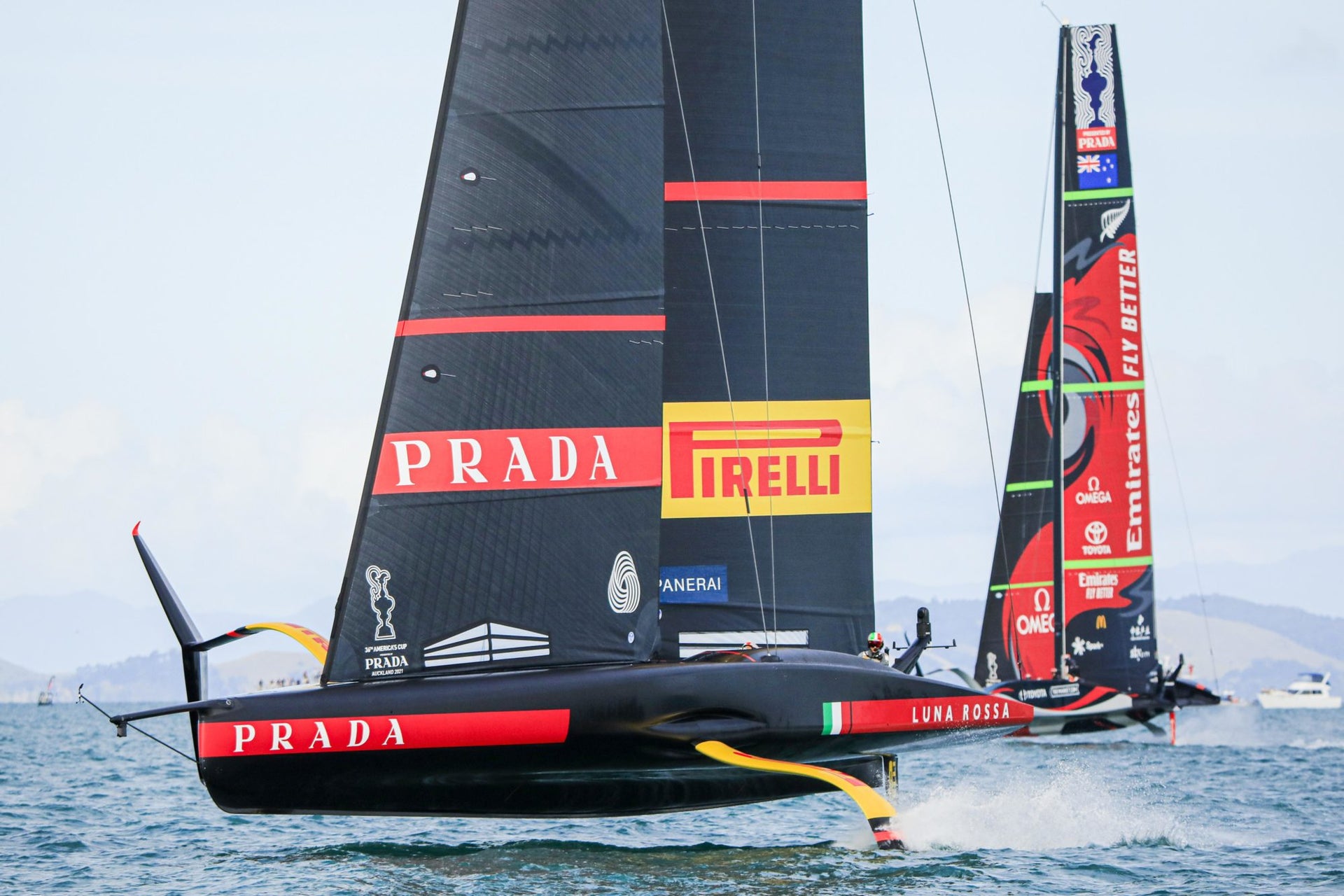
EVERYTHING IS CONNECTED ON AN AC75
It’s been six days of the 36th America’s Cup. We’ve cheered, we’ve gasped, we’ve sighed. The light winds of the Hauraki Gulf provided us with some incredibly tight racing and plenty of material for a technical chat with North Sails and INEOS TEAM UK sail designer Gautier Sergent.
READ MORE
READ MORE

SAIL INVENTORY TIPS FOR HYLAS YACHTS
North Sails experts Peter Grimm Jr. and Bob Meagher explored Hylas Yachts' various models and their sail configurations in their webinar, Let's Talk Hylas Yachts.
READ MORE
READ MORE
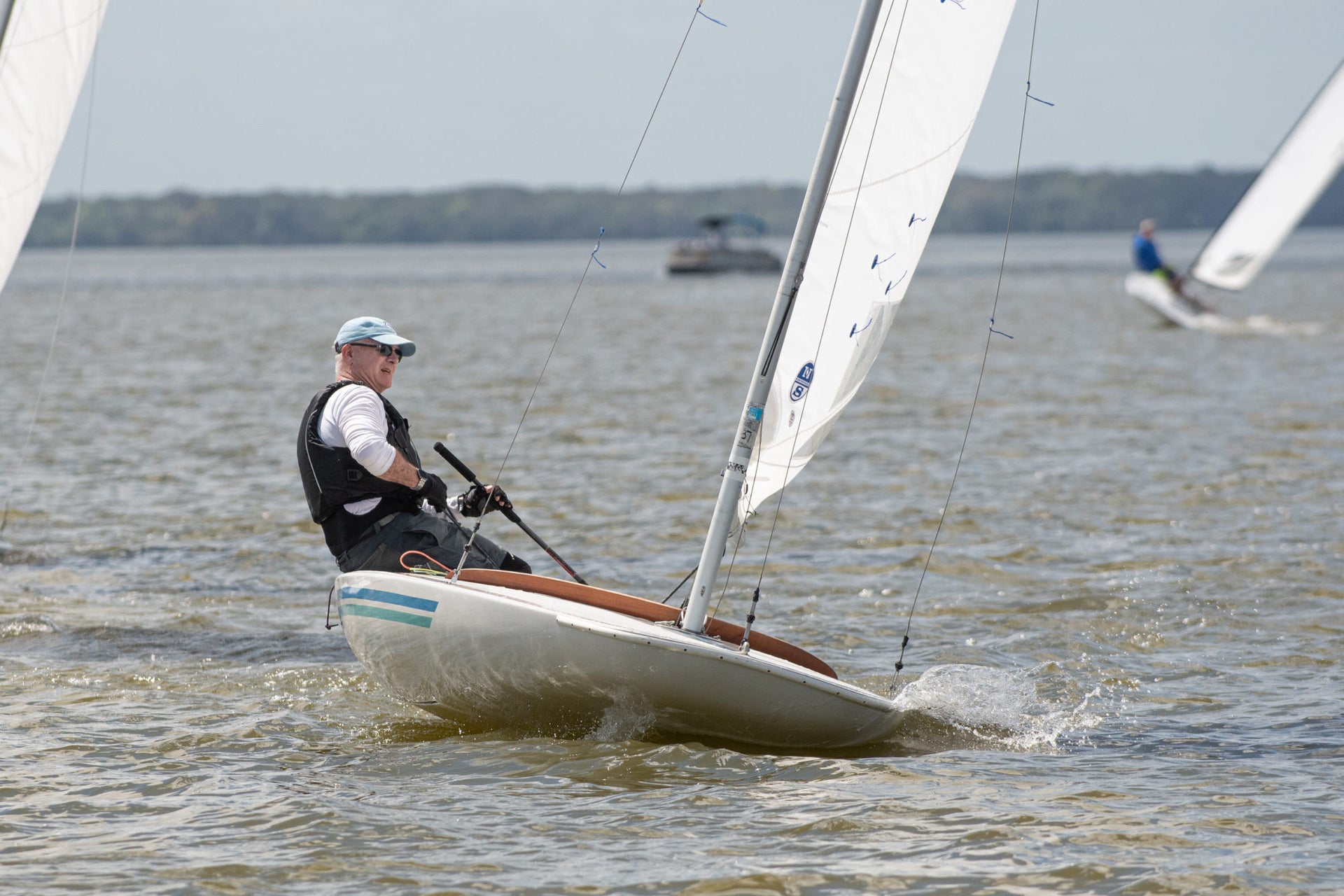
NEW MC SCOW MAGNUM WINS MIDWINTERS
NEW MC SCOW MAGNUM WINS MIDWINTERS
New Sail Designs Are Fast Out of the Bag in Florida
📸 Regatta Girl Photography
It’s a success! The new North Magnum design finishes 1,2 at the 2021 MC Scow Midwinters and the MC Rocket powered the winner at the Sarasota Bay Cup, the Pre-Midwinter event. The new MC designs were first launched in February at the Train Wreck Regatta in Eustis, FL. After countless hours of development, involving many members of the North Sails one-design team and sail designer Mike Marshall, results officially confirm that the new North designs are the best choice for MC Scow sailors.
Class expert Allan Terhune commented:
“The MC Magnum is a powerful sail. The results are here and we are very confident that the MC Magnum will be a huge success this summer. We made some significant changes to the MC Tuning Guide, including shroud tension and board angles, which are crucial for boat speed. Make sure to check it out! If you are planning to go to Nationals in Iowa, the MC Magnum is a MUST HAVE!”
Congratulations to James “Buzz” Reynolds for his consistency in both races at the event. Buzz was able to take his new sail right out of the bag and win the regatta.
Order your new Magnum today to get the speed and help you are looking for to be a step ahead at Nationals. We look forward to seeing you on the water at the Easterns and Nationals this year.
Sarasota Bay Cup (Pre-Midwinters) – Full Results
Midwinters – Full Results
SHOP MC SCOW
READ MORE
READ MORE
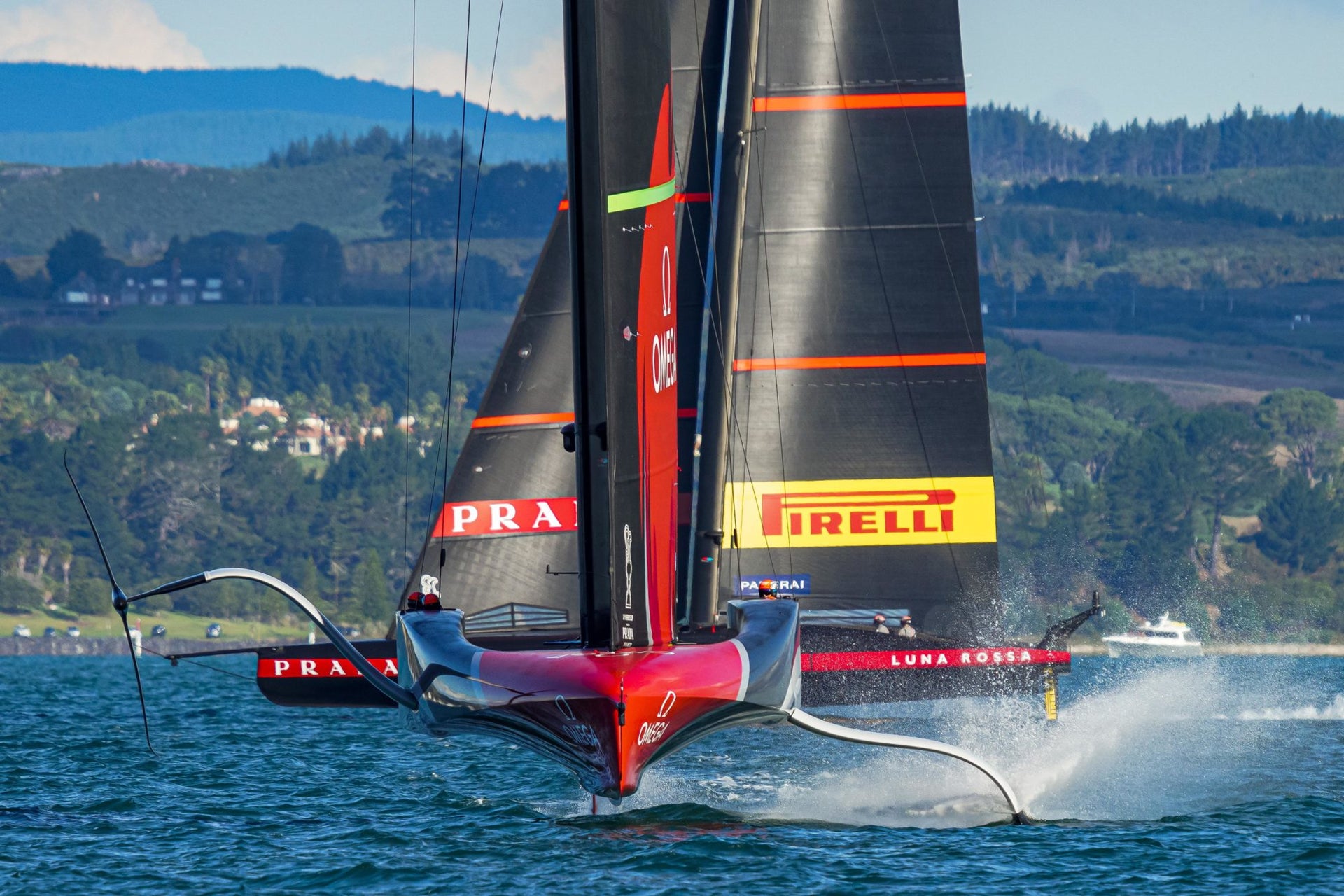
LIVE UPDATES: THE 36TH AMERICA'S CUP MATCH PRESENTED BY PRADA
LIVE UPDATES: THE 36th AMERICA’S CUP MATCH PRESENTED BY PRADA
On-The-Group Updates and Highlights from Auckland
📸 ACE / Studio Borlenghi
It’s been decided. Challenger Luna Rossa Prada Pirelli will meet Defender Emirates Team New Zealand to race for the oldest trophy in sporting history. The teams will sail 13 races, with the first team to seven wins claiming victory. This is an exciting time for North Sails as both competitors trust North Sails and our NTG family brands Southern Spars and Future Fibres to power their engine above deck. Our group has also supplied design talent and software to support the teams’ quest for the Cup. And for those of you who want to dress the part, North Sails is an official partner for event-branded clothing.
Racing begins March 10th at 1600 NZL time. Make sure to check your time zone if you’re watching remotely. North Sails will also be covering the Cup on this live blog and our social channels. Updates from Auckland below!
How to Watch
March 17, 2021, 1630 GMT
Kiwi victory over friends and rivals
On 17 March, New Zealand became the first country to have twice won and twice defended the America’s Cup. The final scoreboard against Luna Rossa Prada Pirelli was seven races to three, nailed in just seven crazy days that sat at three points-even after day three.
When the Defender, Emirates Team New Zealand, first lined up against Luna Rossa Prada Pirelli on 10 March, it was impossible to pick the stronger team. Three days later, the even points still refused to answer: Who has the fastest boat?
Both teams were titans of sailing talent; Spithill and Burling are the two youngest skippers to have won the America’s Cup. Their skills delivered some of the best racing in America’s Cup history, especially races 7, 8, and 9, and in AC75- boats that will change sailing forever.
Both teams arrived to the America’s Cup finals with different sets of skills: Italy was race-hardened but, like the rest of us, knew little about its opposition apart from rumors of speed. New Zealand had collected and run infinite bytes of data on Luna Rossa through its simulators but was race-rusty. And, ironically, Luna Rossa Prada Pirelli became the stone on which Emirates Team New Zealand sharpened its winning set of skills.
The final show played out on Course A in just over 10 knots of wind. Spithill wanted the right. He dove into the box and gybed slowly, hoping to lure Burling into a trap. Burling didn’t fall for it. He even took a slight loss to claim the windward hip of Luna Rossa Prada Pirelli at the start.
Before we could wonder if the Kiwis could live there, they tacked to claim the favored right-hand pressure from which they could bounce back with starboard rights. In match racing, this is gold. For the rest of the race, Burling handed the Italians the same tactics they had played so often in this America’s Cup: The Kiwis protected the right until they didn’t want it, then crossed tacks in a close flurry of foiling arms to take the left.
The first delta was just 7 seconds. Italy chased hard on the downwind leg; New Zealand gybed to stay in sync. At gate two, Emirates Team New Zealand’s gybe was a little untidy; Luna Rossa’s even more so, and the Italians kept both foils down too long for optimum speed. It was their last chance to regain the lead, and it didn’t just didn’t happen. From there, the Kiwis shut down the racecourse and sped downhill They won by 46 seconds and proved that Kiwis can fly.
America’s Cup 2021 was a clean battle on the water. And, at the end of it, the sailors genuinely appear to be friends. For viewers, it’s been like binge-watching an entire season of “Friends” in one sitting. Looking back, the weeks feel like one bike blur. So, to help, here’s our favorite moments from the last seven crazy days…
Race one was the one where, just after the start, Spithill attacked and just missed a penalty against New Zealand’s Te Rehutai: New Zealand’s point.
Race two was the one where Burling went for a hook in the prestart and missed. He followed Luna Rossa around the course and lost speed tacking into dirty air, but sprinted down the final run: Italy’s point.
Race 3 was the one where Italy did that impressive lee-bow tack, made it look easy, and dominated the rest of the race: Italy’s point.
Race 4 was the one where Italy would have liked another lee-bow tack but couldn’t live on Emirates Team New Zealand’s hip and tacked away. The Kiwis found a new mode and consolidated their lead when Luna Rossa Prada Pirelli did a bad tack at the top mark: New Zealand’s point.
Race 5 was the one where Emirates Team New Zealand sailed into a wall of air, parked and stopped in the prestart: Italy’s point.
Race 6 was the one where the story flipped, and Luna Rossa Prada Pirelli sailed into a wall of air and stopped in the prestart. The coincidence gave the world a lesson on boats that sail so fast they gybe back into their own wind shadow: New Zealand’s point.
Race 7 was the one where Italy’s jib was too big and proved to be more drag than drive: New Zealand’s point.
Race 8 was the one where the wind dropped and New Zealand was underpowered, gybed into Italy’s wind shadow and fell off its foils. Then, Italy fell off its foils. Everyone was on the edge of their seats. New Zealand recovered first: New Zealand’s point.
Race 9 was the one on Course C, where the lead swapped so many times our heads began to spin times and Italy defended most of the way around the course. But a lucky wind shift put the Kiwis back in the race: New Zealand’s point.
Race 10 was the one, as above, where both teams wanted the right but New Zealand got it. Game over, New Zealand’s victory.
In defeat, Luna Rossa was pure class. They congratulated Emirates Team New Zealand and felt good about their campaign.
Francesco Bruni: “We are sad not to win the Cup, but we lost it with honor; we lost it with dignity and we fight to the end.”
Congratulations to everyone in Emirates Team New Zealand– your victory was well deserved and we’re excited for what’s next.
March 16, 2021, 1300 GMT
Did that really happen? Yes it did.
The superyachts’ horns blared more loudly than usual as the AC75s left the dock in Auckland because the Auld Mug was on the table – if Emirates Team New Zealand won both races on day six, they would win America’s Cup 2021.
Going into the day, Emirates Team New Zealand had 5 points, and Luna Rossa Prada Pirelli had 3. There was a third character in the race though: the venue, Course C. Jimmy Spithill described the track as a tough race track that he knew promised some action. “It’s a dynamic course,” he said. “And things can change and happen very, very quickly.”
📸 ACE | Studio Borlenghi
Over the course of the ninth race, the lead shrank and stretched and swapped an almost infinite amount of times, but it meant nothing if Emirates Team New Zealand was unable to cross in front and take control, or if Luna Rossa Prada Pirelli couldn’t hold on. The race was loaded with a tough three years, including the bravery to start a new class. As the race unfolded, a sense of immense respect between the two teams began to shine bright. With everything on the line, the America’s Cup 2021 was delivering some serious fun.
Racing, it was clear the skippers’ nerves were as tight as carbon fibre– no one knew if the breeze would hold or flick around the compass. As the race unfolded, every tack and every gybe had to be just right. The result? Both teams were nailing every move perfectly; it was a true do or die moment.
📸 ACE | Studio Borlenghi
At gate one, the Italians were one second ahead of the Kiwis. Coming into mark two, Luna Rossa Prada Pirelli had starboard advantage and gybed on top of Emirates Team New Zealand. It was an aggressive move because it needed to be. (Being aggressive was quickly becoming the only clear way to win this race.),. Luna Rossa dumped exhaust on New Zealand’s sails and extended the lead around the mark.
On leg four, the Italians protected the left and the Kiwis split at the gate to sail the opposite side of the course. That led to New Zealand taking the right on the fifth leg, wide apart on the opposite side of Course C. Only from the helicopter could you see what was about to happen. Then the wind flicked right. And with it, the race changed and perhaps the destiny of the America’s Cup. The Kiwis sped home to win by 29 seconds.
📸 ACE | Studio Borlenghi
Even the wind decided that was enough excitement for one day. Race director Iain Murray postponed then abandoned race 10.
So, Jimmy Spithill, how does it feel to have Emirates Team New Zealand on match point? “I feel excited,” he said. “We live to fight another day.”
March 15, 2021, 1530 GMT
As close as it gets
Day 5 of the 36th America’s Cup may go down in history as one of the event’s most thrilling days on the water. The teams arrived at the start line with three wins each. Luna Rossa Prada Pirelli was armed with tools gathered through the Prada Cup: their high mode, their understanding of the AC75’s wind shadows and slick moves to execute match racing tactics at high speeds. Meanwhile, Emirates Team New Zealand is learning on the fly (although at a rapid pace), honing their skills, and uncovering their secrets weapons as the series unfolds.
When we sat down to watch race 7, we all knew it would all come down to the start– as it had for all the earlier races. However, if previous editions of the America’s Cup have taught us anything it is: never get comfortable with your predictions.
📸 ACE | Studio Borlenghi
In race 7, the Italians crossed the line with a click more speed and began to build their advantage, but pretty soon Emirates Team New Zealand took a nip at Jimmy’s heels. It was a luff that didn’t stick but also didn’t damage the Kiwis’ leg 1 strategy. Next, New Zealand began to engage in a tacking duel near the top mark, and as commentator Ken Read remarked, a match race broke out. Something big was brewing and the Kiwis were flexing their badass attitude.
Quickly, as the Kiwis gained more and more momentum, it appeared as Luna Rossa was caught off-guard. Compared with Emirates Team New Zealand’s, Luna Rossa’s headsail was bigger and, in the 10-plus knots, this was a drag, literally.
In leg three, the Kiwis picked a right hand shift. Their smaller, flatter jib was perfect, and they soon had a VMG of up to three knots faster.
Suddenly, the boats were neck and neck in the fight; both boats played tug of war as they headed towards the gate, with the advantage. But soon New Zealand pulled away in what was the first lead change of the 36th America’s Cup.
Emirates Team New Zealand won the race by 58 seconds and proved they can win the finish without winning the start.
But Jimmy Spithill knows how to bounce back. “You’re either winning or you’re learning,” he said. For race 8, the wind dropped to 7 knots; the Italians’ jib was back in its happy place and Emirates Team New Zealand was now caught with a jib too small.
The Italians seemed to be in control but, again, the Kiwis pulled out a new speed mode. On leg two, the Kiwis sped downhill on a promise to make the first downwind pass of the America’s Cup. They threw a gybe to take Luna Rossa to starboard – and five million Kiwis nearly stopped breathing: New Zealand was off the foils. They had hit the Italians’ jet-wash and a lull in the breeze. Emirates Team New Zealand limped back upwind to generate apparent wind, but their jib lacked the power to lift them up.
Meanwhile, on Luna Rossa Prada Pirelli everything was peachy. Their lead grew to 2300m and soon nearly 4 minutes separated the two boats. Then, on approach to gate three, the breeze went soft. As Francesco Bruni said later, “There was one tack that you couldn’t miss and we missed the wrong one.”
Italy was down, and just about every Italian heart sank with it
Although Italy eventually recovered flight mode, it was too late to stop the Kiwis as they finished 3:55 minutes ahead.
On day six, New Zealand could win the America’s Cup, but Bruno Troublé asked Jimmy Spithill if he could still win it.
“There’s no doubt in my mind, Bruno, absolutely no doubt in my mind.”
March 13, 2021, 1400 GMT
When AC75s trip up in their own shadow
Day 3 of the 36th America’s Cup was brutal. In race 5, a light breeze from the East blew across the Hauraki Gulf, Emirates Team New Zealand entered the pre-start of race five and did a hard turn looking assured and aggressive. Then, panic in flight controller’s Blair Tuke’s voice as he realized what was happening: the Kiwis hit a roadblock and couldn’t recover. Giving Luna Rossa Prada Pirelli a strong start and an easy path to victory.
Heading into race 6, the roles were reversed. Luna Rossa Prada Pirelli sailed confidently into a hard turn then, panic from Jimmy Spithill: “Come on, boys, we’ve got to get it going.” Luna Rossa, star of the starts, was dead in the water. And, this time, Emirates Team New Zealand sailed to an easy victory.
📸 © ACE | Studio Borlenghi
By the end of the day, we were exactly where we started with both teams tied 3 to 3. Unlike previous America’s Cups, we are no closer to knowing who will lift the Auld Mug than we were however, we do have a new question to mull over, as Nathan Outteridge pointed out, will event come down to being won, not by the fastest boat but, simply, the best sailor(s)?
But Day 3’s strange coincidence revealed another AC75 phenomenon: the boats can trip over their own shadow.
“The wind shadow is so much more than we’ve experienced before,” Spithill said later. “I think in the lighter air, you go through your own wind shadow because you’re coming through from above. Both teams found themselves trapped in a bubble and it’s very difficult to get out of it.”
Spithill is explaining how when both AC75s sailed deep into the start box, they created a disturbance in the air which drifted downwind at 10 knots. The AC75, sailing at 35 knots, gybed and turned back towards the line just in time to meet the air they had just disturbed. On a slower boat, the disturbed air would have passed in front, but the AC75 is fast enough to catch it.
Meanwhile, in the closest America’s Cup in decades, Emirates Team New Zealand continues to hone their skills against the Italians. Although Luna Rossa Prada Pirelli led by around 200m for most of race 5, the Kiwis held the gap and found new strength in light airs, even as the Italians dumped dirty air over their shoulder.
When the roles were reversed in race 6, the Kiwis’ lead over the Italians extended significantly and the rich got richer. “We showed what we could do when we’re ahead,” said Burling.
Despite not being any closer to knowing the result after six races, Spithill is loving every minute. “It’s just such a fascinating time,” he said, “because it’s a completely new style of boat and we are dealing with the defender who’s the best in the world. You could have a day off after every race just to get through all the data.
“Let’s hope this America’s Cup goes down as one of the best fights on the water.”
March 12 2021, 1400 GMT
Who has the fastest boat?
America’s Cup number 36 continued to play coy as we clamoured for answers to questions that day one had failed to answer: Who has the fastest boat? Is Emirates Team New Zealand sticky in the light? Does foil size matter? And day two has only confused things, like a Whodunnit that feeds out clues then disproves every theory.
Initially, race three seemed straightforward. The wind was under 10 knots which, according to the evidence presented, would favor Luna Rossa Prada Pirelli. The Kiwis crossed the line with Luna Rossa Prada Pirelli in its dangerous, high mode on the Kiwis’ windward hip. When Emirates Team New Zealand tacked at the boundary, Luna Rossa was ready. It performed a superb lee bow tack.
📸 ACE | Studio Borlenghi
It’s a move that looks easy when it works, but the boats’ relative positions have to be right. The Italians nailed it. In light breeze, the lead boat’s wind shadow has an even worse impact than on windy days and it was costly. The Kiwis were forced to eat their dust.
For the rest of race 3, Luna Rossa Prada Pirelli played their strengths: better speed upwind and bigger foils that served them well in a tacking duel in leg three. Since boats on an America’s Cup course spend more time sailing upwind than downwind, Luna Rossa banked precious metres that far outclassed the Kiwis’ edge downwind. By the final delta of 37 seconds, New Zealand had sailed nearly 1.5km further than Italy.
Race four: The breeze had dropped as Kiwi supporters braced for a repeat performance. Once again, our heroes sailed towards the left-hand boundary with the Italians on the Kiwis’ hip, ready to pounce. But then the Italians tacked away, unable to live there. This was new. The Kiwis had found their light-wind mode.
READ MORE
READ MORE
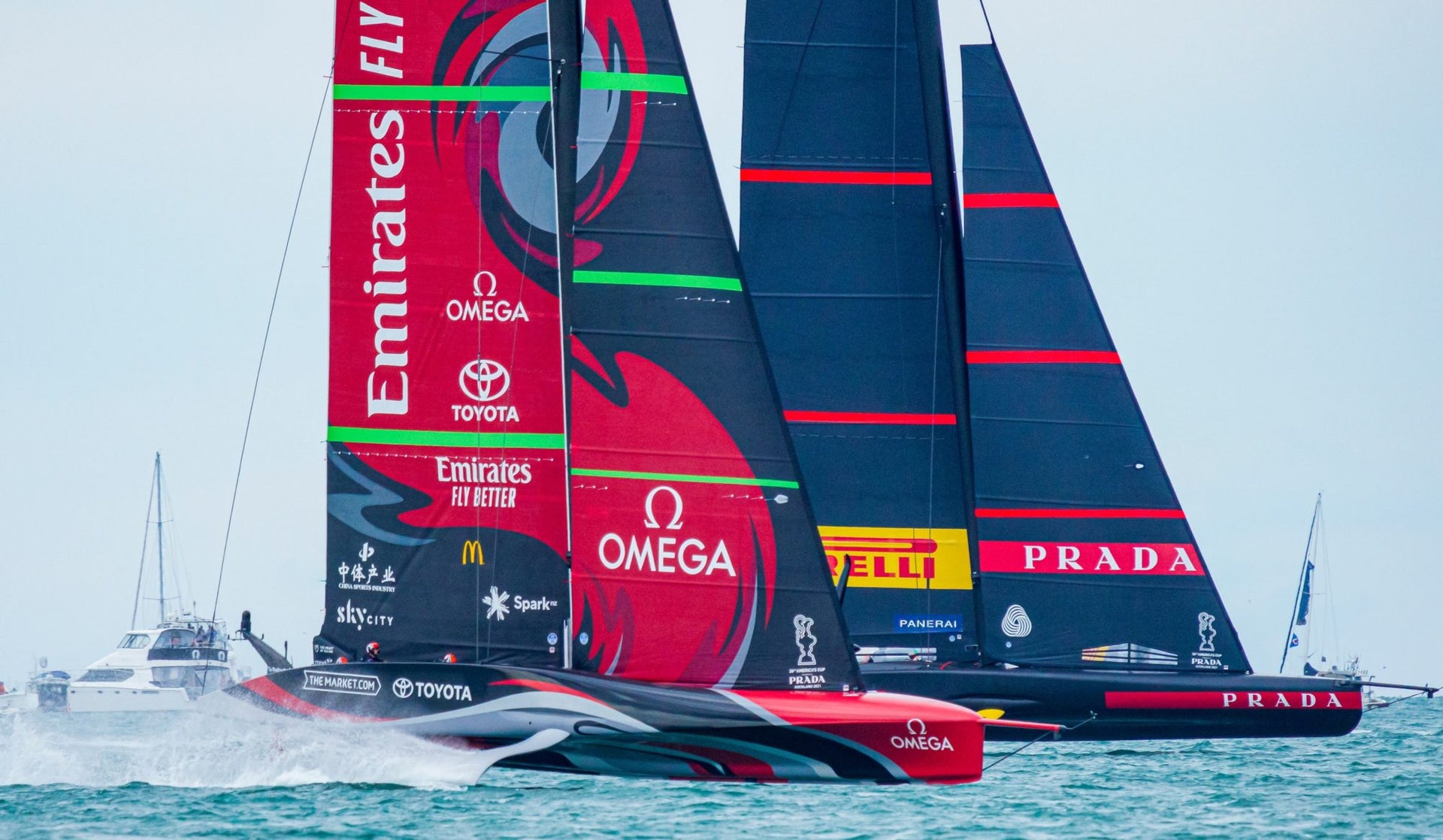
BEHIND THE SCENES: BONUS PODCAST
BEHIND THE SCENES: BONUS PODCAST
Ken Read, Burns Fallow, Juan Garay, and Marco Capitani Sit Down in Auckland
Sail designer for the Defender, Burns Fallow and the Challenger dynamic duo of Juan Garay and Marco Capitani join North Sails President Ken Read for an insider’s-update on the 36th America’s Cup Match. The podcast is jam-packed with information and insights from the people closest to projects, our North embedded designers.
NorthSails · Special Edition Podcast: America’s Cup Behind the Scenes
READ MORE
READ MORE
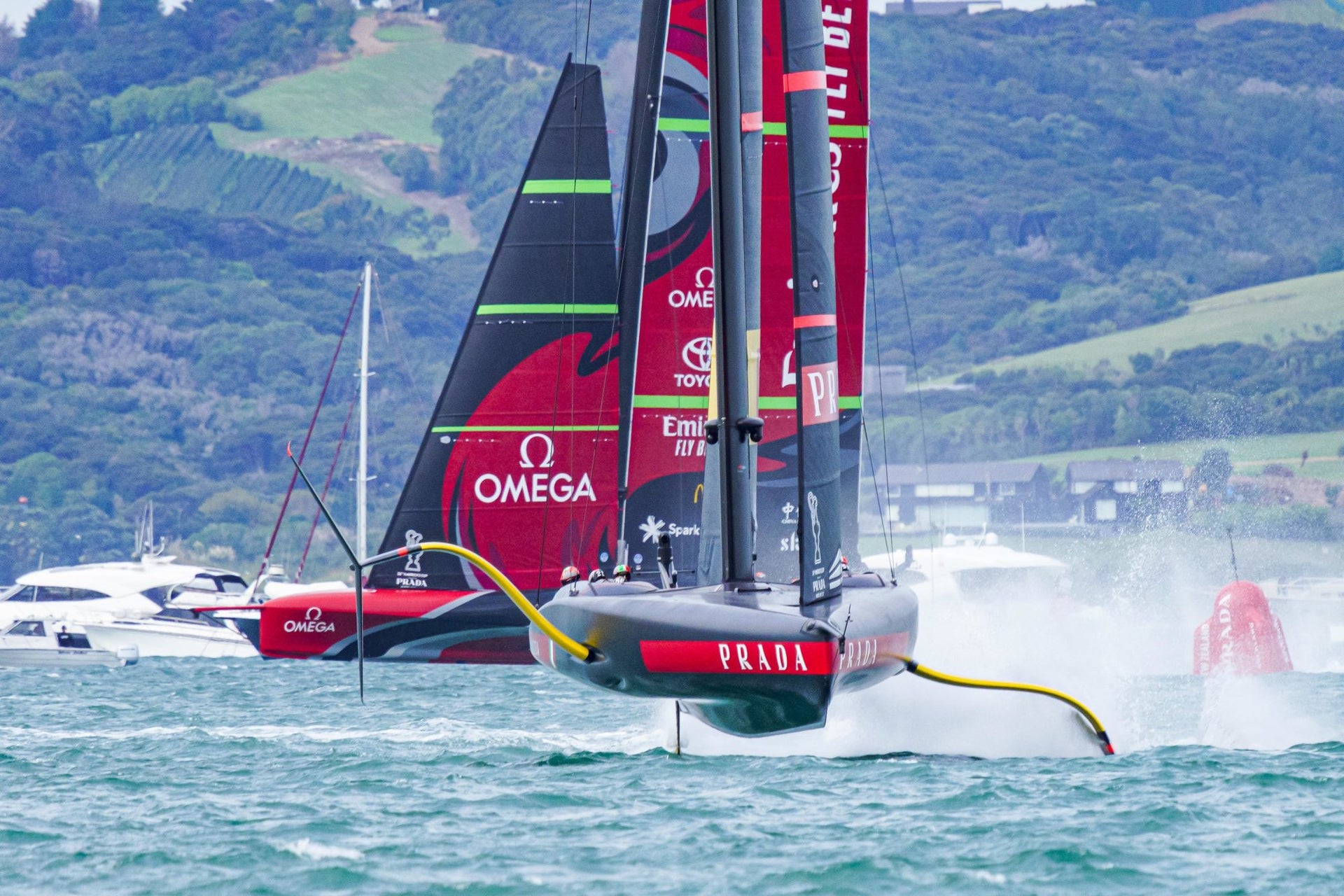
LET'S TALK ABOUT SAILS: AMERICA'S CUP MATCH DAY 1
LET’S TALK ABOUT SAILS: 36TH AMERICA’S CUP MATCH RACES 1 & 2
Two design philosophies, two sail trimming strategies
North Sails and INEOS TEAM UK sail designer Gautier Sergent indulges us once again with his take on the 36th America’s Cup opening races, and the crucial role played by the AC75 sails on that global stage.
He’s prudent – the racing has just started and he knows first-hand the road ahead can be long. “The first day of the Prada Cup between INEOS TEAM UK and Luna Rossa Prada Pirelli was a bit similar, and we know how that ended. Let’s see what happens next.
“But it’s not night and day between the teams, that’s for sure.”
What’s interesting, Sergent notes, was to see each of the teams’ philosophy shine so bright on Wednesday in Auckland. There was no big surprise, no “rabbit pulled out of a hat,” as he puts it. But if their speeds on the water were relatively similar, their design differences showed clearly.
“We’ve seen signs of what was coming during training and as the racing started, each team stuck to their plan.
“On Luna Rossa Prada Pirelli, we’ve noticed that their mainsail was slightly twisted and their mast less bent. In fact, the tension in their vertical rigging seemed quite low. Going upwind, you could see their leeward shroud move. We’ve all seen it before, but we’re not sure whether it comes from structural constraints or something else.
“We’ve also noticed a kink in the forestay at the head of the jib, which means the forestay isn’t under a lot of tension. I think it’s a result of their no-runner philosophy. They have to have runners onboard because of the class rules, but their original concept didn’t include them.”
What does that all mean on the water, then? “They probably use a lot of cunningham tension on the headsails, using the Helix Structured Luff. The two-to-one halyard is another clue supporting this assumption. The Kiwis have a conventional 1:1 jib halyard. That is not to say they are not using some smart sail structure but they would have been working on a different concept.”
He’s observed a difference in behavior on deck, too.
“It looked to me like the Kiwis were a lot more active trimming the jib track – in particular downwind. It’s hard to spot on TV, but that would illustrate their philosophy. They’ve got Glenn Ashby onboard as a dedicated trimmer, while the Italians have separate mainsail and jib trimmers. Sure, they must be communicating all the time, but onboard the Kiwi boat, it seems that it is all coordinated by Ashby. He’s trimming the mainsail, and we’re not quite sure but it’s possible he might be trimming the jib too through some control points.
“But just like Luna Rossa’s two-helmsmen approach, it’s a decision based on the actual skills of the people involved. We know Ashby is originally a sailmaker, he’s dedicated to sails so it’s natural for him to do that on Te Rehutai.”
There is no better or worse, at least for now. Just different design choices that have influenced the sail shapes, structures, and trimming tactics.
“Both teams had the same sail area up so their crossovers must be very close,” adds Sergent. “The boats look really different visually but must have relatively similar performances and aerodynamic needs.”
That, however, won’t last forever. It might be one-all for now, and these different approaches might have delivered similar results so far because of the wind conditions on day one. Going into the weekend, the wind gets considerably lighter (it’s forecasted to be 6 knots max). When we see extremes like this, we are more likely to see more differences between the teams– and we’re more likely to see them reveal their secret weapons. But if there is one thing that’s for certain in the America’s Cup, it’s that in the end, the winner takes it home.
READ MORE
READ MORE
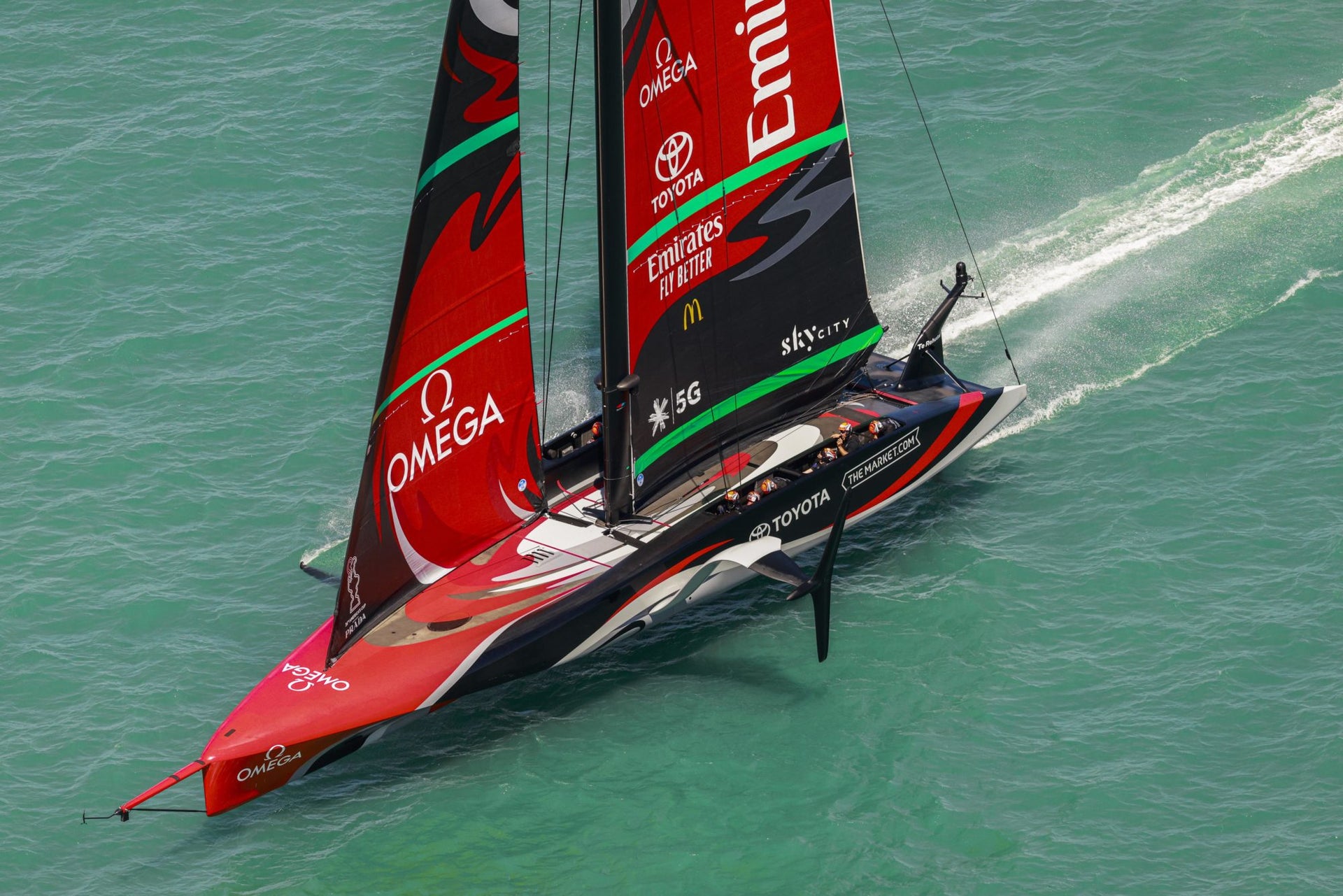
WHAT YOU GOT THERE EMIRATES TEAM NEW ZEALAND?
WHAT YOU GOT THERE EMIRATES TEAM NEW ZEALAND?
Are these sails secret weapons – or are the Kiwis playing mind games?
📸 COR 36 / Studio Borlenghi
Over the past couple of months, Gautier Sergent has had plenty of time to observe and analyze Te Rehutai’s sails.
One of North Sails leading designers, Sergent was embedded with INEOS TEAM UK in the 36th America’s Cup and has been in Auckland, New Zealand since August. With all eyes on the America’s Cup races later this week, he’s been paying extra attention to the Kiwis’ AC75.
Truth is, there is no knowing what’s happening behind their Viaduct Harbour base’s doors, but here are a couple of Sergent’s connoisseur comments ahead of the racing.
Is THAT a Code Zero or Whomper Sail?
“We’ve seen them use a very light Code Zero on the bowsprit. The clew point is quite high, and the sail looks like it’s been designed for very, very light conditions. We don’t know for sure, but looking at the material and its geometry, we suspect that this sail is not designed to foil.
“So we think it’s a sail they could use when the boat needs to get to the next patch of pressure quicker and then up on the foil before the other team. It could also help in pre-start or finishing phases. The races have a time limit (of 45 minutes), so if they’re leading but the racing is dragging on, this sail could help them cross the line on time and win a point.”
Remember race one of the Christmas Cup when Emirates Team New Zealand raced against INEOS TEAM UK? The conditions were so light that the race eventually timed out, however, the race could have easily been awarded to a team with a Code Zero- like sail. “It was OK for the Christmas Cup, but you cannot afford to give away points in an America’s Cup match,” Sergent said.
March in Auckland usually brings changeable weather and weaker thermal winds, making the racing conditions reliant on the gradient winds. If there is no gradient, there won’t be wind at all – and with the racing allowed to start at 6.5 knots only, a sail designed for very light conditions might come in handy.
“Remember,” adds Sergent, “it’s also part of the game to show only what you want to show! They might have designed and tested this sail only to decide it didn’t work – but are choosing to show it to get everyone else thinking. Imagine you’ve spent time working on something that’s not performing – you’d want the other teams to waste that time too.
“We’ve yet to see a Code Zero racing in this America’s Cup. It’s such a specific sail that some of the teams have even decided to design bowsprits that can’t carry that sail load. But since Emirates Team New Zealand have tried this specific Code Zero so late in the game, we doubt it’s a mind game.
“What’s funny is that we might never know. If there is no light day, they won’t use it and we’ll keep asking ourselves, was it real… or was it all a mind game?”
To Batwing or not
A couple of weeks ago, the Kiwis were seen trialing a Batwing – a very small mainsail that was first tested by American Magic.
“The rules don’t take potential leech hollows between the girths into account when calculating the sail area,” explains Sergent. “You can actually design a mainsail that’s smaller than the 135 sqm allowed by the class rules by using this bat-like design. These boats are quickly overpowered and you can’t take a reef in, so this Batwing could let you reduce the drag in heavy winds.
“But so far, we’ve only seen the Kiwis try this concept, with an old sail they’ve recut, we haven’t seen them use a new one designed specifically for this. It might just be a way to distract Luna Rossa Prada Pirelli.”
Main course
One more thing caught Sergent’s attention – the mainsail settings onboard Emirates Team New Zealand.
“We can add all sorts of control systems in the top four meters of the mainsail: ropes, boat hooks, everything that makes it possible to control that shape. But we haven’t noticed much of that whenever we looked at the New Zealand team preparing and hoisting their mainsail.
“Plus every other team hoist their mainsail pre-assembled, with both skins already tied together, but the Kiwis bring both skins in different bags and only connect them once the heads are partially hoisted.”
📸 COR 36 / Studio Borlenghi
So, what would that mean performance-wise? Sergent pauses before saying, “It means they don’t have this very sophisticated system to take care of which saves weight which can be used elsewhere and they could potentially change mainsails faster between races.
“We’ve also noticed they can bend their mast significantly more than everyone else, even though the masts are one-design. We’re assuming they’re using their cunningham to do that with a specific sail structure to suit, but we’re not quite sure.
All of that could explain why Emirates Team New Zealand tend to show flatter sails up range and tighter leech settings while Luna Rossa Prada Pirelli usually sail with torqued sail trimmings.
The Kiwis have also lowered the deck by raising the mast base to keep it rule compliant, adding “free” area at the bottom of their mainsail.
These, and a thousand other design decisions, will all come to fruition on Wednesday in Auckland as the New Zealand and the Italian teams face each other in the first race of the 36th America’s Cup.
📸 COR 36 / Studio Borlenghi
READ MORE
READ MORE
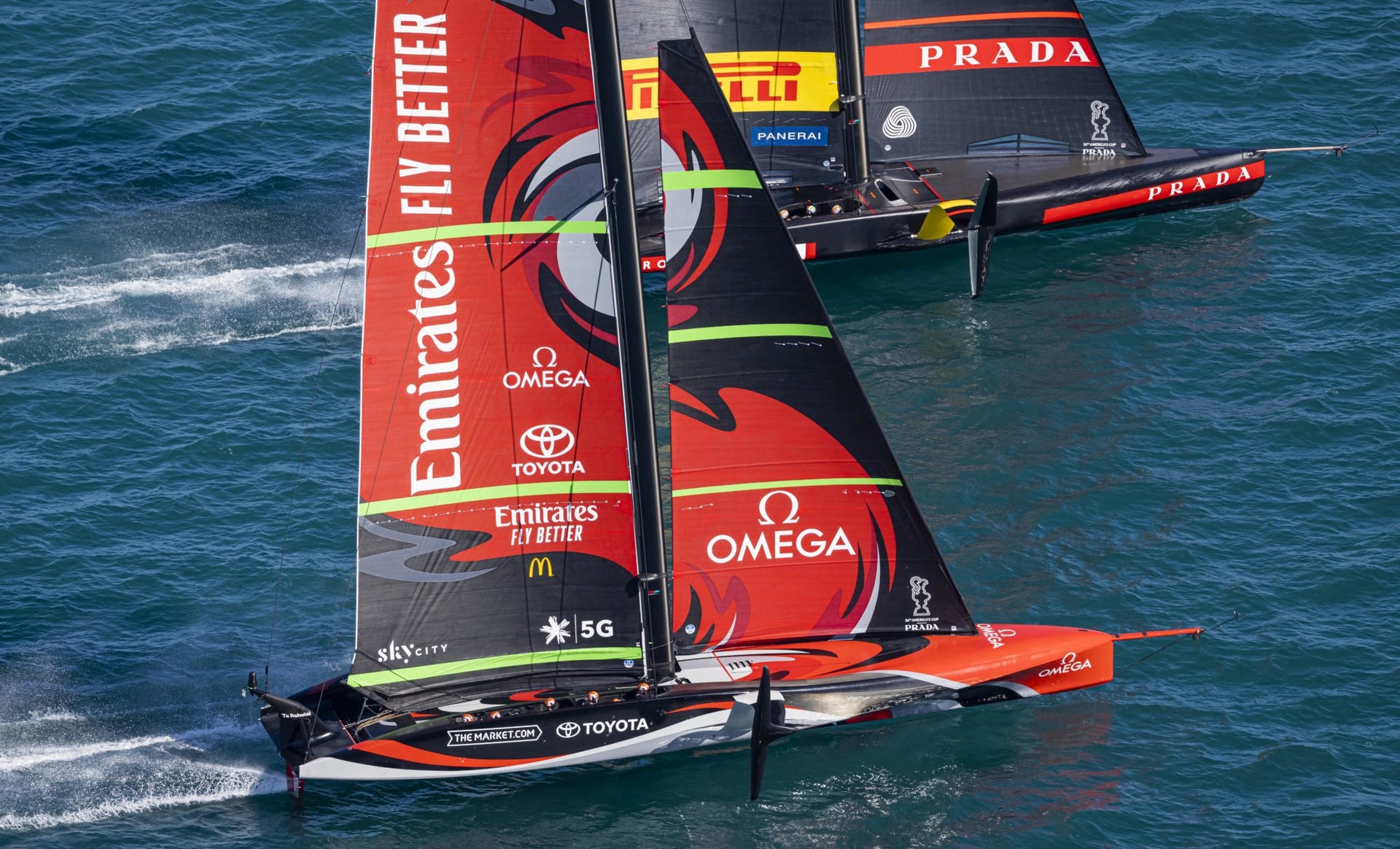
SHIRLEY ROBERTSON'S PODCAST: 36TH AMERICA'S CUP PREVIEW
36TH AMERICA’S CUP PREVIEW WITH SHIRLEY ROBERTSON
Tune in for a two-part podcast with Shirley and special guests as they prepare for the final races
📸 COR 36 | Studio Borlenghi
With the final races of the 36th America’s Cup Match now just moments away, Shirley Robertson previews the action in another two-part podcast from the heart of the action in Auckland New, Zealand.
The two-part podcast kicks off with an interview with the port side helm of the successful Challenger, the AC36 Challenger of Record, Luna Rossa’s Francesco Bruni. Bruni has been at the forefront of the Italian team’s significant improvements in performance over this campaign, and is both realistic and candid as he discusses their Prada Cup success. He attributes much of that success to the calm and level head of co-helm, Jimmy Spithill, and is both respectful and hopeful when quizzed about their Cup opponents, Emirates Team New Zealand.
Part one features a discussion with Francesco Bruni, Robertson talks to Emirates Team New Zealand supercoach Ray Davies. Davies is a mastermind of the new world of Cup racing, and has been a proud member of the Kiwi outfit for almost two decades. The gossip around the harbourside in Auckland of late has been of the team’s sensational speeds out on the water and Davies is quick to dispel any chat that the team are anything but race ready. While the Challengers have all been fighting out against each other, the Defender has been clocking up the training miles out in the Hauraki Gulf, and as competition draws near, Davies is clear on how pleased he is with the team’s progress.
Both Bruni and Davies discuss their thoughts on their respective opponents, their thoughts on how the racing has been to date, and how and where the match may be won and lost. Ahead of the first to seven wins match, it’s an insightful listen to augment enjoyment of the upcoming broadcast.
In part two of the Cup Preview, Robertson looks back on the Prada Cup Challenger Selection Series with fellow broadcast commentator and America’s Cup veteran Kenny Read. The pair discuss the performance of the three Challengers, before being joined by special guest, David ‘Freddie’ Carr. Freddie, a one time Extreme 40 team mate of Robertson’s, is the lynch pin of the INEOS TEAM UK grinding unit.
Freddie talks honestly about the teams turn around of fortune, before moving on to the loss to Luna Rossa Prada Pirelli. Carr discusses how he thinks the Cup Match may pan out, before leaving Robertson and Read to go over their thoughts on the upcoming action.
As a preview to the upcoming first to seven wins regatta, it’s an insightful hour of chat to take in before racing resumes out on the waters of the Hauraki Gulf.
READ MORE
READ MORE


